

Transporter
- View history

Constitution II -class transporter room
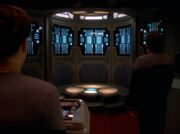
Defiant -class transporter room
The transporter was a type of teleportation machine, or simply teleporter . It was a subspace device capable of almost instantaneously transporting an object from one location to another , by using matter-energy conversion to transform matter into energy , then beam it to or from a chamber , where it was reconverted back or materialize into its original pattern. ( TOS : " The Squire of Gothos ", " The Savage Curtain "; PRO : " First Con-tact ")
Alternate names for the transporter included matter stream converter , energy-matter scrambler , or transporting device . ( TOS : " The Savage Curtain ", " The Empath "; ENT : " Broken Bow ", " Vanishing Point "; TNG : " Ship In A Bottle "; VOY : " Ex Post Facto "; SNW : " The Broken Circle ") The Organians referred to Klingon transporters as material transmission units . ( TOS : " Errand of Mercy ") The Ferengi referred to theirs as a matter-energy device . ( TNG : " The Last Outpost ") Spock determined that the device used by the Vians that beamed himself, Leonard McCoy , and James T. Kirk to an underground location on the planet Minara II , was what he described as a matter-energy scrambler . ( TOS : " The Empath ")
Someone who was transported by a transporter beam was known as a transportee . ( TOS : " Day of the Dove ")
- 1.1 20th century
- 1.2 21st century
- 1.3 22nd century
- 1.4 23rd century
- 1.5 24th century
- 1.6 25th century
- 2.1 Safety features, protocols, and components
- 2.3 Diagnostic and maintenance tools
- 2.4 System components
- 3.1 Personnel
- 3.3 Portable
- 3.4 Emergency
- 3.6 Micro-transporters
- 3.7 Non-"beam" transporters
- 3.8.1 See also
- 4.1 Accidents
- 4.3 Shields
- 4.4 Warp speed
- 4.5 Faster-than-warp speeds
- 4.6 Radiation and substances
- 4.7 Devices
- 4.8 Transporting the injured
- 5.1 Automatic return
- 5.2 Disabling active weapons
- 5.3 Falsifying disintegration by a phaser
- 5.4 Connecting two transporters
- 5.5 Intraship beaming
- 5.6 "Site-to-site" transport
- 5.7 Transporter trace
- 5.8 Deflecting the transporter beam
- 5.9 Single-person transport
- 5.10 Faking a transporter accident
- 5.11 Emergency mass beaming
- 5.12 Narrow confinement beam
- 5.13 Skeletal lock
- 5.14 Offensive use
- 5.15 Medical transports
- 5.16 Rematerialization without clothes
- 5.17 Other operations
- 6.1.1 Origins
- 6.1.2 Sets and props
- 6.1.3 Special effects
- 6.1.4 Legacy
- 6.2 Apocrypha
- 6.3 External links
History [ ]
20th century [ ].
The Vulcans had teleporter technology since at least as early as the late 20th century . This might have been an early version of the standard transporters that were later used in the Federation . ( PIC : " Mercy ")
21st century [ ]
Circa 2069 , the planet Terra 10 was colonized by a group of Humans from Earth . They were considered a lost colony as they had lost communication contact with United Earth until the 23rd century , when they were re-discovered by the crew of the USS Enterprise .
During this period, the Terratins either retained prior knowledge of transporter technologies or developed their own. It might have predated development of the technology on Earth. ( TAS : " The Terratin Incident ")
22nd century [ ]
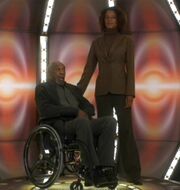
Emory Erickson, the inventor of the transporter, with daughter, Danica Erickson
Although transporters had been used by many civilizations throughout history , the first transporter to be made on Earth was invented sometime prior to 2121 , originated by Emory Erickson , who was revered as the " Father of the Transporter". The first operable transporter was developed around 2124 .
Erickson later recalled his experience as the first person to go through a transporter, which he was terrified to attempt. According to Erickson, " that original transporter took a full minute and a half to cycle through. Felt like a year . You could actually feel yourself being taken apart and put back together. When I materialized, first thing I did was lose my lunch . Second thing I did was get stone drunk . " Years later, Erickson lamented that " during the initial tests for the transporter, some brave men and women were lost, " adding, " not a day goes by that I don't think about them. " Though his vision was a success, he could never recapture his past glory, as his follow up efforts with sub-quantum teleportation were never realized, an effort that ultimately led to the loss of his son, Quinn . ( ENT : " Daedalus ")
In an illusion created during Hoshi Sato 's eight seconds in the pattern buffer , her mind created a fictional story of a man named Cyrus Ramsey . In this apparent ghost story , as told through an illusion of Trip Tucker , an event occurred in Madison , Wisconsin in May 2146 , where " Ramsey was a test subject for the first long-range transport. Just one hundred meters . Something went wrong with the pattern buffer. He never rematerialized. " Malcolm Reed , who couldn't believe that Sato had never heard the story before, since one could not " go on a survival overnight without hearing a story about someone seeing Ramsey's molecules rematerializing on a foggy night . " ( ENT : " Vanishing Point ")
Early Starfleet efforts in the application of transporter technology were similar to 24th century transporters used by the Ligonians , but Ligonian transporters used the Heglenian shift method to convert matter and energy. ( TNG : " Code of Honor ")
Enterprise NX-01 was one of the first Starfleet starships to be equipped with a transporter authorized for transporting biological objects. Initially, however, it was utilized only sparingly, due to a general distrust of the technology held by Enterprise crew members. (The captain himself refused to put his dog through the system.) Its use became much more common during Enterprise 's search of the Delphic Expanse . ( ENT : " Broken Bow ", " Strange New World ", " The Andorian Incident ", " Fortunate Son ", " Hatchery "; " Countdown ", et al. )
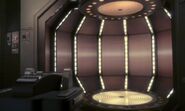
These early transporters were not very reliable, and, even after Enterprise 's mission, most were authorized for non-biological transports only. Even when transporter use became commonplace, most Humans and other races at a similar stage of technological development preferred traditional methods of travel. ( ENT : " Strange New World ", " The Andorian Incident ", " Daedalus ")
As Starfleet continued its exploration of space, dependence on transporters grew significantly. Transporters could simplify away missions considerably by eliminating the need for a shuttlecraft . In case of emergencies (medical or otherwise), the time saved could mean the difference between life or death. ( ENT : " Strange New World ")
Before 2164 , on at least Freedom -class starships , the transporters were only meant for cargo and not organic matter. However, they could be modified to transport organic matter with some risk. ( Star Trek Beyond )
23rd century [ ]
With the advent of safer transporters, biological transport became increasingly common, which led to the appearance of the first transporter-related diseases. The best-known disease was transporter psychosis , which was diagnosed in 2209 on Delinia II . Following the perfection of the multiplex pattern buffers , such cases were virtually eliminated. ( TNG : " Realm Of Fear ")

A Lateral Vector Transporter in use in 2249
By 2249 , further advancements were made in perfecting the technology, this time by reducing power consumption. Older units, such as lateral vector transporters had been discarded on Vulcan due to the massive amount of power they required. Starfleet had also phased them out, but some older ships, such as the Walker -class USS Shenzhou , still had them installed. ( DIS : " Battle at the Binary Stars ")
24th century [ ]
Transporters became the most reliable form of short-range transport by the 24th century . ( TNG : " Realm Of Fear ")
Most space-faring civilizations of the Alpha and Beta Quadrants employed transporter technology for short-range transport of personnel and equipment, however the technology was still rather unknown in the far reaches of the Delta Quadrant . To these species, the many advantages to utilizing transporters and replicators made the technology a point of contention, especially between the Kazon and the crew USS Voyager . ( VOY : " Caretaker ", " Maneuvers ", et al.)
Traveling by transporter was essentially instantaneous and an individual's sense of time while transporting was effectively non-existent. Benjamin Sisko and Harry Kim , while training at Starfleet Academy in San Francisco , frequently transported to New Orleans and South Carolina , respectively, to see their parents. ( DS9 : " Explorers "; VOY : " Non Sequitur ")
Innovations in transporter technology around this time included safer site-to-site transport , which allowed for transport between two locations without first returning to a transporter room . ( TNG : " The Game ", et al.)
25th century [ ]
In 2401, Starfleet's transporter systems were tampered with by rogue Changelings allied with the Borg . They infiltrated Starfleet and implanted Jean-Luc Picard 's Borg-altered DNA into the transporter system as 'common biology' that would only manifest in those whose brains had yet to finish development (in humans under 25). The result was that every Starfleet officer within those criteria had been given Picard's 'receiver' gene, which would render them susceptible to Jack Crusher 's transmitter gene. The Borg Queen assimilated Jack and exploited this to assimilate all affected Starfleet personnel on Frontier Day . ( PIC : " Võx "). Following the defeat of the Borg, Doctor Beverly Crusher devised a method of using the transporters to remove the Borg-altered DNA and to uncover disguised Changelings. ( PIC : " The Last Generation ")
By the 29th century , Starfleet had developed temporal transporter technology that allowed travel through time in a very similar manner to standard transporters of earlier centuries. ( VOY : " Relativity ")
Operations [ ]
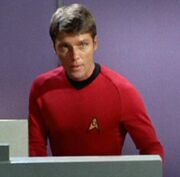
Transporter chief Wyatt
In general, a transporter chief was responsible for the operational readiness, maintenance and repair of a ship or station's transporter systems.
A typical transport sequence, generally initiated by the request to "energize", began from the transporter console with transporter pre-sequencing that, once complete, transporter coordinates were established on the object or destination by the targeting scanners , which thereafter a transporter lock was made. ( VOY : " Jetrel ", " Initiations ", " Twisted ")
Simultaneously, the object was broken down into a stream of subatomic particles, also called the matter stream . ( TNG : " Datalore ") The transporter signal was then transferred to the pattern buffer, then again transferring to the emitter array . ( VOY : " Eye of the Needle ", " Twisted ") The matter stream was then transmitted to its destination across a subspace domain . ( TNG : " The Best of Both Worlds, Part II ") When used, a transporter left residual ionization in the air . ( TNG : " The High Ground ")
Of this whole process, one did not feel a thing. ( TNG : " The Dauphin ")

Transporter effect of the alternate reality 's USS Enterprise
In 2258 of the alternate reality , the transporter operation process included the use of the annular confinement beam, followed by electromagnetic focusing and the use of a gravitational compensator . The transporter operator then applied a temporal differential and engaged a particle lock . ( Star Trek )
23rd century Klingon transporter systems shared the same basic technology as Federation transporter systems. Even though the transporter systems of an Intrepid -class were much more sophisticated than those of a D7 class , the targeting scanners worked on the same principles. With exception of the more advanced systems having had the ability to expand transporter buffer capacity, they really were not all that different. ( VOY : " Prophecy ")
As of 2368 , Cardassian transporting systems still operated with active feed pattern buffers. ( TNG : " The Wounded ")
Also during this time frame, Romulan transporters were known to operate on a similar subspace frequency to those used aboard Federation starships, and with only a few minor adjustments, they could be made to simulate the transporter carrier waves used by their Federation counterparts. ( TNG : " Data's Day ")
From its earliest incarnations until the 2270s , transporters generally immobilized the subject being beamed during dematerialization and rematerialization. Advances in transporter technology after that point allowed a person being transported to move or converse, during the process, in a limited fashion. ( Star Trek: The Motion Picture , Star Trek II: The Wrath of Khan )
By the 24th century, emergency transporter armbands , transponders and combadges could be programmed to remotely activate a transporter. Normally, remote transporter activation was limited to emergencies or when the crew of a vessel was not on board. ( TNG : " The Best of Both Worlds ", " Realm Of Fear "; DS9 : " The Jem'Hadar ")
Safety features, protocols, and components [ ]
As with other Starfleet technology, the transporter had its own set of safety features, protocols, and procedures. In an emergency, many of these safety systems could be modified or circumvented.
Early versions of the transporter in the 22nd century appeared to have no protection against external incursions into an active transport. "Foreign matter," such as blowing debris, could get caught up in the transport and become embedded or integrated into the subject. ( ENT : " Strange New World ") Energy weapons fire would also affect the subject, unless it was sufficiently far into the transport that the fire passed through it harmlessly. ( ENT : " Broken Bow ", " Countdown ") By the late 23rd century , however, transporters shielded the subject from these external incursions. ( Star Trek VI: The Undiscovered Country ; TNG : " A Matter of Perspective ") They could even neutralize particle weapon fire initiated during transport. ( TNG : " The Most Toys ")
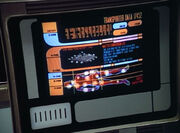
Seven of Nine's transporter data
Biofilters were uniformly used on all Federation transporters by the 24th century. These filters functioned to decontaminate transported objects and prevent harmful substances, pathogens, and even certain forms of radiation (including theta radiation ), from contaminating the rest of the ship or station. This process replaced earlier systems that required the subject to be fully rematerialized on the transport platform before applying an energy-based process to topically decontaminate the transportee. ( VOY : " Macrocosm ", " Night "; TOS : " The Naked Time ")
Though the biofilters performed a general contaminant removal with each transport, they were far from perfect; previously unknown infections or viruses occasionally failed to register, requiring the filters to be recalibrated to recognize the new threat. As such, biofilters were incapable of filtering out certain types of substances and pathogens, most notably psychic energy. ( TNG : " Lonely Among Us ", " Power Play ")
Biofilters were also unable to detect and filter certain types of phased reality lifeforms without prior calibration. Biofilters also functioned to detect and disable weapons and explosives ( remat detonators , for example). ( TNG : " Realm Of Fear ", " The Schizoid Man ", " The Most Toys ")
The transporter also saved biological data of the individuals transported. In 2374 , The Doctor was able to give a diagnosis on Seven of Nine 's irrational behavior after studying her last recorded transporter data. ( VOY : " The Raven ")
When knowingly transporting material considered a biohazard , such as a virus , a bio-transport authorization was used to document the material's nature and approve the transport. ( TNG : " The Child ")
Except in cases of extreme emergency, protocols prohibited transporting objects while traveling at warp speed. ( TNG : " The Schizoid Man ") Such transports are possible, however, if the two vessels match warp velocities. ( TNG : " The Best of Both Worlds "; VOY : " Maneuvers ")
During the 22nd century, standard Earth transporter systems had a range of ten thousand kilometers ; however, by the 24th century, the maximum range of standard transporter systems was about forty thousand kilometers, though a special type of transport, called subspace transport , could beam over several light years . ( ENT : " Rajiin "; TNG : " A Matter Of Honor ", " Bloodlines ") Many 24th century starships were equipped with an emergency transporter system, but these only had a range of, at best, ten kilometers. ( VOY : " Future's End ")
Although having a maximum range of about forty thousand kilometers, some conditions adversely affected the effective range. In at least one instance – due to missing components of Voyager 's primary computer systems – the starship Voyager had to be within five hundred kilometers of a planet's surface to use transporters on Kathryn Janeway and a hologram of Leonardo da Vinci . ( VOY : " Concerning Flight ")
The maximum range of a transporter differed by species, depending on what kind of technologies they used to build it. The transporter with the longest known range was that of the Sikarians , with a range of about forty thousand light years; however, this was due to their planet 's large quartz mantle, which amplified their transporter signal. Because of this, Sikarian transporter technology worked only on their homeworld . ( VOY : " Prime Factors ")
The Traveler's of Tau Alpha C possessed transporter technology with a range of at least a thousand light years, according to Spock . Montgomery Scott later noted that Seven's beam was so powerful it fused all recording circuits, and therefore he could not say exactly how far it transported Seven, or even whether it transported him through time. Exactly how they achieved this effect remains unknown, since there has been no subsequent contact with them, and they hide their entire homeworld in some fashion. There were, however, other indications that their technology was considerably advanced beyond that of the 23rd century Federation. ( TOS : " Assignment: Earth ")
The Vedala , one of the oldest space-faring races, also possessed transporter technology capable of beaming people and equipment to and from other planets (presumably in different star systems). ( TAS : " The Jihad ") Dominion transporter technology, enhanced with a homing transponder , was said to have had a range of at least three light years. ( DS9 : " Covenant ")
Diagnostic and maintenance tools [ ]
- Magneton scanner
- Micro-resonator
- Parametric scanner
- Synchronic meter
- Test cylinder
System components [ ]
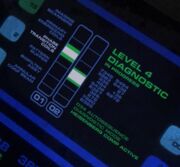
A level 4 diagnostic listing several key components
- Annular confinement beam
- Biofilter assembly
- Emitter array
- Gravitational compensator
- Heisenberg compensator
- Imaging scanner
- Inducer module
- Materializer
- Molecular imaging scanner
- Particle lock
- Pattern buffer
- Phase discriminator
- Phase inducer
- Phase transition coil
- Primary energizing coil
- Rematerialization subroutine
- Rotational compensation
- Site-to-site transport interlock
- Targeting scanner
- Transporter console
Transporter types [ ]
Almost all Starfleet facilities and starships were equipped with at least one transporter device. The number of transporter devices differed; for example, most shuttlecraft had one transporter while Galaxy -class starships had twenty. ( TNG : " 11001001 ")
On ships where cargo bays were present, cargo transporters could often be found, as well.
Production of Mark V transporters was halted in 2356 . By 2371 , Mark VI transporters were considered outdated. Mark VII transporters were able to transport unstable biomatter , as long as the phase transition inhibitor was adjusted. ( DS9 : " Family Business ")
Personnel [ ]
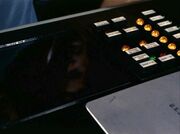
Transporter console, 2254
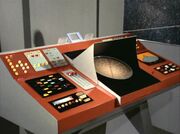
Standard duotronic transporter console (ca. 2260s )

Transporter console in the alternate reality 's 2258
The most commonly used type of transporter was the personnel transporter, designed primarily for personnel.
Personnel transporter rooms usually consisted of a transporter console , a transporter platform with an overhead molecular imaging scanner , primary energizing coils , and phase transition coils .
A pattern buffer with a biofilter was typically located on the deck below the transporter room. The outer hull of a starship incorporated a number of emitter pads for the transporter beam. ( TNG : " Realm Of Fear "; VOY : " Macrocosm ")
Personnel transporters worked on the quantum level to enable secure transport of lifeforms. Biofilters built into the transporter systems prevented dangerous microorganisms from boarding the ship.
Transporter platforms had a variable number of pads, arranged in various layouts (by model and by manufacturing race).
The transporters installed on Earth's NX-class starships featured one large circular pad that took up the entire platform. It was large enough to transport two to three people, provided they stood close together.
By the 23rd century, Federation transporter platforms featured multiple independent pads, typically six in a hexagonal configuration. One- and two-pad platforms were also available.
This became something of a standard layout for Federation transporters well into the next century. As an example, the platforms used on board Galaxy -class starships had the familiar six individual pads, with an over-sized pad (in the center of the platform) that could handle small cargo.
The model of transporter installed on board Defiant -class starships featured a ¾ circular platform and three personnel pads in a triangular formation.
Some 23rd century Klingon platforms featured six hexagonal pads in a straight line. Others, such as those on Birds-of-Prey , featured a small number of platforms in a tight group. ( Star Trek IV: The Voyage Home ; Star Trek VI: The Undiscovered Country )
Cardassian transporter platforms in the 24th century featured three to five triangular pads placed close together, such as those installed on Deep Space 9 .
The personnel transporter was a reliable but sometimes fragile piece of equipment. The phase coils , in particular, were vulnerable to feedback patterns and could be severely damaged as result of power surges or low-level phaser fire. ( TNG : " Brothers ")

A cargo transporter aboard a Galaxy -class starship
Cargo transporters were larger-scale versions of personnel transporters and were optimized for the transport of inanimate objects. These transporters were adapted to handle massive quantities of material. ( TNG : " Symbiosis ", " The Hunted ", " Power Play ")
In case of an emergency, cargo transporters could be reset to quantum-level mode, making lifeform transport possible. One reason for such a reconfiguration was to expedite an evacuation of personnel. ( TNG : " 11001001 ")
Cargo transporters were mostly found inside the cargo bay of a starship or space station . On Level 97-C of the Spacedock -type Starbase 74 , there were four cargo transporters. ( TNG : " 11001001 ")
Dedicated cargo transporter platforms used by Starfleet in the 24th century typically featured one large circular or oblong pad. ( Star Trek: The Next Generation )

A transporter aboard the USS Franklin
In the alternate reality , the USS Franklin was only equipped with cargo transporters. After the discovery of the Franklin 's wreckage, Montgomery Scott was able to modify the transporters to beam lifeforms, though he only beamed Spock and Leonard McCoy on board one at a time so as not to risk splicing them together . With aid from Pavel Chekov , Scott was able to further modify the transporters to beam groups of twenty at a time though the transporters needed to recharge after at least two groups of twenty in a row. After Scott's modifications, the transporters were also able to beam two lifeforms and a motorcycle in motion to a destination. ( Star Trek Beyond )
Portable [ ]
Portable transporters were self-contained units capable of direct site-to-site transport . While having the capability to be moved from one place to another, they were known to be rather large and bulky. ( DS9 : " Visionary ")
In 2372 of an alternate timeline , Tom Paris owned an advanced, portable, site-to-site transporter device capable of transporting itself along with its payload. This device was small enough to be carried easily on a person. ( VOY : " Non Sequitur ")
Emergency [ ]
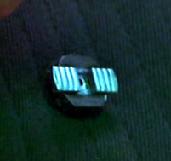
An emergency transport unit
Emergency transporters were a special type that had a low power requirement; in case of a ship-wide power failure, the crew could use these transporters for emergency evacuation. ( Star Trek: The Next Generation Technical Manual ; VOY : " Future's End ")
By the late 24th century, emergency transport was further improved through Starfleet's development of a single-person, single-use, one-way emergency transport unit . The device was small enough to be hand-held and could transport to specified coordinates with a single touch. Because of its extreme limitations, this device was not widely deployed and was still considered a prototype in 2379 . ( Star Trek Nemesis )
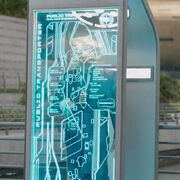
A public transporter in use
Public transporters were standalone transporter stations available for use by the civilian population of Starbase Yorktown . These automated units featured a selection of pre-programmed destination coordinates available to each user, allowing access to many public locations throughout the starbase. ( Star Trek Beyond )
By 2399 , Starfleet Headquarters had public transporters in a gatelike configuration, which visitors could use to be directly beamed to the premises. ( PIC : " Maps and Legends ")
Micro-transporters [ ]
By 2375 , the Federation had developed a micro-transporter – essentially a scaled-down version of a regular transporter – which was capable of transporting small amounts of material within an almost-imperceptible span of time. When attached to a TR-116 rifle , it could be used to transport the bullet to anywhere within the transporter's range, where it would continue at its original velocity until striking a target. ( DS9 : " Field of Fire ")
Non-"beam" transporters [ ]
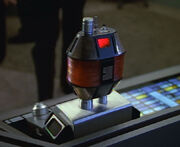
The spatial trajector , an example of a non-beam transporter
Certain species experimented with transporters that differed in technology and theory than those used by most species encountered by the Federation.
The Sikarians were known to use a folded-space transporter , relying on dimensional shifting rather than matter-to-energy conversion. Similarly, the Iconians perfected their own form of transport, known as gateways , which were capable of near-instantaneous transport over vast distances. ( VOY : " Prime Factors "; TNG : " Contagion ")
Other transporter technologies [ ]
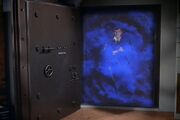
Gary Seven emerges from the transporter chamber's fog

Gary Seven's office, with the transport chamber hidden in the background
Gary Seven possessed an advanced form of transportation technology that he used to transport around the planet Earth and back to his home planet more than a thousand light years from Earth. When in operation, the chamber produced a cloud of a blue fog-like substance that enveloped the chamber. The chamber was controlled by the Beta 5 computer and was the first known transporter to be in use on Earth, especially given the time period of 1968 .
The transporter beam could be intercepted by another transporter unit. This occurred when Gary Seven was in transit to Earth and his beam was accidentally intercepted by the USS Enterprise commanded by James T. Kirk . This would seem to dictate that both transporter technologies work on similar principles. Seven's device appeared to be more powerful than that of the Enterprise , for it was able to re-direct the transporter beam of the Enterprise back to it, and instead of Gary Seven re-materializing in the transporter room of the Enterprise , he re-materialized in his own device.
When not in use, the chamber door, which resembled that of a safe when it was closed, was hidden behind a shelf holding Martini glasses. The shelf and the brown wood finish surrounding it split down the middle and slid into the adjacent walls, allowing the chamber door to open. This action was achieved by moving the right pen on Gary Seven's desk downward. ( TOS : " Assignment: Earth ")
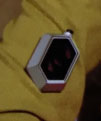
An Aldean transport device
The Aldeans wore a small device attached to the arm that they used to control their transporter through contact with the Custodian . ( TNG : " When The Bough Breaks ")
See also [ ]
- Folded-space transporter
- Lateral vector transporter
- Matter-energy scrambler
- Molecular transporter
- Multidimensional transporter device
- Sub-quantum teleportation
- Temporal transporter
- Translocator
Limitations [ ]
Accidents [ ].
- See : Transporter accident
- See : Transporter suspension
Shields [ ]
In general, transporters could not be used while the deflector shield of a ship was active, or a deflector shield was in place over the destination. However, it was possible to take advantage of EM "windows" that were created by the normal rotation of shield frequencies. During these periods, a hole opened, through which a transporter beam could pass. To use this window, timing needed to be absolute and usually required substantial computer assistance. This technique was theorized and first practiced in 2367 , by USS Enterprise -D transporter chief Miles O'Brien . He happened to know the shields of the USS Phoenix well, including the timing. ( TNG : " The Wounded ")
Magnetic shields could also be used to prevent beaming. Rura Penthe was protected by such a shield to prevent prisoners from escaping. ( Star Trek VI: The Undiscovered Country )
There was a type of shielding that allowed transport, although it had the limitation of not allowing phasers to be fired through it. ( TOS : " A Taste of Armageddon ")
The limitation of transporters versus shields was not universal, however. The Aldeans were able to pass through their own shielding using transporters, though the shielding was impenetrable to other forms of technology and weapons. Similarly, both the Borg and Dominion used transporter technology that was able to penetrate standard Federation shielding. Some adaptations, including rotating shield frequencies, could inhibit this ability but not eliminate it altogether. ( TNG : " Q Who "; DS9 : " The Jem'Hadar ") Voth were able to beam entire starships into a single Voth city ship , despite its shield being raised and running at full capacity. ( VOY : " Distant Origin ")
Warp speed [ ]
Using transporters when a ship was at warp speed was very dangerous because warp fields created severe spatial distortions. ( TNG : " The Schizoid Man ") Therefore, transport at warp generally violated safety regulations. However, at-warp transport was attempted a handful of times, by making a few adjustments. These attempts were usually made under high-stakes combat conditions. ( TNG : " The Best of Both Worlds ", " The Emissary ")
- If both ships maintained exact velocity (that is, the warp field on both vessels must have the same integral value/factor), transport at warp speed was possible. Failure to maintain the same velocities would result in severe loss of the annular confinement beam (ACB) and pattern integrity.
- If the ship was traveling at warp speed and the object to be beamed was stationary, transport was possible by synchronizing the ACB with the warp core frequency. This would cause difficulties in obtaining a good pattern lock. The Maquis were known to have used this method. ( VOY : " Maneuvers ")
- Sometime before 2387 , Montgomery Scott discovered the necessary formulas enabling transwarp beaming . These were passed on to his alternate reality counterpart , but using these to beam onto the USS Enterprise caused him to become stuck in a water pipe leading to a turbine . ( Star Trek )
"Near-warp" transport was also possible, but required extensive adjustments to the transport procedure. It involved the transporting ship energizing its transporters at the same time as it dropped out of warp for just long enough for the matter stream to be transmitted. The ship would then immediately jump back into warp.
Persons who experienced this form of transport subsequently remarked that there had been a brief sensation of being merged with an inanimate object, before the transporter beam reassembled them.
Near-warp transport has also been referred to as "touch-and-go downwarping". ( TNG : " The Schizoid Man ")
Faster-than-warp speeds [ ]
In 2374 , Voyager personnel successfully used Intrepid -class transporters to beam stranded crew members from the USS Dauntless while both ships were traveling within a quantum slipstream . Voyager accelerated on a pursuit course during the transport, bypassing the velocity limitations imposed by warp field dynamics. ( VOY : " Hope and Fear ")
Radiation and substances [ ]
Some forms of radiation and substances, usually minerals such as kelbonite , prevented transporters from working. In most instances, the interference was caused by scattering of the annular confinement beam, or sensor interference preventing a transporter lock. Interference could be natural or artificial and usually occurred during surface-to-starship transport but might also occur between vessels. Examples of other radiation and substance limitations were:
- Thoron radiation
- Dampening field
- Ionic interference (see also Ion storm )
- Hyperonic radiation
- Electromagnetic storm
- Trinimbic interference
Devices [ ]
Over the centuries, numerous devices have been designed to overcome some limitations of transporters, while others were used to intentionally interfere with the operation of transporters.
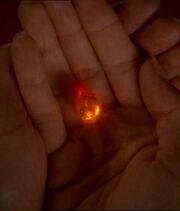
A transporter tag given to Kira Nerys
By the 24th century, usage of pattern enhancers was common aboard most Starfleet vessels, most often deployed to a planet's surface during emergency situations where transport was critical.
Devices that were specifically designed to block transporter signals or to interfere with them were usually deployed under hostile conditions, thus making use of a transporter impossible or very dangerous and hampering maneuverability of personnel or material. Some of these devices were:
- Transporter scrambler
- Transport inhibitor
- Remat detonator
- Scattering field
In 2375 , Vedek Fala gave a small crystal to Colonel Kira Nerys , as a gift. The device, of unknown origin and design, was actually a transporter tag , which instantly transported her to Empok Nor , several light years distant. ( DS9 : " Covenant ")
Also, in 2293 , Spock used a viridium patch to locate and lock on to Captain Kirk and Dr. McCoy on Rura Penthe . While not a transporter device, it was used to locate the subject with the transporter. ( Star Trek VI: The Undiscovered Country )
Transporting the injured [ ]
Although someone with minor injuries could be transported, this was not possible when the injuries were extensive. When the brain stem was damaged and autonomic functions were failing, transport was only possible if a volunteer controlled the person's autonomic functions. This was done by placing a neural pad at the base of the skull of both individuals and then connecting both people via a medical tricorder . This way, autonomic functions could be stabilized for a short period of time, making transport possible. ( TNG : " Transfigurations ")
In 2372 , Odo began to experience the effects of an unknown affliction that he had acquired from his fellow Changelings , which caused the destabilization of his molecular structure . When it was proposed that he be ferried aboard the USS Defiant to the Founders' new homeworld , the crew had to wait for Odo to carry himself aboard the ship. When it was questioned why he couldn't go through the transporter, Doctor Julian Bashir explained that " his molecular structure is scrambled enough as it is, " adding, " [t]he last thing he needs is a trip through a transporter buffer . " ( DS9 : " Broken Link ")
Special operations [ ]
Automatic return [ ].
As of 2269 , transporters could be set to automatically beam back an individual after a prearranged amount of time . In 2269 , James T. Kirk asked Montgomery Scott to set automatic return for ten minutes . ( TAS : " The Terratin Incident ")
Disabling active weapons [ ]
By the 24th century, the transporter had the capability to disable any active weapon during transport. This could be accomplished by removing the discharged energy from the transporter signal, or by "deactivating" the weapon itself. The transporter system included weapons deactivation subroutines to control the process. ( TNG : " The Most Toys ", " The Hunted ", " Rascals ")
The transporter was also capable of removing weapons entirely during transport, a setting referred to by Starfleet as "Transport Protocol Five". When the Defiant beamed aboard survivors from a damaged Jem'Hadar ship, the transporter was programmed to remove the crew's disruptors and other weapons. ( DS9 : " To the Death ")
Falsifying disintegration by a phaser [ ]
Although transports usually took several seconds to complete, it was possible to transport an individual to safety a split-second before they were to be struck by a phaser beam, making it appear as though they had been disintegrated. By 2373 , Section 31 had access to such technology and used it to fake the death of operative Luther Sloan in front of the Romulan Continuing Committee . Since William Ross later told Julian Bashir that Tal Shiar chief Koval had fired a phaser at Sloan, rather than a disruptor pistol , it is likely the weapon had been specially modified and was integral to creating the illusion. ( DS9 : " Inter Arma Enim Silent Leges ")
Connecting two transporters [ ]
Two transporters could be bridged together by means of a system interlock to facilitate direct transport between them. Federation vessels could activate other Federation vessels' transporters remotely by means of this. This meant that two transporters could be connected to each other to allow beaming in situations where it would otherwise not be possible due to ionic or some other type of interference. ( TNG : " Symbiosis ", " Realm Of Fear ")
First, a remote link to the other transporter had to be established, then the system interlock needed to be engaged and the pattern buffers of both transporters were synchronized. When the phase transition coils were in stand-by mode, energizing could commence.
A side-effect of using this form of transport to beam through ionic interference was that the person who was beamed might feel a slight tingling, due to static. ( TNG : " Realm Of Fear ")
Intraship beaming [ ]
In the mid- 2260s , beaming from a transporter pad to a location within the same vessel was a very risky proposition. The limitations of the technology at that time made it highly probable that any error would result in the subject rematerializing within a bulkhead, deck, or other structure. As such, the procedure had rarely been attempted. ( TOS : " Day of the Dove ") The first occurrence of this procedure was used without incident, a century earlier. ( ENT : " Chosen Realm ")
In 2364 , Commander William T. Riker and Lieutenant Tasha Yar used intraship beaming during a rescue. When cargo instead of passengers was beamed aboard, Riker ordered Yar to beam the cargo to the hold. ( TNG : " Symbiosis ")
Intraship transport was apparently both safe and commonplace by the 2360s, as, beyond the aforesaid example, the technique was used a number of times aboard the USS Enterprise -D :
- Captain Jean-Luc Picard and First Officer Riker both beamed from a transporter room directly onto the bridge . ( TNG : " 11001001 ")
- When several Bringloidi were beamed aboard, carrying assorted farm animals, Picard ordered them beamed into Cargo Hold 7. ( TNG : " Up The Long Ladder ")
- While escaping a mind-controlled crew, Wesley Crusher engaged a program that beamed him from Deck 36 to Transporter Room 3. ( TNG : " The Game ")
- Ambassador Ves Alkar 's assistant, Liva , was beamed away from her quarters on command from Captain Picard to prevent her being used by Alkar. ( TNG : " Man Of The People ")
- When rogue Ferengi briefly took over the Enterprise , a plan was devised to capture them by beaming them one-by-one onto a transporter pad secured by a force field . ( TNG : " Rascals ")
- Picard, Riker, and several others transported from a shuttle in its bay directly to the observation lounge . ( TNG : " Gambit, Part II ")
"Site-to-site" transport [ ]
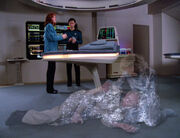
Beaming directly to sickbay
- See : Site-to-site transport
The earliest known example of site-to-site transport carried out by Federation personnel occurred in 1986 , though the transporter was on board a vessel that had traveled back in time from 2286 . The craft which possessed site-to-site capabilities was Klingon in origin but had been stolen by the crew of the late starship Enterprise . ( Star Trek IV: The Voyage Home )
By at least 2268 , limitations in pattern buffer and targeting scanner technology had been sufficiently overcome that it was now possible to transport from one location directly to another without the need to re-materialize the subject in between. ( TOS : " A Piece of the Action ") In the 24th century, this operation was enabled and controlled by the site-to-site transport interlocks . ( TNG : " Brothers ")

A Klingon transporter performs a site-to-site transport
Transporter systems had to be manually configured to prepare for site-to-site transport. This included resetting the pattern buffer controls and checking the targeting scanners. ( VOY : " Twisted ")
Site-to-site transport held the matter stream in the pattern buffer while the ACB was re-targeted. Afterward, the matter stream was redirected to the new location and normal re-materialization was carried out.
Using this technique, any computer terminal with access to the main transporter sub-systems, or any applicable subroutine, could be used to control transporter operations, including bridge terminals. This technique could only be utilized when sufficient energy was available to the transporters; all normal transporter limitations would still apply. ( Star Trek Nemesis )
This procedure was particularly useful in emergency medical situations where time was of the essence. Subjects could be beamed directly to sickbay , where treatment could be carried out quickly. ( TNG : " Tapestry "; Star Trek: First Contact )
In 2368 , Ensign Wesley Crusher used this method in an attempt to outrun those (especially Riker and Worf) whose minds had been taken over by a Ktarian game . ( TNG : " The Game ")
Seven of Nine once initiated a site-to-site transport into Chakotay's quarters. Instead of the door chimes sound, the comm tone is heard (not the boatswain whistle.) She thinks it would be inappropriate to be seen carrying flowers to the first officer's quarters ( VOY : " Endgame ").
Transporter trace [ ]
By the 23rd century , it was common practice to store a "transporter trace" (a stored copy of a subject's molecular pattern as scanned during a normal transporter cycle). While it was usually kept for security purposes, in extreme situations, the transporter could be modified to use an older trace pattern in place of the latest scan for the purpose of re-configuring the matter stream during molecular conversion, effectively replacing a subject with a younger version of itself during matter re-construction. The first known use of this technique was in 2270 , when it was used to restore the crew of the USS Enterprise , whose aging had been reversed to their adult versions. ( TAS : " The Counter-Clock Incident ") Another notable use of a transporter trace was in 2364 , to restore Captain Jean-Luc Picard after an unsuccessful attempt by an alien energy being to merge with him. ( TNG : " Lonely Among Us ")
The transporter trace itself was regularly stored for the duration of the person's tour of duty; when that person was reassigned, his or her trace was deleted. ( TNG : " Unnatural Selection ")
When necessary, a person's DNA could be used to create a transporter trace. This technique was utilized by Chief Miles O'Brien and Lieutenant Geordi La Forge during a mission to the Darwin Genetic Research Station in 2365 .
Transporter traces were also used as a medical tool, to help in spotting anomalies at the molecular level. When comparing the transporter ID traces of Deanna Troi , Data and Miles O'Brien before and after they were taken over by Ux-Mal criminals, Doctor Beverly Crusher was able to detect that their nervous systems were generating high levels of synaptic and anionic energy . ( TNG : " Power Play ") Another example of such an application was in 2373 , when The Doctor used Harry Kim 's transporter trace records to determine when he had been infected with Taresian DNA. ( VOY : " Favorite Son ")
Deflecting the transporter beam [ ]
A transporter beam could be deflected to different coordinates by a tractor beam , so that the objects being transported would rematerialize at a point other than the intended target coordinates. Such action could only be detected by examining the transporter log . An unusual amount of antigraviton particles would be present in the emitter coil , as those particles do not occur naturally but are used by tractor beams. Locating the coordinates at which rematerialization took place was not possible; however, it was possible to calculate the point of origin of the tractor beam itself. ( TNG : " Attached ")
Single-person transport [ ]
A transporter could be programmed to only allow one particular person to be transported to and from the transporter pad . Thus programmed, no other persons could use the transporter. If the use of the transporter was further prohibited, by use of an unknown access code, using the transporter was almost impossible.
The only way to circumvent this lock-out was to use the transporter trace from the person who re-programmed the transporter and to input this into the transporter while it was in its testing mode. When in testing mode, a transporter would accept simulated inputs. When the main computer could not be used, several tricorders could be networked together to control the transporter. To circumvent the lock-out, access codes from a few bridge officers were necessary to force it in a recall loop. Consequently, anyone and everyone who transported would be seen by the transporter as the person who had re-programmed it in the first place. ( TNG : " Brothers ")
Faking a transporter accident [ ]
A transporter accident could be faked in such a way that a transporter chief would think a person died during transport. For example, this could be done by adjusting the carrier wave of a second transporter to the carrier wave of the first. The person would then beam off the first transporter while the second transporter beamed in a small amount of genetically identical material.
Only a doctor could determine if this material was really the person in question. The transporter trace could be used to compare the logged DNA pattern "trace" to the "dead" person. Single-bit errors might be detected, if the "dead" material was replicated .
Only transporters that operated on the same subspace frequency as the spoofed transporter can be used for this type of ruse. For example, some Romulan transporters were capable of this.
Another indicator of such a ruse would be a temporary increase of the matter to energy ratio, while transport was in progress. However, this increase could fall within the nominal operational parameters of the transporter in question. Investigation of the transporter logs would be necessary to find evidence of a second transporter signal. ( TNG : " Data's Day ")
Emergency mass beaming [ ]
Some transporters could transport large numbers of people, and either rematerialize them simultaneously or in groups. However, this was not often done, due to safety reasons. In 2268 , the crew of the USS Enterprise used their transporters in this manner to capture members of the crew of a Klingon ship. In 2377 , the USS Voyager transported over two hundred Klingons off a battle cruiser by expanding the transporter's buffer capacity. In 2380 , Ensign Sam Rutherford used a single transporter room on the USS Cerritos , reconfigured with experimental settings, to simultaneously beam the entire crew of the USS Rubidoux on board. The transportees were left with undesirable cosmetic side effects, but which were temporary, and they were otherwise perfectly fine. ( TOS : " Day of the Dove "; VOY : " Prophecy "; LD : " Much Ado About Boimler ")
Narrow confinement beam [ ]
Setting a transporter's annular confinement beam to a narrow width would sometimes allow it to penetrate some types of shielding or other interference. One noteworthy application of this was to penetrate Borg shields, a procedure developed by scientists Magnus and Erin Hansen . ( VOY : " Dark Frontier ")
Skeletal lock [ ]
USS Voyager Chief Engineer B'Elanna Torres invented an emergency measure of locking a transporter beam onto minerals in the target's skeletal system, in order to allow transport when bio-signs could not be detected from transporting origins. This allowed personnel to be transported back to the ship, even if regular means of transporter lock failed. She came up with it after a conventional signal lock failed, during an emergency beam-out from a Borg cube in 2373 . ( VOY : " Scorpion ")
Offensive use [ ]
In 2373 , Nyrians used a long-range transporter to take control of the USS Voyager by beaming aboard the ship one person at a time, replacing a member of the crew in the process. Initially feigning ignorance and confusion, the Nyrians did not raise suspicion until they had already outnumbered the Voyager crew. By then, however, it was too late; the Nyrians commandeered Voyager and incarcerated the crew inside a simulated Earth-like environment aboard a massive prison ship . It was later revealed that this was an often-used Nyrian strategy, as it was far less costly than engaging in open hostilities. ( VOY : " Displaced ")
In 2374 , pirates used transporters to steal the USS Voyager 's main computer and other critical equipment, rendering the ship's weapons, navigation and propulsion inoperable. This led Tom Paris to remark, " I feel like we've just been mugged. " ( VOY : " Concerning Flight ")
The Vulcan Chu'lak modified a projectile weapon by adding a micro-transporter, allowing him to fire bullets through walls into other rooms. ( DS9 : " Field of Fire ")
Medical transports [ ]
- See : Fetal transport
Rematerialization without clothes [ ]
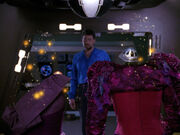
Beamed from their dresses
During Chakotay 's Starfleet career, he was involved in a transporter malfunction. His uniform ended up in a pattern buffer ; he materialized wearing only his combadge . ( VOY : " In the Flesh ")
Removal of clothing using a transporter can also be done deliberately, as a group of Ferengi did to Deanna and Lwaxana Troi in 2366 . ( TNG : " Ménage à Troi ")
Other operations [ ]
- Transporter Code 14
- Near-warp transport
Appendices [ ]
Background information [ ], origins [ ].
The transporter was developed by the production staff of the original series as a solution of how to get crewmen off a planet quickly. The only alternative was to either land a massive ship each week, or regularly use shuttles for landings, both of which would have wreaked havoc on the production budget. ( Star Trek Encyclopedia (3rd ed., p. 519)) Although both of these were proposed in the initial draft of the series outline Star Trek is... (with regular shuttlecraft landings and rare descents of the ship), a revision of the same document (as reprinted in The Making of Star Trek , pp. 22–30) contained one of the first examples wherein the concept of the transporter was outlined. ( [4] ; The Making of Star Trek , p. 26) The description posited a not-yet-named "energy-matter scrambler which can 'materialize' [landing parties] onto the planet's surface." The outline went on to say, " This requires maximum beam power and is a tremendous drain on the cruiser's power supply. It can be done only across relatively short line-of-sight distances. Materials and supplies can also be moved in this same manner, but require a less critical power expenditure. " ( The Making of Star Trek , p. 26)
Gene Roddenberry considered the invention of the transporter to be highly fortunate and " one of many instances where a compromise forced us into creative thought and actually improved on what we planned to do. " He further explained, " If someone had said, 'We will give you the budget to land the ship,' our stories would have started slow, much too slow [....] Conceiving the transporter device [...] allowed us to be well into the story by script page two. " ( The Making of Star Trek , pp. 43–44)
The script of " The Cage ", the first Star Trek pilot episode, referred to the transporter as consisting of a device that dominated the transporter room and "could be an artist's nightmare-conception of a futuristic x-ray machine," as well as a "glassed-in transporter chamber" that the device hovered over.
The depiction of the transporter in TOS : " The Man Trap " was instrumental to that installment becoming the first to ever be broadcast. Though "The Man Trap" writer George Clayton Johnson was unaware of this at the time, Herb Solow informed him, years afterwards, of the transporter's importance in convincing the executives at NBC to air "The Man Trap" first. Johnson relayed, " He told me, 'By going with yours, we were able to open the series with the crew getting aboard the transporter device and beaming down to the planet. By letting the audience watch the transporter in action, and letting them see the crew materialize and dematerialize, we were saved from having to try to explain it.' " ( George Clayton Johnson – Fictioneer , " Star Trek ")
In an early written version of TOS : " What Are Little Girls Made Of? ", the transporter was described as an "energy matter scrambler" (matching how it had been characterized in the aforementioned revised draft of Star Trek is... ). In a series of research notes (dated 11 May 1966 ), however, Kellam de Forest pointed out, " 'Scramble' implies that objects are mixed in an unorganized fashion. The transporter converts the matter of the body into energy. " As a result, de Forest suggested instead referring to the transporter as an "energy matter converter."
Arthur Singer , the story editor for the third season of TOS, had some uncertainty about the function of the transporter, which he expressed around three months after D.C. Fontana left the series as story editor. Regarding how Singer voiced his confusion about the device, Fontana recalled, " [He] wandered onto the set and asked our set decorator, 'By the way, what does that transporter thing do again?' "
The series writers' guide (third revision, dated 17 April 1967 ) stated about the transporter, " Its range is limited to about 16,000 miles. " [5]
The writers/directors guide for Star Trek: Phase II contained the exact same statement. ( Star Trek Phase II: The Lost Series , p. 96) For that series, a "transporter station" was to have been incorporated into the Enterprise bridge, complete with a working transporter. ( Star Trek Phase II: The Lost Series , p. 20) This was to have served as an equipment transporter, for beaming such things as small tools to the bridge. ( text commentary , Star Trek II: The Wrath of Khan (The Director's Edition) DVD ) On 13 October 1977 , Gene Roddenberry posited that transporters of Phase II would be able to beam through the Enterprise 's force field when it was fully raised, by opening a section of the force field in order to make it weak or moderate. ( Star Trek Phase II: The Lost Series , p. 50) However, the writers/directors guide for the series clarified that the Enterprise 's transporter could not be operated while the ship's deflector screen was in operation. ( Star Trek Phase II: The Lost Series , p. 97)
Gene Roddenberry briefly considered – early one day, while Star Trek: The Next Generation was in preproduction – vastly increasing the power of the transporter in The Next Generation to such an extent that no main starship was to have been featured in that series. This unusual suggestion was scrapped by the end of lunch on that particular day.( Star Trek: The Next Generation - The Continuing Mission 1st ed., p. 14) David Gerrold argued against it, pointing out that the Enterprise was necessary for Star Trek to be successful because the ship was "the star of the show." Added Gerrold, " He says, 'Okay. Just throwing that out.' " ( Stardate Revisited: The Origin of Star Trek - The Next Generation , Part 1: Inception , TNG Season 1 Blu-ray special features) Also during the development of TNG, some consideration was given to the possibility of featuring a transporter on the Galaxy -class bridge, though this idea was soon dropped in favor of turbolifts. ( Starlog issue #125, p. 46) Since David Gerrold had listed (in his book The World of Star Trek [ page number? • edit ] ) transporter malfunctions as being a too-overused plot device in the original series, Roddenberry intended to correct this in TNG. ( Star Trek - Where No One Has Gone Before paperback ed., p. 110)
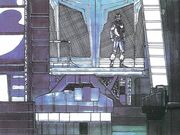
The concept sketch of DS9's transporter by Ricardo Delgado
The transporter and the term "beam" were so relatively easy to account for that they were among multiple reasons for Rick Berman and Michael Piller deciding that a new science fiction series they were asked to create, which ultimately became Star Trek: Deep Space Nine , would be in the Star Trek mold, rather than a brand-new show. Since the design parameters of the series were very well defined, putting a Starfleet-usable transporter aboard space station Deep Space 9 turned out to be "not difficult at all," in Production Designer Herman Zimmerman 's words. The transporter in the station's Operations Center was designed by Ricardo F. Delgado and illustrated in a concept sketch by him. ( The Official Star Trek: Deep Space Nine Magazine issue 3 , p. 6) The creators of the then-new show opted to rely on the fact that transporters had already been established earlier in the Star Trek franchise. " We won't reinvent the transporter – everyone knows how the transporter works, we don't have to explain that any more, " stated Zimmerman. ( Trek: Deepspace Nine , p. 52)
The concept of a long-range transporter was again briefly considered, upon initial development of TNG's final episode, " All Good Things... ". The scene in which it was to be used was soon omitted , though. ( Star Trek: The Next Generation Companion (3rd ed., p. 301))
A transporter was originally not budgeted for inclusion aboard the Defiant -class , which was introduced at the start of DS9's third season . At one stage, however, Herman Zimmerman expected that, as stories and budgets warranted it, transporter facilities would later be added to the Defiant -class. ( Cinefantastique , Vol. 27, No. 4/5, p. 97) A transporter for that class was indeed created, designed by Jim Martin . ( The Art of Star Trek , p. 112) It debuted in season three's " Past Tense, Part I ".
While Star Trek: Enterprise was in development, Executive Producer Brannon Braga initially wanted there to be no transporter on Enterprise NX-01 , though this idea was disputed by executives at Paramount . " [He] thought transporter technology is in the future, " explained André Bormanis , regarding Braga's viewpoint. " Well [...] this became a point of contention with, you know, the powers that be. The compromise we reached was that, okay, it's got a transporter, but it's experimental technology, and they don't really want to use it unless they absolutely have to. And we thought, in the 22nd century, it ought to be more challenging, or better yet, let's not introduce it in the first season . Maybe the second season , they'll upgrade the ship. " ("To Boldly Go: Launching Enterprise , Part I: Countdown", ENT Season 1 Blu-ray special features)
An even earlier transporter had to be depicted in the film Star Trek Beyond , for the 22nd century vessel USS Franklin . Doug Jung , who co-wrote the movie, once commented, " Back then, they didn't actually have Human transporters, you couldn't beam a Human up. So we had to put a line in where Scotty says, 'I made these recalibrations.' " [6]
Sets and props [ ]
The "psychedelic" back wall of the TOS transporter was actually made from reflective, translucent plastic known to musicians as "Drum Wrap" since it's commonly used to adorn the outer cylinders of drum sets. The same plastic later went on to be incorporated into intercoms regularly featured on Star Trek: Enterprise . (" Stigma " text commentary , ENT Season 2 DVD )
The TOS transporter had a "built-in top and bottom lighting setup for the beaming up/down effects," stated Robert H. Justman . ( Star Trek: The Magazine Volume 1, Issue 17 , p. 13) The transporter pads from TOS were simple Fresnel lens es. John Dwyer , a set decorator who worked on both TOS and TNG, explained, " In the original series, the lights in the platform under the round rings were curved lenses, polished in such a way as to make the light really bright, like you have in lighthouses; but they also use them in the bigger stage lights, and that's what these were. " ( Star Trek: The Magazine Volume 2, Issue 12 , p. 25) (See this Flash recreation from a scene deleted from " Mudd's Women " for an indication of the luminosity of a 10,000 watt Fresnel lens.) These components were the only part of the transporter set that remained when the set was redesigned for Star Trek: The Motion Picture . ( audio commentary , Star Trek: The Motion Picture (Blu-ray) ) The Next Generation also used the lenses as the units in the ceiling directly over the pads. ( The Art of Star Trek , p. 78) Dwyer recounted, " [Production Designer] Herman [Zimmerman] said, 'Hey, that's a good idea; let's just keep it!' So we did. " ( Star Trek: The Magazine Volume 2, Issue 12 , p. 25) The same components were additionally included in the transporter of the USS Voyager in Star Trek: Voyager . ( The Art of Star Trek , p. 78) Michael Okuda remembered, " One day during, I think, Voyager , I happened to be working in the catwalks above the set and I was looking at those lenses. Five of them looked yellowed and chipped, so I believe that they were from the original series. One of them looked a lot newer. " (audio commentary, Star Trek: The Motion Picture ( Blu-ray ))
The equipment transporter proposed for the Enterprise bridge of Star Trek: Phase II was actually built. One remnant of its construction, a square arrangement of four green lights, was incorporated into the Enterprise bridge of Star Trek II: The Wrath of Khan . The Regula I transporter in that film involved spotlights reflecting off a glitter ball behind the set, a simple way of achieving the effect of energy patterns on the transporter chamber's back wall. (text commentary, Star Trek II: The Wrath of Khan (The Director's Edition) DVD)
The faint pattern on the insides of the TNG transporter took its inspiration from a sweater owned by Herman Zimmerman, who created the pattern while prepping TNG. Interested in doing something different from the psychedelic moire patterns of the original series' transporter but not having liked any of the patterns that he or his staff devised for potential use, a frustrated Zimmerman finally took off his sweater and declared, " Here, this is what we'll use! " The pattern was thereafter incorporated into the design of the Enterprise -D's transporter, which was reused as the Enterprise -A's transporter in Star Trek V: The Final Frontier and Star Trek VI: The Undiscovered Country . ( text commentary , Star Trek VI: The Undiscovered Country (Special Edition) DVD )
For Star Trek Generations , the transporter of the Enterprise -D was given a new interior lighting scheme that included the addition of amber gels behind some of the upper transporter lenses from TOS. ( The Art of Star Trek , p. 278) Because the original panels from the TNG transporter's back wall had somehow been damaged during preproduction on the film, they were replaced by new but virtually identical panels. ( text commentary , Star Trek Generations (Special Edition) DVD )
At least one of the floor panels from the Enterprise -D transporter was reused as a serving tray in Quark's Bar, Grill, Gaming House and Holosuite Arcade in Star Trek: Deep Space Nine . ( Secrets of Quark's Bar , DS9 Season 1 special features)
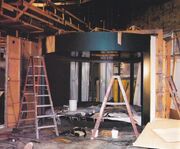
The Intrepid -class transporter set being created for Star Trek: Voyager
According to Star Trek: Communicator , the Intrepid -class transporter incorporated "vertical edge-lit Plexiglas and spiky sonic foam lining the walls." ( Star Trek: Communicator issue 111 , p. 52) According to Kim actor Garrett Wang , the Intrepid -class transporter ceiling used on the set of Star Trek: Voyager was the original ceiling used on Star Trek: The Motion Picture . ( E! Inside Star Trek: Voyager , at 21 minutes)
The floor and ceiling of the transporter aboard the NX-class Enterprise were inspired by the fresnel lenses of TOS. (" Broken Bow " text commentary , ENT Season 1 DVD ) Similarly, the sides of the ENT transporter were deliberately evocative of the walls of the TOS Enterprise transporter. ( Broken Bow , paperback ed., p. 268)
Special effects [ ]
- See : Transporter sound and visual effects
The transporter is the only technology which is commonly used in Star Trek productions but which André Bormanis , at least as of 1996 , deemed as "a real stretch" of the imagination. " The Heisenberg uncertainty principle makes it impossible to know the exact location and energy of any particular subatomic particle. Therefore, were you to disassemble a person as the transporter does, it may well be impossible to put them back together again, " he explained. " We have reason to believe that this is because of some very basic physical facts about the universe and there's no way to get around that. " ( Captains' Logs Supplemental - The Unauthorized Guide to the New Trek Voyages , p. 76)
Although the catch phrase " Beam me up, Scotty " has worked its way into pop culture , the exact phrase itself was never uttered in Star Trek: The Original Series . ( Star Trek Encyclopedia (3rd ed., p. 39)) The closest usage to the phrase came in Star Trek IV: The Voyage Home , when Kirk requests, " Scotty, beam me up. " Similarly, in " This Side of Paradise ", Kirk states, " Beam me up, Mr. Spock. " Only two other instances have used unqualified references to the phrase " Beam me up " – " The Squire of Gothos " and " Time's Arrow ".
According to Michael DeMeritt , the performers who portrayed persons who were beamed up were frequently thrilled to do so. He stated, " This is every actor's dream, whoever gets on Star Trek . 'Please, beam me up.' " ( ENT : " North Star " audio commentary , ENT Season 3 DVD ) Veteran Star Trek actor Vaughn Armstrong cited the transporter as his "favorite piece of Trek tech" and said, " I can't think of anything better. " Similarly, when Pat Tallman was asked what her favorite technology from the franchise was, she included in her answer the rhetorical question, " Who doesn't wish for the transporter? " ( Star Trek Monthly issue 90 , pp. 31 & 32)
Initially familiarizing themselves with the workings of the transporter presented a challenge for some of DS9's principal cast members. As a result, one of several questions O'Brien actor Colm Meaney was asked by his fellow DS9 performers, he having had more Star Trek experience than them by having played O'Brien as a recurring character in TNG , was " How does the beam down work? " ( The Official Star Trek: Deep Space Nine Magazine issue 1 , p. 23)
On one specific early occasion, Jake Sisko actor Cirroc Lofton enjoyed familiarizing himself with not only the transporter but also the sets of TNG and DS9. " No one was there. So, I started fiddling around with things and beaming myself up, " he reminisced. ( The Official Star Trek: Deep Space Nine Magazine issue 5 , p. 49)
Brannon Braga believed that using a transporter in ENT : " Vanishing Point " to explain a hallucination was "a great twist." However, some fans deemed it "a cop-out," in Braga's words. ( Star Trek: Communicator issue 145 , p. 26)
In Star Trek Adventure , where volunteers were picked from the audience, there was an optical illusion using lens distortion to simulate the transporter, which was then further edited to video for purchase after the show.
Apocrypha [ ]
In The Worlds of the Federation (p. 16), the first transporting of a Human is said to have taken place in the transporter room of the USS Moscow .
A partial explanation for the difference between transporters between Star Trek and Star Trek: The Next Generation is provided in the Pocket TNG novel Dark Mirror , where the Enterprise -D encounters a mirror universe where the Terran Empire continues into the 24th century; when discussing the original crossover, Chief Miles O'Brien notes that transporters in Kirk's era were essentially more powerful, but a lot less sophisticated, with people lacking knowledge of how some spatial anomalies would affect the system even if its sheer power tended to compensate for those shortcomings.
In the novel adaptation of " Broken Bow ", it is said that, before the verb of "beam" had been accepted for describing the process of transporting, Starfleet had considered the words "scramble", "heat," "disassemble," and "spear," although "beam" had been considered the least frightening term.
In the short story "Our Million-Year Mission" from the anthology book Strange New Worlds VI , the transporter had been replaced by a more advanced system known as the blinkporter that was capable of instantaneously transporting a person to any temporal or spatial destination by the year 1,012,260.
An additional piece of transporter technology was developed in the alternate reality . Known as the "engineering transport tool ( β )", or ETT, it consisted of a rifle that could tag objects or individuals and transport them short distances. In the 2013 video game Star Trek , James T. Kirk and Spock use this tool to bypass areas of the Frontier starbase that have been damaged by the Gorn 's attack.

External links [ ]
- Transporter at Memory Beta , the wiki for licensed Star Trek works
- Transporter (Star Trek) at Wikipedia
- Notable Transporter Mishaps (X) at StarTrek.com
- 2 ISS Enterprise (NCC-1701)
Star Trek's Use of Transporters, Explained
The transporter is one of Star Trek's most magical and powerful creations, but how does the technology work and where did it come from?
Quick Links
Why star trek has transporters in the first place, how transporters work in star trek stories, is there any real scientific basis for star trek's transporters, is a star trek character the same person after being transported.
There are many iconic things about Star Trek , from the communicators that inspired flip cell phones to the unmistakable silhouette of the USS Enterprise . However, one of the most iconic elements of Gene Roddenberry's universe are the transporters that "beam" characters from one place to another. This technology is one of the earliest and most high-concept ideas in those early shows. Yet, it was born -- like so much in television production -- out of a need to save money. So, how does the fantastical transporter system work? If someone who wasn't a fan of Star Trek was asked to quote a line of dialogue from the show, they most likely would say, "Beam me up, Scotty."
The chief engineer of the original USS Enterprise was also the one often tasked with overseeing this complicated and sometimes dangerous process. Yet, the phrase never appears in Star Trek: The Original Series . In fact, the closest fans ever got to hearing it was in Star Trek IV: The Voyage Home . While saying goodbye to Gillian, their 20th Century marine biologist ally, Kirk says, "Scotty, beam me up." Throughout every future iteration of the franchise, the transporter is a crucial part of the technological armaments used in the stories. While no single science-fiction concept is wholly original, the transporter is one element that's rarely copied by other storytelling universes. Doctor Who uses them, but it's often only the aliens or antagonists who have access to them, and for good reason. While it saved money for production, conceptually it complicates the series' drama.
Best Star Trek Episodes of 2023
Looking back at Star Trek: The Original Series , modern-day viewers can be forgiven for saying it looks "cheap." Yet, during its day, the show was one of the most expensive on television, which is why The Original Series was canceled despite strong fan support. In fact, while still in development, Gene Roddenberry almost blew the budget simply researching starships. From that experience Roddenberry said, "I would blow the whole budget…just in landing the [ship] on a planet," in The Fifty-Year Mission: The First 25 Years by Edward Gross and Mark A. Altman. "[T]he transporter idea was conceived, so we could get our people down to the planet fast…and get our story going by page two."
The technology also allowed the characters to only bring the props they could carry like phasers, communicators and tricorders. Anything else they needed could simply be transported to them. Len Wein, a writer on the early Star Trek comics , chided earlier writers for showing the characters with backpacks, because anything they needed was a simple beam-down away. Still, the transporter posed a problem for the production crew. It was one of many visual effects techniques that had to be invented for the series. Sure, the use of composite shots -- which allow figures to appear or disappear -- existed as long as motion picture cameras. But in Star Trek , everything had to be bigger.
In The Fifty-Year Mission , visual effects legend Howard A. Anderson talked about how they achieved the effect. They "used aluminum dust falling through a beam of high-intensity light" photographed separately. Using matte shots, they would shoot the characters, followed by a cut-out of the character with the glitter effect, and then make the effect disappear leaving an empty transporter pad. It was one of the show's simpler shots, but that, along with the sound, became a beloved hallmark of the series. Despite modern advancements, the transporter effect still has elements of the original.
Star Trek's Renaissance Is So Strong, It Has Its Own Awards Show
In most cases, the transporters still work the way they were intended to, namely by getting characters into the action quickly. However, they are also a source of drama. In Captain's Logs: The Unauthorized Complete Trek Voyages , also by Gross and Altman, Roddenberry lamented about a cut scene from the (second) pilot where Dr. McCoy gives voice to his concern about using it. The line told fans "one of these days we may see a story about a transporter malfunction." When this eventually happened in The Original Series , for "regular viewers, it comes out of the blue," he said. A transporter malfunction is also how the show introduced Star Trek's infamous "Mirror Universe."
Of course, if the characters could simply be whisked out of dangerous situations with a transporter, it hurts the drama. In The Fifty-Year Mission: The Next 25 Years , second-wave writer and producer Hans Beimler said they "had to break down the transporter…so that [the characters] could be in trouble." This is why there are so many "ionic storms" or stories set in deep caves. The character of Dr. Pulaski on Star Trek: The Next Generation shared Dr. McCoy's contempt for transporters, too. Yet, it wasn't always a hindrance to the storytelling.
In The Next Generation Season 6, a transporter malfunction created a double of Riker who spent years on a planet waiting for rescue. In Star Trek: Voyager , another malfunction -- in concert with an alien flower -- bonded two characters together into a new being in the episode "Tuvix." As recently as 2023, the transporters were used in Star Trek: Picard as a key element of the Borg's plan to stealthily invade Starfleet by assimilating the officers under the age of 25. This technology is about much more today than getting characters to a planet quickly and cheaply.
Star Trek's 'Other Gene' Is an Unsung Original Series Pioneer
It's surprising how scientifically accurate a show like Star Trek can be, even without its science consultants. In an early The Original Series episode, Captain Kirk makes reference to what sounds like a black hole, a year before the term appeared in scientific literature, according to science consultant and astrophysicist Erin MacDonald on NPR's Science Friday . Regretfully, she said the transporter is not one of those things. Beyond the massive task of disassembling and reassembling seven billion-billion-billion particles, there are the laws of physics to contend with, namely the Heisenberg Uncertainty Principle.
The scientific concept states there is an incalculable measure of uncertainty in measuring and locating a particle at any given time. Star Trek sometimes takes liberties with real physics. MacDonald noted the depiction of gravity waves in Season 4 of Star Trek: Discovery was depicted inaccurately because it was more visually appealing. It is a television series, after all. Still, Star Trek tries to account for these things. In certain episodes when transporter "technobabble" is required, there's an element called a "Heisenberg Compensator." This accounts for the uncertainty, but asked how it works, all MacDonald can say is "very well, thank you."
There are more recent elements that are equally scientifically preposterous, especially the "pattern buffer." This is a memory storage device that holds a transporter "pattern." In The Next Generation , Scotty is found alive decades after his disappearance inside one. Strange New Worlds used the concept, too. Dr. M'Benga used it to store wounded Starfleet officers in the Klingon war and, later, his own daughter who had a degenerative disease. It makes for great fiction, but it's not real science. In fact, there is a massive debate about whether the transporter kills each person who goes through it.
This Underrated Star Trek Series Has the Franchise's Best Pilot
In Star Trek: Enterprise Season 4 , the inventor of the transporter, Dr. Emory Erickson visits the ship for an experiment that's a secret plan to save his son, lost in a transporter accident. During the episode, he dismisses out-of-hand the idea that the transporter "kills" the people who use it. However, it's not so easy to dismiss. The transporter breaks down the physical structure of a person to the smallest particle and then rebuilds them in a different location. There is an argument to be made that they are not the "same" person who went into the machine. Instead, they are a new being who possesses the same matter and memories, or in Will and Thomas Riker's cases, two people with the same matter and memories.
With this philosophical question, there is no clear answer. Dr. Erickson is convinced the idea is nonsense, but Star Trek: Picard proved it's not so beyond the pale. The Starfleet officers had their DNA rewritten with biological Borg elements they didn't have before. Dr. Crusher notes the "bio-filters" should've caught it. These filters are supposed to be able to remove contaminants and pathogens an away team might pick up on an alien planet.
While the transporter is reassembling a person's particles, it can and does change them when required. This is a fan-debate for which there is no clear answer, nor should there be. For Star Trek's purposes, however, the people who are transported aren't killed in the process. The one exception is the people in Star Trek: The Motion Picture whose molecules were scrambled by beaming aboard the refitted USS Enterprise . Despite Roddeberry's desire for his universe to hew closely to real-world science, Star Trek 's transporters are its most magical technology.
The Star Trek universe encompasses multiple series, each offering a unique lens through which to experience the wonders and perils of space travel. Join Captain Kirk and his crew on the Original Series' voyages of discovery, encounter the utopian vision of the Federation in The Next Generation, or delve into the darker corners of galactic politics in Deep Space Nine. No matter your preference, there's a Star Trek adventure waiting to ignite your imagination.
Den of Geek
Star Trek Characters Die in the Transporter All the Time. Why Are They Okay With It?
Star Trek's transporters are convenient but deadly, suggesting something surprising about the franchise's take on the human soul.

- Share on Facebook (opens in a new tab)
- Share on Twitter (opens in a new tab)
- Share on Linkedin (opens in a new tab)
- Share on email (opens in a new tab)
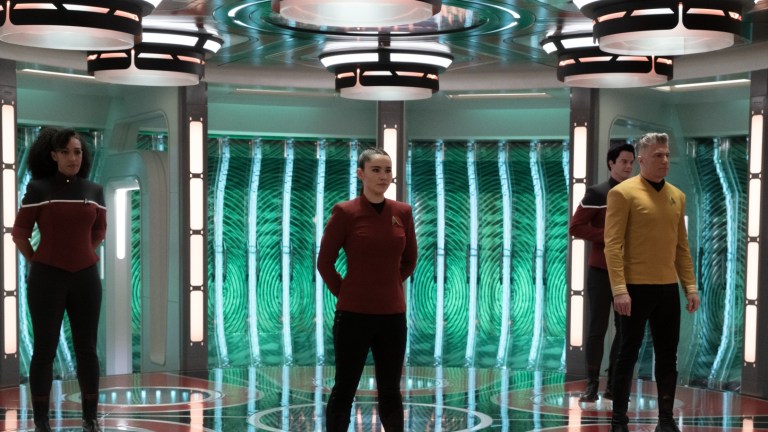
“Beam me up, Scotty” is a quote as iconic as Star Trek ‘s once-magical automatic doors ― even if Captain Kirk didn’t actually say it. While Star Trek wasn’t the first sci-fi creation to teleport its characters around, its pleasingly sparkly transport scenes quickly captured fans’ imaginations. However, what is beamed up isn’t necessarily what is beamed down.
Simply put, Star Trek transporters, if they were real, would kill their users along the way . No matter the technicalities over moving versus duplicating the bits that make up a Trek crewman, you cannot blast a person into atoms without ending their brain functions and destroying them. You just can’t. Try it (don’t try it). So depending on how lazy a character is, a commute from a starship bridge to the bathroom could be the last thing they ever do.
It’s something that’s fascinated and vexed overthinkers in the fandom through the decades, with YouTuber CGP Grey among those warning of the “real” nature of starships’ transporters (and validating The Next Generation ’s Reg Barclay’s fear of them).
Despite this, it’s mostly unremarked upon in the show ― even when Captain Picard, in The Next Generation episode “Lonely Among Us,” basically dies in space, with the transporter used to make him a new body for his untethered “energy” to enter. “What the devil am I doing here?” he asks when he reappears. He’s clearly not quite the same man.
Ad – content continues below
Picard’s crew might not care who exactly it is that they’ve beamed back to the Enterprise. But the bait-and-switch of the transporter haunts pop culture consciousness, just as countless versions of crewmen might haunt their starships. One example is China Mieville’s fantasy novel Kraken , in which a Trekkie uses magic to make a transporter, only to end up stalked by dozens of iterations of his own ghost. Author Jason Pargin, too, muses over the horrific implications of transportation in This Book is Full of Spiders .
Mieville and Pargin appear to imply that Star Trek characters don’t know transportation kills them. But Trek ‘s crewmen have scientific training and live in a world that encourages philosophical thinking. If Kirk, Picard, and co. all know that transporters are deadly, why are they happy to use them?
You could argue that we all need a sense of being whole and individual beings, experiencing life as one unbroken continuity, for the world to function. For Star Trek characters to live as they do, lives made infinitely easier by utopian tech, perhaps ignoring their many deaths is a bargain that has to be made.
This would make a starship crewman a kind of cloned pretender. That angle has certainly cropped up in episodes over the decades. In The Original Series episode “The Enemy Within,” a transporter accident creates two Captain Kirks (one comically evil, of course ― though unlike Evil Spock he regrettably doesn’t sport a goatee). Both are different men from the original Kirk, so at the end he is not so much brought back as made whole again. And the fact that the transporter can create two Will Rikers from one in TNG episode “Second Chances” also shows some kind of replication is at play.
Another take would be that Star Trek characters aren’t invested in an illusion at all, but are actually pretending less than we are. Freed from constraints of space and time by starships, freed from the production and ownership of objects by replicators, the next thing to go is the permanent self.
Psychoanalyst Jacques Lacan wrote that when a human first recognizes their reflection as their self, they enter an imaginary world mediated by language. This abstraction or layer of removal from the self might be how you live if you’re just one in a long line of yous. Philosopher Jean Baudrillard took the idea of reality as a kind of shared dream further, arguing we live in “hyper-reality,” a set of representations more real than the now-dead aspects of the world they reference. Are starship crewmen hyper-real people? Made anew, carrying more thoughts and experiences than the first version of themselves to die?
Perhaps they have decided to ditch the whole game of pretending humans consist of a structurally sound self that remains one thing. After all, our cells are always renewing, our neurons changing. Consciousness is just one of many functions our brains undertake, and we can experience breaks in it, like the breaks transporters would cause. We are not even each one body, with so much of our mass made up of micro-organisms which have no clue that the city they are part of is a sentient being.
Get the best of Den of Geek delivered right to your inbox!
This angle would mean Star Trek characters are living in the aftermath of a huge historical and psychological rupture caused by transport tech. They have a whole different view of what it is to be a person. To them, living a life includes many endings and beginnings, via a multitude of consciousnesses.
A case in point: in Voyager episode “Tuvix,” another transporter accident happens. This time, instead of creating two people, it makes a hybrid of Tuvok and Neelix, with an unsettling combination of Vulcan eyebrows and already-nightmarish Talaxian sideburns. After some conflict over ethics, Tuvix is eventually sacrificed .
Tuvix is his own person, and Tuvok and Neelix have died by at least some definitions when they merged to create him. But for Voyager ‘s Captain Janeway, Tuvix’s death is seen as necessary so that Tuvok and Neelix’s consciousnesses can continue where they left off. Plus, when the pair of men return, Janeway sees them as the real deal. “It’s good to have you back,” she tells them.
Star Trek characters’ selves, then, are based on carrying memories and a personality, passing it from one body to another, rather than possessing an unbroken consciousness. So what if traveling from point A to point B means a person being consigned to the void, no thoughts assailing them ever again? Their journey through time and space continues anyway, like a relay race. Each body, in Star Trek , is a tiny part of the story of a person. They get to live for a day or a week while building the ambitions that the next them will take forward, and experiencing the memories and personality of their countless ghosts.
Maybe you’d die if you stepped into a Star Trek transporter. But the group project you contributed to, the project called You, would boldly go on ― into experiences no less real for your multitude.

Jen Tombs is a features writer and an avid fan of science fiction and feminist fiction. She lives in the Canadian Rockies because she loves mountains,…
The Untold Truth About Star Trek Transporters
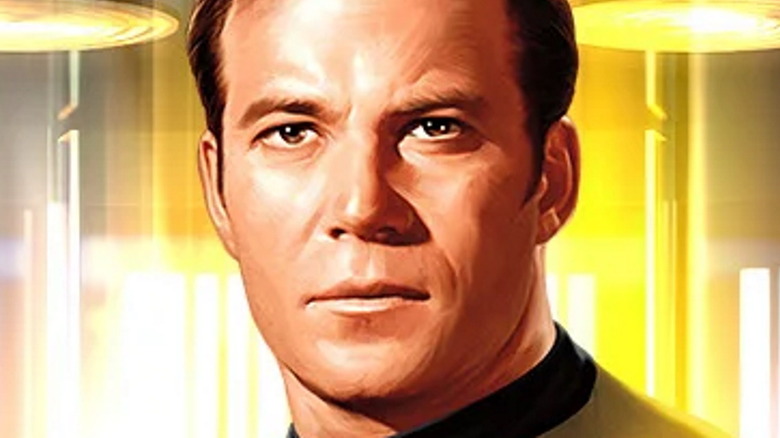
According to Geordi La Forge (LeVar Burton), "transporting really is the safest way to travel" in the "Star Trek" universe. Having your atoms disassembled by a computer, beamed to another location, and then reassembled certainly does sound like an efficient (albeit terrifying) mode of transportation and practically everyone in the 24th century gets around with transporters.
La Forge even claims there have only been two or three transporter accidents in the past 10 years — but if that's true, then the 24th century must have a very different definition of the word "accidents." From age regression to accidental cloning, the U.S.S. Enterprise alone has had multiple bizarre transporter malfunctions in just its first seven years of service.
The problems get even weirder when you look at all the transporter accidents in the original " Star Trek ," " Star Trek: Deep Space Nine ," " Star Trek: Voyager ," and other "Trek" TV shows and movies. While some of these effects can actually be beneficial, you may want to read this article on the untold truths behind "Star Trek" transporters before calling out that old refrain: "Beam me up, Scotty." Because after your journey, there's a good chance you won't like how you get put back together.
Transporters Exist Because of Low FX Budgets
According to "The Making of Star Trek," franchise mastermind Gene Roddenberry originally wanted to shoot scenes of the Enterprise landing on alien planets, but this proved too expensive. Even building models of shuttlecrafts was too time consuming, and the crew needed an alternative when filming began.
To get around the problem, the special effects team created a teleportation effect for the crew to explain how they arrived on a planet's surface in the "Star Trek" pilot episode "The Cage." The transporter became very popular and influenced many episodes, causing all the later TV shows and movies to use it even as their FX budgets increased substantially. Thus, a special effect created for budgetary reasons ended up having a major real-world effect on pop culture.
Transporters Run on Glitter and Alka Seltzer
Ask a Trekkie how transporters work, and you might receive a technical explanation of the physics involved in disassembling and reassembling a person.
Well, guess what? In reality, transporters can run on anything from glitter to Alka Seltzer. According to " Inside Star Trek: The Real Story ," the special effects team created the first transporter effect by turning a slow-motion camera upside down, filming grains of aluminum powder dropping in front of a black background, and using the footage to create the "shimmer" effect between shots of the actors and the clean background. In later episodes, they created different transporter effects by filming dissolving Alka Seltzer tablets and later glitter swizzled in a jar full of water.
More recent "Trek" movies and TV shows use computer effects. Today, practically anyone can create their own Star Trek transporter effect with basic video editing software and some computer-generated effects. Even so, it's telling that one of the most iconic special effects in science fiction history was accomplished using materials anyone could buy at their local drug store.
People Suffer From Transporter Phobia
By the 24th century, millions of people travel by transporter every year. Even so, there are plenty of people who hate this mode of travel and do everything they can to avoid stepping onto a transporter pad.
In "The Next Generation" Season 6 episode "Realm of Fear," Lieutenant Reginald Barclay (Dwight Schultz) confesses he suffers from "transporter phobia" and suffers a panic attack when asked to beam down to a planet while plasma field disturbances adversely affect the transporter. As it turns out, his fears are justified, and he sees worm-like creatures in the transporter's matter stream that turn out to be human beings trapped in mid-transport.
People with transporter phobia may be ridiculed in the 24th century, but Barclay's actually in good company. Doctor Leonard McCoy (DeForest Kelley) famously hated transporters and insisted on using shuttlecrafts whenever possible.
During the "Star Trek: Enterprise” television series, the original Enterprise crew also preferred using shuttles and only allowed themselves to be beamed up during emergencies. Considering all the horrible transporter malfunctions that would occur over the next two hundred years, this was very smart behavior.
Transporters May Technically Kill You Every Time You Beam Down
Transporter accidents have killed people in many gruesome ways. In " Star Trek: The Motion Picture ” (1979), memorably, some new officers experience a transporter malfunction and re-materialize as a semi-living mass of flesh that mercifully doesn't live for very long.
When you get down to it though, "Star Trek" transporters may very well murder every single person who uses one. According to multiple official explanations, including the one found in the "Star Trek: The Next Generation Technical Manual," transporters scan a person's body, convert said body into a matter stream, store those particles in a pattern buffer, send them to their destination via an energy beam, and then put those particles back together in the original configuration.
Many fans argue that this basically means a transporter kills you and only reassembles a copy of your body and mind. This idea is given credence by the fact that transporters don't have to use your original atoms to reassemble you, but can use any available atoms, leaving your original atoms floating somewhere in space.
This is similar to the " Ship of Theseus " thought experiment (famously referenced in "Wandavision" ), which questions whether a person or object is still themselves once all the original components are replaced. The Star Trek graphic novel "Forgiveness" does claim that transporters manage to send your soul via the energy stream, which would indicate that transporters don't really kill you. That being said ... they kind of do.
Transporters Make Death Irrelevant
Transporters may or may not kill you, but having a computer advanced enough to scan and store a complete pattern of your body, mind, and memories actually makes death irrelevant. In the episode "Lonely Among Us" from Season 1 of "Next Generation," for instance, Captain Jean-Luc Picard (Patrick Stewart) merges with an alien entity and beams off the ship, apparently destroying himself.
However, the Enterprise crew later realize that they can get Picard back by reversing the transport and reconstituting Picard as he was before the alien possessed him. This Picard is the same person in every respect, although he lacks the memories of when he and the alien entity were one, indicating he's an earlier version of Picard built from new atoms.
Oddly, this means a transporter can bring back anyone who dies from a mission just by saving their physical and mental patterns in the pattern buffer and reconstituting them after the original dies. The new version would lack the memories of that mission (including the memory of dying), but this would be a small price to pay for getting a chance to bring people back from the dead on demand. The only downside might be accidentally duplicating someone who isn't dead yet — which actually happened to one hapless crewman on "Next Generation."
Transporters Are Cloning Machines
Season 1 of the original "Star Trek" produced one of the show's weirder episodes with "The Enemy Within," where a transporter accident splits Captain Kirk (William Shatner) into a "good" but weak-willed Kirk and an "evil" Kirk prone to overacting (or at least, more overacting than Shatner normally did). As it turned out, both sides of Kirk needed to merge back together to form a whole personality, and Spock and Scotty were able to re-integrate them.
At least Kirk managed to pull himself together. A generation later, Commander William Riker (Jonathan Frakes) wasn't so lucky when, on the "Next Generation" Season 6 episode "Second Chances," he learned he was unknowingly split into two exact duplicates thanks to a transporter accident while he was a lieutenant. While one Will Riker continued his career in Starfleet and rose to the rank of Commander, the other Riker (also Frakes) was marooned on an alien planet for eight years until the Enterprise rescued him.
From that point, things got even weirder. Lieutenant Riker decided to go by his middle name "Thomas" and start a new life. He joined a group of Maquis dissidents, then used his genetic pattern to pose as Will Riker and steal the U.S.S. Defiant in the "Deep Space Nine" Season 3 episode "Defiant." Later, he got caught and sentenced to life imprisonment in a Cardassian labor camp. Meanwhile, Commander William Riker continued to advance in his career and eventually became captain of the U.S.S. Titan. Wow, talk about an identity crisis.

Transporters Are Gene Splicers
David Cronenberg's classic 1986 remake of "The Fly" showed how an early transporter (or "telepod") could accidentally splice someone's genetic code with an insect if it happened to be inside. By the 24th century, transporter gene splicing accidents have become somewhat prettier, but no less ethically disturbing.
In the "Voyager" Season 2 episode "Tuvix," Lieutenant Commander Tuvok (Tim Russ), Neelix (Ethan Phillips), and an alien plant get merged together in a transporter accident thanks to the plant's enzymes. The resulting hybrid being (played by actor Tom Wright) possessed their memories and called himself "Tuvix." Over time, Tuvix formed relationships with the crew and came to see himself as a unique being (and looked at Tuvok and Neelix as his parents), resisting attempts to reverse the fusing process. However, Captain Janeway (Kate Mulgrew) forced him to go through the process anyway, effectively destroying him .
While the moral dilemma of forcing Tuvix to revert back to two beings made for some good drama, it almost seemed unnecessary. Since the transporters can effectively clone people, as they did with William Thomas Riker, why couldn't Voyager have simply made a copy of Tuvix and then separated one of them back into Tuvok and Neelix? Tuvix would have probably been more amenable to that idea.
Transporters Are A Fountain of Youth
Transporters might be able to reassemble you in exactly the same physical condition you were in at the moment of beam out ... but what if you don't want to be put back together as an out-of-shape middle-aged man or a dying woman?
No problem! As multiple "Star Trek” episodes have shown, the transporter can make you any age you want. In the "Next Generation” Season 6 episode "Rascals," a transporter accident removed key sequences in the crew's DNA, causing them to rematerialize as 12-year-olds, albeit with adult minds and memories. Doctor Crusher (Gates McFadden) later restored the missing sequences and returned the kids to adults, but she indicated that the regressed crewmembers could have simply grown up the normal way instead.
Okay, but say you don't want to restart your life as a preteen and go through puberty a second time? That still wouldn't be an issue. In the Season 2 episode "Unnatural Selection," Doctor Pulaski (Diana Muldaur) was stricken with a disease that accelerated her aging. To save her, the Enterprise used the transporter to re-code her DNA back to normal with a previous bio-pattern that put her back to her regular age.
Of course, since you could store bio-patterns of yourself every time you use the transporter, you could restore yourself to any age or physical condition — including how you looked during your twenties after spending months working out at the gym. Who needs a day spa when you've got a transporter?
Transporters Redefine How Childbirth Works
Starfleet doctors are some of the best medical professionals in the business. Not only can these specialists perform delicate surgery on multiple alien species, they're trained to use their advanced medical equipment to improvise in dangerous situations, leading to some ... well, innovative solutions.
In the "Deep Space Nine" Season 4 episode "Body Parts," Doctor Bashir (Alexander Siddig) was on a shuttle with Major Kira (Nana Visitor) and Chief O'Brien's pregnant wife Keiko (Rosalind Chao). When an accident endangered the lives of Keiko and her unborn son, Bashir decided to use the transporter to transfer the fetus into Kira's womb. Kira ended up carrying the infant to term, resulting in some weird moments for the O'Brien family.
This bizarre incident was motivated by Nana Visitor's real-life pregnancy , which the writers decided to work into the show after Visitor feared her character might need to be written out. Oddly enough, while "Star Trek" science consultant André Bormanis didn't think such an operation would be scientifically possible, he later admitted that fifteen years after the episode aired, the idea of a fetal transplant was being studied and could become a reality .
Transporters Can Turn You Into A Living Ghost
Why was Geordi La Forge so confident that transporters were safe? Probably because he suffered a transporter accident that should have killed him in the Season 5 "Next Generation" episode "The Next Phase," only to learn he wasn't really dead. The story had La Forge and Ensign Ro (Michelle Forbes) waking up on the Enterprise after a transporter malfunction, only to learn nobody could see or hear them and that they could walk through solid matter.
Ro believed the two of them died while being beamed up, but La Forge was skeptical, and learned a Romulan molecular phase inverter transformed them into "out of phase" versions of themselves. Luckily, he was able to get a message to Data, and the Enterprise reverted them to their solid states.
Ensign Boimler (Jack Quaid) suffered a more embarrassing version of this ghost-transformation in the Season 1 "Star Trek: Lower Decks" episode "Much Ado About Boimler." While helping an engineer test the transporter, Boimler was turned into a transparent, glowing version of himself that gave off a "transporter" sound.
When his crew found him too distracting, they shipped him to "The Farm," a medical spa where all incurable "Star Trek" victims go. The Farm turned out to be a great place, but when Boimler reverted to normal, he was shipped back. Considering the Farm is basically a day spa with attractive nurses, maybe being a transporter accident victim wasn't such a bad thing after all.
Transporters Can Replace Cryogenic Freezing
There's been a lot of cinematic speculation about how cryogenics freeze a person into stasis, possibly allowing them to be revived years or even centuries later. In the movies, everyone from Austin Powers to Captain America to Doctor Evil have attempted it, with varying success.
Well, guess what? In the "Trek” universe, you don't have to bother with messy cold storage. Just store your pattern in the transporter buffer of your ship and wait for someone to re-materialize you.
That's what Montgomery Scott (James Doohan) did for himself and his crewmate when their ship crashed on a Dyson sphere in the "Next Generation” Season 6 episode "Relics." While his friend's pattern degraded too much for him to be revived (guess Scotty wasn't that much of a miracle worker), Scotty was taken out of storage 75 years later by the crew of the Enterprise-D.
Oddly enough, in the rebooted Kelvin timeline, an alternate Scotty lost Admiral Archer's beagle Porthos in a transwarp beaming experiment. However, in the IDW comic book "Star Trek" #12, Scotty brought Porthos back, showing that animals can also be kept in stasis for extended periods of time. Undoubtedly, this technology will someday revolutionize how our kennels operate.
Transporters Are Time Machines
"Trek" time travel is usually a dramatic event. In "Star Trek IV: The Voyage Home," Kirk and his crew went back to the 20th century by getting a stolen Klingon Bird-of-Prey to perform a "slingshot" maneuver around the sun, creating a time warp. The effort nearly destroyed the ship, but it got the job done.
Of course, if you don't have the movie budget — er, starship — to perform such a feat, just use the transporter. In the "Deep Space Nine" Season 3 two-part storyline "Past Tense," a transporter accident involving temporal altering chroniton particles sent Captain Sisko (Avery Brooks), Doctor Bashir, and Lieutenant Commander Dax (Terry Farrell) to the 21st century where they accidentally interfered with a key historical event, threatening to erase their future.
Meanwhile, Chief O'Brien (Colm Meany) and Major Kira managed to use a limited supply of chronitons to travel through time and locate their missing crew members. They ended up briefly visiting 1930, and even swung by 1967 to get flowers from some hippies, before finally hitting the right date.
Such tech would be greatly refined by the 29th century, when the Federation included fleets of "timeships" in Starfleet that possessed temporal displacement drives and temporal rifts to travel through time, allowing them to essentially beam people to any point in history.
Transporters Can Take You to Alternate Realities
As if ending up in the wrong place isn't bad enough, some transporter accidents can place you in an entirely different universe — and not a very fun one at that.
In the classic Season 2 "Star Trek” episode, "Mirror, Mirror," Kirk and several other crew members re-materialized in a " Mirror Universe " where the benevolent Federation was the planet-conquering "Terran Empire." Kirk and his crew needed to pretend to be their evil counterparts, since any traitors to the empire would be placed in "agony booths" of torture that made folks wish they were dead.
Meanwhile, the Mirror Universe versions of Kirk and his crew appeared in the "Prime" Star Trek universe and were thrown into the Enterprise's brig. Fortunately, the two crews managed to switch places, with the "Prime" Kirk making the "Mirror" Spock consider reforming the Terran Empire.
While this appeared to be a random transporter accident, by the 24th century, Mirror Universe engineers managed to upgrade their transporters to allow people to crossover to the "Prime" universe at will. This led to multiple episodes in "Deep Space Nine" where mainstream characters visited the alternate reality and even formed friendships with some of their Mirror Universe counterparts.
People Have Faked Their Deaths via Transporter Accidents
Want to know how common transporter accidents really are? As it turns out, one Romulan spy felt this sort of death was so prevalent in Starfleet that she staged her own transporter death.
In the "Next Generation" Season 4 episode " Data's Day ," a Vulcan ambassador (Sierra Pecheur) apparently died in a transporter accident even though the equipment appeared to be functioning perfectly. Data (Brent Spiner) investigated, discovering bits of organic matter that arrived in transport were replicated, leading him to deduce that the "Vulcan" ambassador was actually a Romulan spy who used the Enterprise to rendezvous with her people and had the replicated material of her "dead body" beamed onto their ship to fake her cover identity's death.
While the spy's deception was discovered, not every Starfleet crew has people like Data or Doctor Crusher who can investigate so thoroughly. Given this, maybe transporter accidents really aren't so common. Perhaps, most of them are perpetrated by people who just want to start a new life.
Star Trek’s Transporter Technology, Explained
Transporters are among the most interesting technology in Star Trek. How exactly is Scotty able to "beam me up?"
Ever since its creation in the late 1960s, Star Trek has been a pinnacle of positive science fiction, envisioning a non-dystopian future where technology has become so advanced that problems that irk mankind today are no longer an issue . World hunger is solved by the unlimited source of food created by a replicator , complex medical diagnostics can take place in a matter of seconds using a tricorder. However, nothing has become such a cornerstone of the many iterations into the franchise as the iconic transporter.
Teleportation has long been a dream of mankind, replacing arduous long-haul flights with a simple matter transportation device. With this gizmo, journeys that would typically take hours can take only seconds. The transporters are used throughout the many iterations into the franchise, from the revolutionary Original Series to the newest addition to the universe, Strange New Worlds . So fundamental are these transporters as a narrative beat that they appear in almost every episode, bar the occasional few. What's more, they often play a key role in solving whatever problem the intrepid adventures of Starfleet face.
RELATED: How Star Trek: The Next Generation Explored Blindness & Accessibility With Geordi LaForge
While there have been a few gizmos and gadgets from the show that have wiggled their way into non-fictional technological creations , unfortunately the transporter is not one of them. Real-world scientists have poured considerable research into it, with successful experiments having already been carried out on a molecular scale, but sadly we are nowhere close to the transporter technology portrayed in the show.
The biggest problem with achieving teleportation is largely down to how advanced and complex most organisms and objects are. Star Trek transporter tech works by breaking down matter such as living organisms, cargo, even gas or liquid-based matter into an energy pattern, in a process that the show calls “dematerialization.” Once each atom is broken down into this pattern, it is “beamed” across to another transporter pad, where it is converted back into matter. This is aptly named “rematerialization.” Interestingly, the famous quote “Beam me up, Scotty”, in reference to the Original Series transporter operator and chord of engineering Montgomery Scott, is actually a misquote, never uttered in the Original Series . The closest occasion was the one time Kirk said “Scotty, beam me up,” years later in the film Star Trek IV: The Voyage Home.
Within the Star Trek universe, there are some limitations to the miraculous technology, such as distance restriction and often an inability to penetrate through shields. There are of course exceptions to these rules, but they are often connected specifically to a particular episodes plot. Writers, as is often the case in long-running TV shows such as this, often break or bend the rules on transporter specifics, so it’s often hard to canonically understand their limitations. In the Original Series it’s noted that it is only possible to transport from one transporter bay to another. However, this rule has been broken multiple times, showing crew members transported from any random location to another, all without the bay. This raises the question as to why they have the designated transporter room to begin with, other than to make grand entrances and create memorable transitions.
While the process sounds simple enough on paper, like sending an email over, the process is riddled with complex problems and potential dangers. It’s no wonder that transporter operators are so highly trained within Starfleet, as the idea of breaking down matter and then reconstructing it in exactly the same way is a daunting task. It is comparable to smashing a vase into tiny pieces, then trying to glue it all back together. Of course, with the wonders of Star Trek technology, this process is vastly automated, but there are still a myriad of problems that can occur.
There have been various episodes devoted to these issues, potentially most notably the Voyager episode “Tuvix”. Tuvok and Neelix, two crew members under the controversial Capt. Janeway, are on an away mission. Upon beaming back to the ship their energy pattern was disrupted, causing it to merge into one pattern and thus rematerialize into one living organism: Tuvix. There kinds of issues are scarily common, and thus there are various characters whom audiences meet across the franchise that are hesitant or even refuse to use transporters.
Transporters are potentially one of the most fascinating technological advancements present within the show, and are often the envy of even modern day audiences. Technology has come ridiculously far since The Original Series first graced televisions, with touch screens, smartphones, and virtual reality all appearing in the real world, and making the old shows feel dated. Transporters, however, along with warp engines and replicators, make even the oldest episodes feel futuristic, setting a standard that has remained relevant more than 50 years later.
MORE: Star Trek: Deep Space 9's Most Heart Wrenching Moment
- Cast & crew
- User reviews
The Enemy Within
- Episode aired Oct 6, 1966

A transporter malfunction splits Captain Kirk into two halves: one meek and indecisive, the other violent and ill tempered. The remaining crew members stranded on the planet cannot be beamed... Read all A transporter malfunction splits Captain Kirk into two halves: one meek and indecisive, the other violent and ill tempered. The remaining crew members stranded on the planet cannot be beamed up to the ship until a problem is fixed. A transporter malfunction splits Captain Kirk into two halves: one meek and indecisive, the other violent and ill tempered. The remaining crew members stranded on the planet cannot be beamed up to the ship until a problem is fixed.
- Richard Matheson
- Gene Roddenberry
- William Shatner
- Leonard Nimoy
- DeForest Kelley
- 46 User reviews
- 14 Critic reviews

- Captain James Tiberius 'Jim' Kirk

- Mister Spock

- Yeoman Rand

- (as Edward Madden)

- Lieutenant Nyota Uhura
- (uncredited)

- All cast & crew
- Production, box office & more at IMDbPro
Did you know
- Trivia The original script called for Spock to karate chop Kirk to subdue him. Leonard Nimoy felt that this would be an uncharacteristically violent act for a peace-loving species like the Vulcans so he came up with a pincer-like grasp on the neck that has since become known as the Vulcan Nerve Pinch and become one of the character's most famous gimmicks.
- Goofs During the showdown between Good Kirk and Evil Kirk on the bridge, Evil Kirk's scratch marks are suddenly shown on the right cheek instead of the left as they had been throughout the episode.
Lt. Cmdr. Leonard 'Bones' McCoy, M.D. : He's dead, Jim.
- Alternate versions Special Enhanced version Digitally Remastered with new exterior shots and remade opening theme song
- Connections Featured in Star Trek Logs: An MTV Big Picture Special Edition (1991)
- Soundtracks Theme From Star Trek Written by and credited to Alexander Courage
User reviews 46
- Mar 14, 2021
- October 6, 1966 (United States)
- United States
- Official Facebook
- Desilu Studios - 9336 W. Washington Blvd., Culver City, California, USA
- Desilu Productions
- Norway Corporation
- See more company credits at IMDbPro
Technical specs
- Runtime 50 minutes
Related news
Contribute to this page.
- IMDb Answers: Help fill gaps in our data
- Learn more about contributing
More to explore

Recently viewed
- Скидки дня
- Справка и помощь
- Адрес доставки Идет загрузка... Ошибка: повторите попытку ОК
- Продажи
- Список отслеживания Развернуть список отслеживаемых товаров Идет загрузка... Войдите в систему , чтобы просмотреть свои сведения о пользователе
- Краткий обзор
- Недавно просмотренные
- Ставки/предложения
- Список отслеживания
- История покупок
- Купить опять
- Объявления о товарах
- Сохраненные запросы поиска
- Сохраненные продавцы
- Сообщения
- Уведомление
- Развернуть корзину Идет загрузка... Произошла ошибка. Чтобы узнать подробнее, посмотрите корзину.
Oops! Looks like we're having trouble connecting to our server.
Refresh your browser window to try again.
Product Key Features
- Year Manufactured 1998
- Sport Boxing
- Character Hikaru Sulu, Lieutenant, Pavel Chekov
- Color Yellow
- Vehicle Type Ship
- Time Period Manufactured 1990-1999
- TV Show Star Trek: The Original Series
- Vintage Yes
- Original/Licensed Reproduction Original
- Features Exclusive, Battery Powered, Boxed, Batteries Included
- Featured Person/Artist George Takei, Seal
- Movie Star Trek
- Material Plastic
- Franchise Star Trek
- Series The Original Series
- Type Action Figure
- Theme TV, Movie & Video Games
- Item Height 5in.
Playmates Toys Star Trek Action Figures
Playmates toys star trek toys & hobbies, playmates toys star trek diecast & toy vehicles, playmates toys star trek tv cartoon character action figures, playmates toys star trek comic book heroes action figures, playmates toys star trek action figure cartoon & tv character action figures.

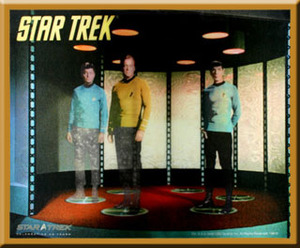
Star Trek - Transporter Series (Playmates) Checklist

- Accidents with the Transporter
- Original Series Trivia
- Secrets from the Wardrobe Dept.
- Times Scotty Saved the Day
- Exasperated Picard
- The Best Series and Movies, Ranked
- Fun Facts About the New Film Series
- Celebrating Spock and Bones McCoy
- The Best ‘Star Trek’ Villains Who Give Starflee...
- Store-Bought Items Used as Props
- Interesting Characters
- Episodes That Get You Hooked
- 'Make It So' - Picard
- Every 'Star Trek' Captain, Ranked By True Trekkies
- The Greatest Star Trek Insults
The Most Surreal And Horrifying Transporter Accidents On Star Trek
Gene Roddenberry and the other ingenious minds behind Star Trek have come up with some brilliant technology for the Star Trek universe: warp drive, food replicators, the Holodeck, and one of the most fantastical of all: Star Trek transporters.
Imagine a world where commuting to work doesn't exist; you just beam yourself over. A world where you never have to worry about being late to a movie or business meeting. Where you can travel great distances in a matter of seconds. Sounds great, right? Well, maybe you'll reconsider when you think about all the things that can go wrong. Transporter malfunctions happen, and they're not pretty. Below, you'll find a veritable cornucopia of horrifying Star Trek transporter accidents. Vote up the ones that will make you rethink ever wanting to step on a transporter pad.
75 Years in Stasis
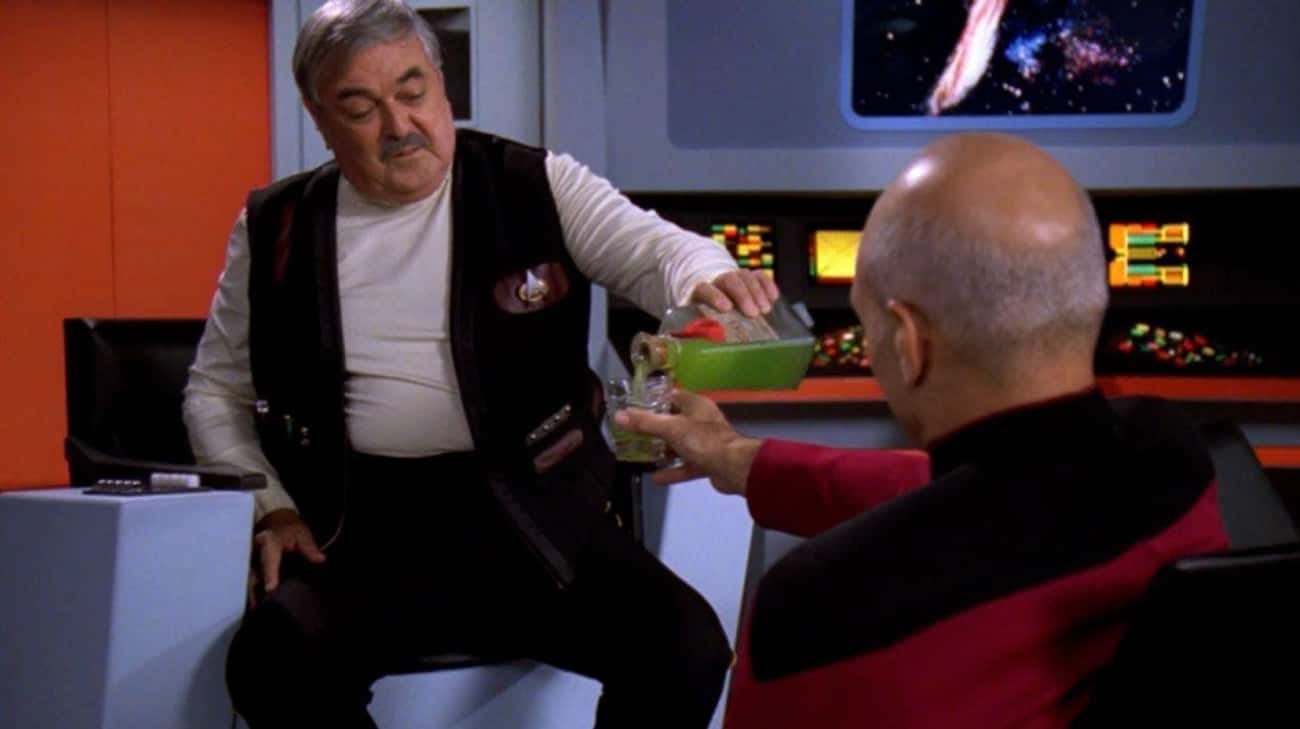
- Series: Star Trek: The Next Generation
- Episode: Season 6, Episode 4, "Relics"
The Enterprise receives a distress call from the USS Jenolan, a ship that has been missing for seventy-five years. After investigating, the crew finds no survivors, but LaForge notices that the transporters had been reconfigured in a strange manner. Amazingly, a pattern is still in the system's buffer and had suffered no degradation. He rematerializes the stored pattern, beaming Original Series character Montgomery "Scotty" Scott onto the transporter pad.
Mirror Universe
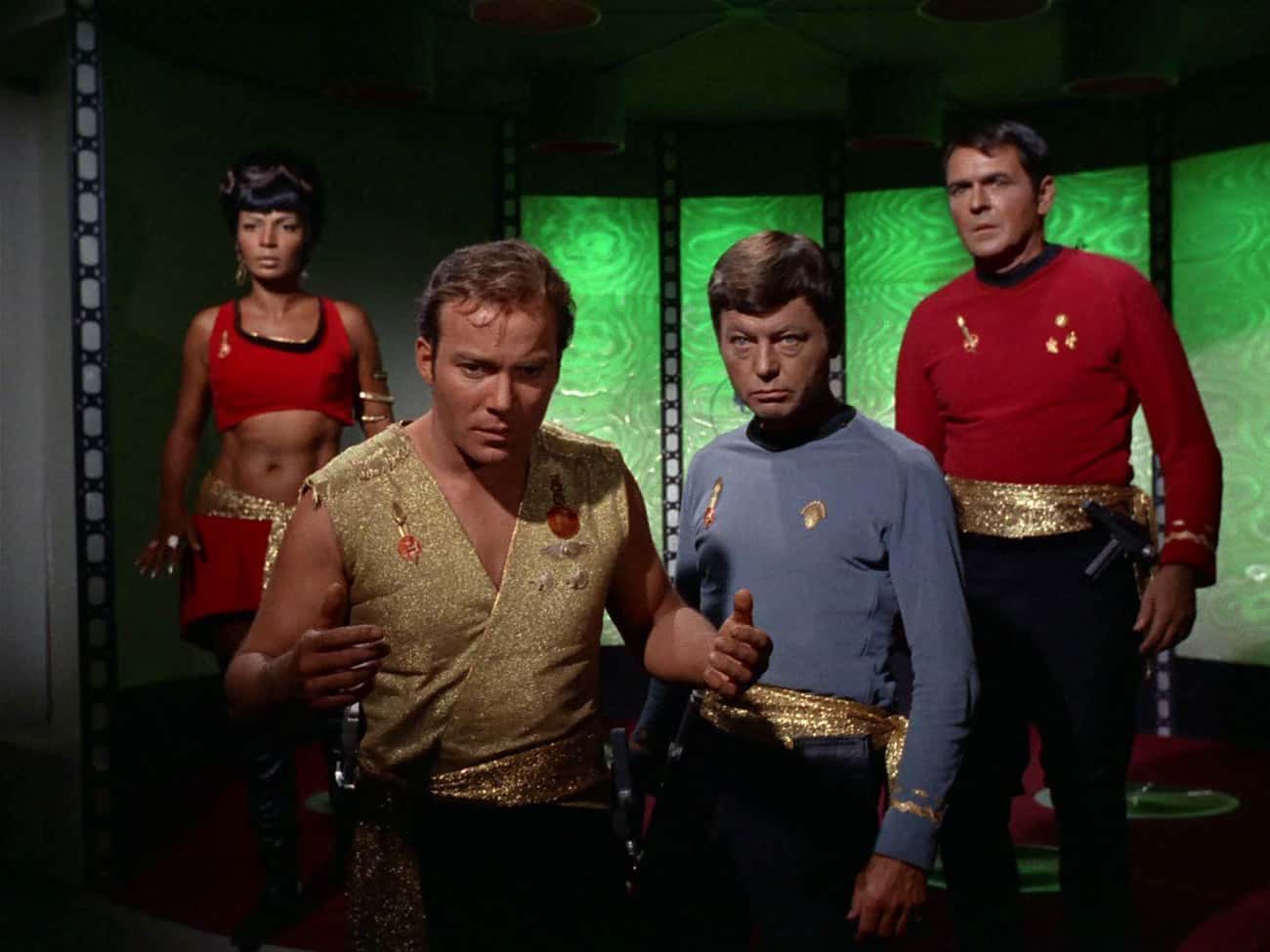
- Series: Star Trek: The Original Series
- Episode: Season 2, Episode 4, "Mirror, Mirror"
In "Mirror, Mirror," Kirk, McCoy, Uhura, and Scotty are sent to a mirror universe after a transporter accident during an ion storm. In this alternate reality, the Enterprise is a warship for the malevolent Terran Empire. The only way Kirk and crew can return back home is by impersonating their mirror-universe duplicates and outsmarting an evil, goatee-sporting Spock.
LaForge and Ro in Limbo
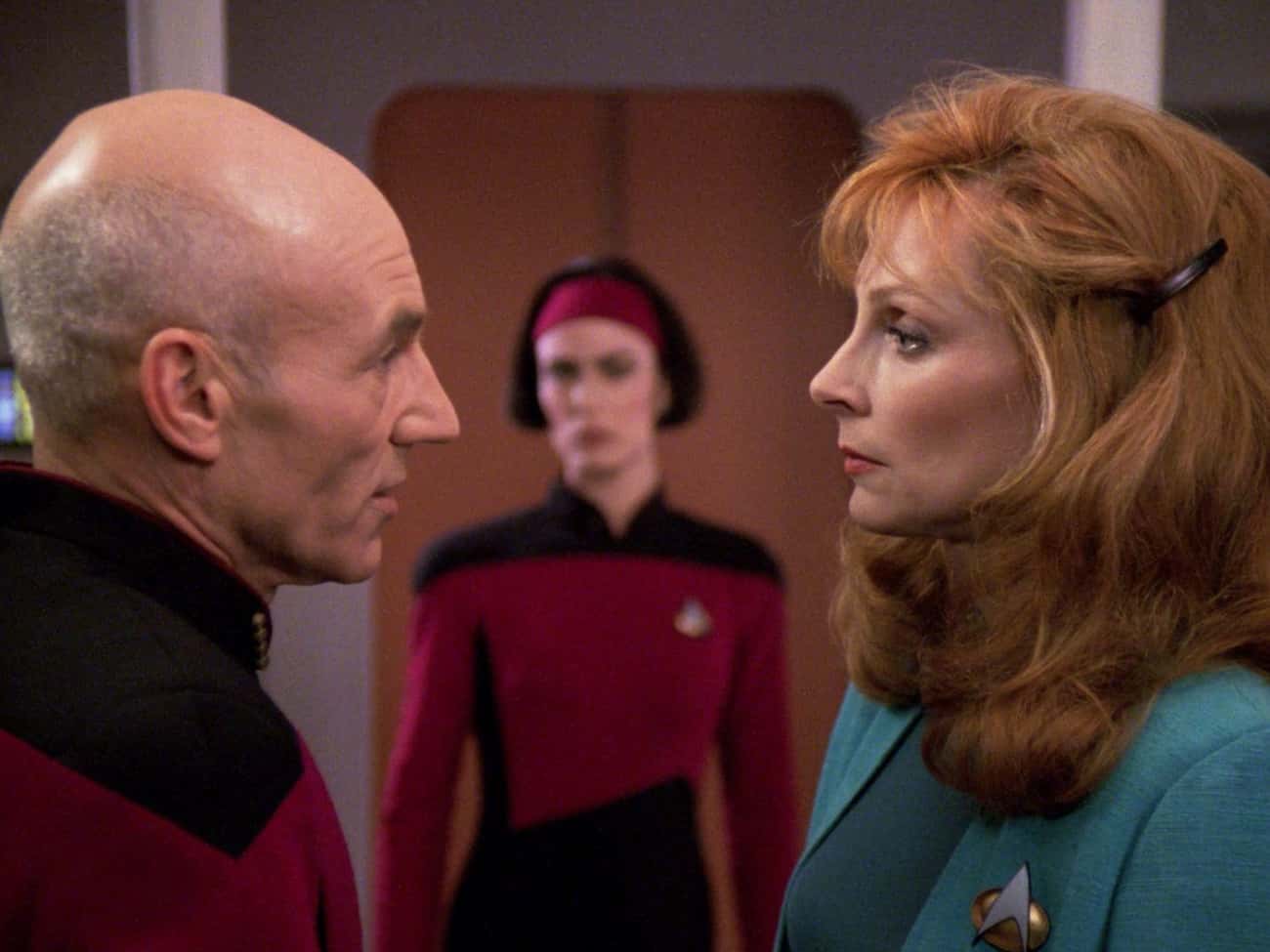
- Episode: Season 5, Episode 24, "The Next Phase"
A faulty generator causes a transporter failure, leaving the crew of the Enterprise to believe Lt. Comm. LaForge and Ensign Ro were killed. But Geordi and Ro survived; they just beamed into a different phase than everyone else, free to wander the ship, but unseen and unheard by the rest of the crew. They observe their own funeral preparations before purposely causing a disruptor overload, which tips Data off to their whereabouts, allowing him to re-cloak them.

- Film: Star Trek: The Motion Picture
A transporter malfunction results in the horrific deaths of two crew members. Science officer Sonak and another crew member arrive on the transporter platform with their internal organs outside their bodies. The fleshy, disfigured masses didn't survive long.
Thomas Riker
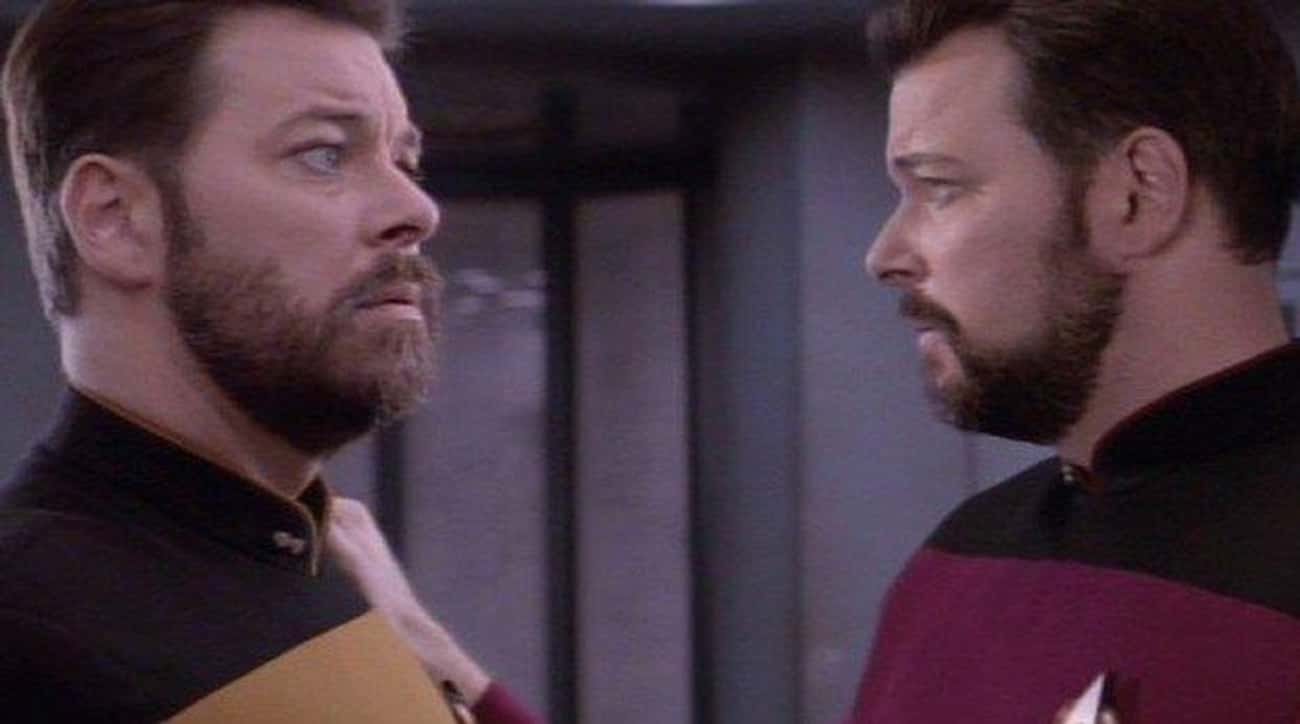
- Episode: Season 6, Episode 24, "Second Chances"
On an away mission, Commander William Riker came face to face with... himself! As it turns out, eight years ago, while serving on the USS Potemkin, a transporter malfunction caused the creation of a duplicate Riker (dubbed Lt. Thomas Riker). Thomas was brought aboard the ship, butted heads with William, and rekindled his relationship with Deanna Troi before ultimately being reassigned to the USS Gandhi where he could continue his Starfleet career.
Traveling Back in Time
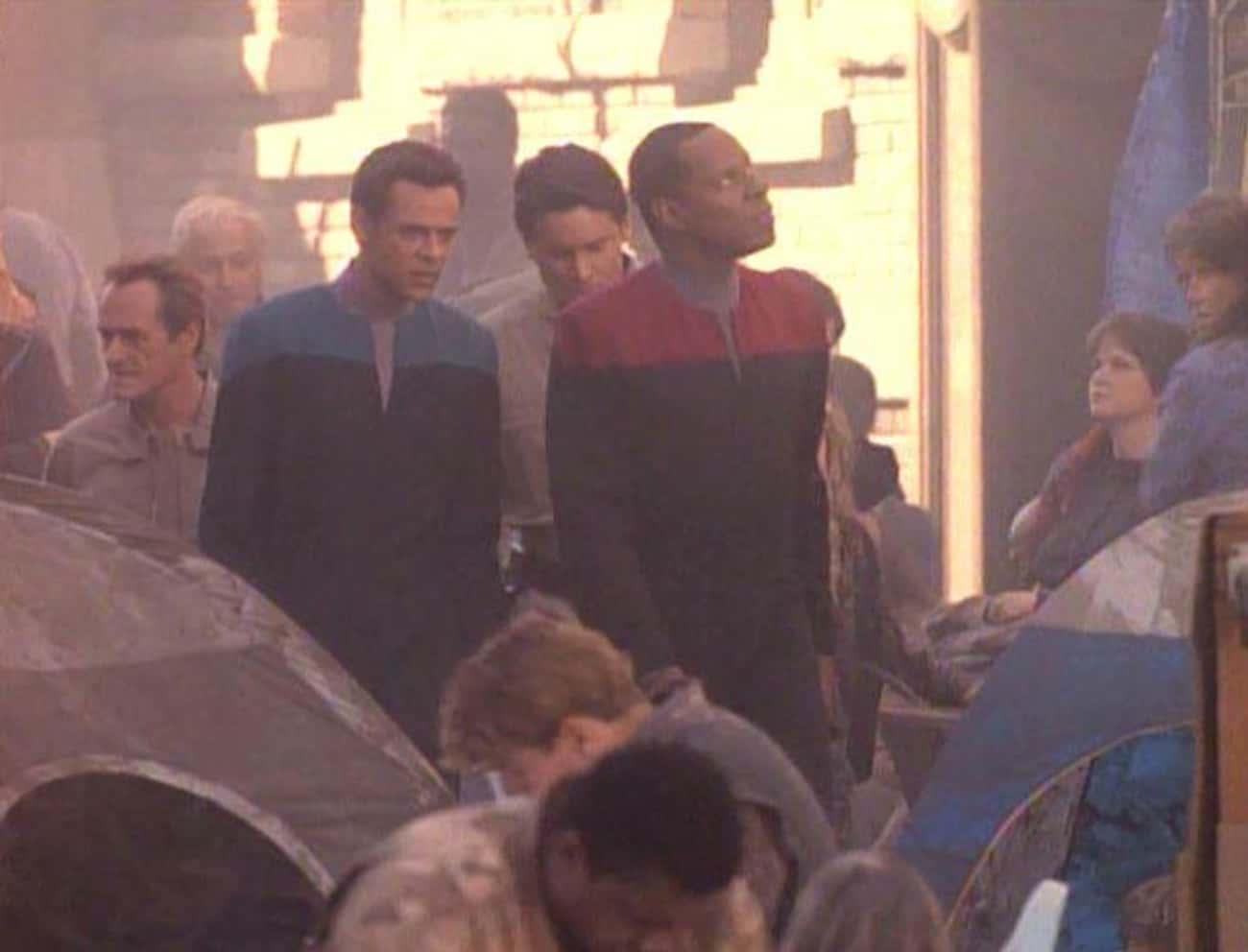
- Series: Star Trek: Deep Space Nine
- Episode: Season 3, Episode 11 & 12, "Past Tense"
Sisko, Bashir, and Dax are sent back in time to 2024 San Francisco after a transporter accident. They inadvertently change history by allowing Gabriel Bell, a key figure and activist during a period of rioting, to be killed. It's on them to restore history before they can travel back home.
Star Trek: Kids!
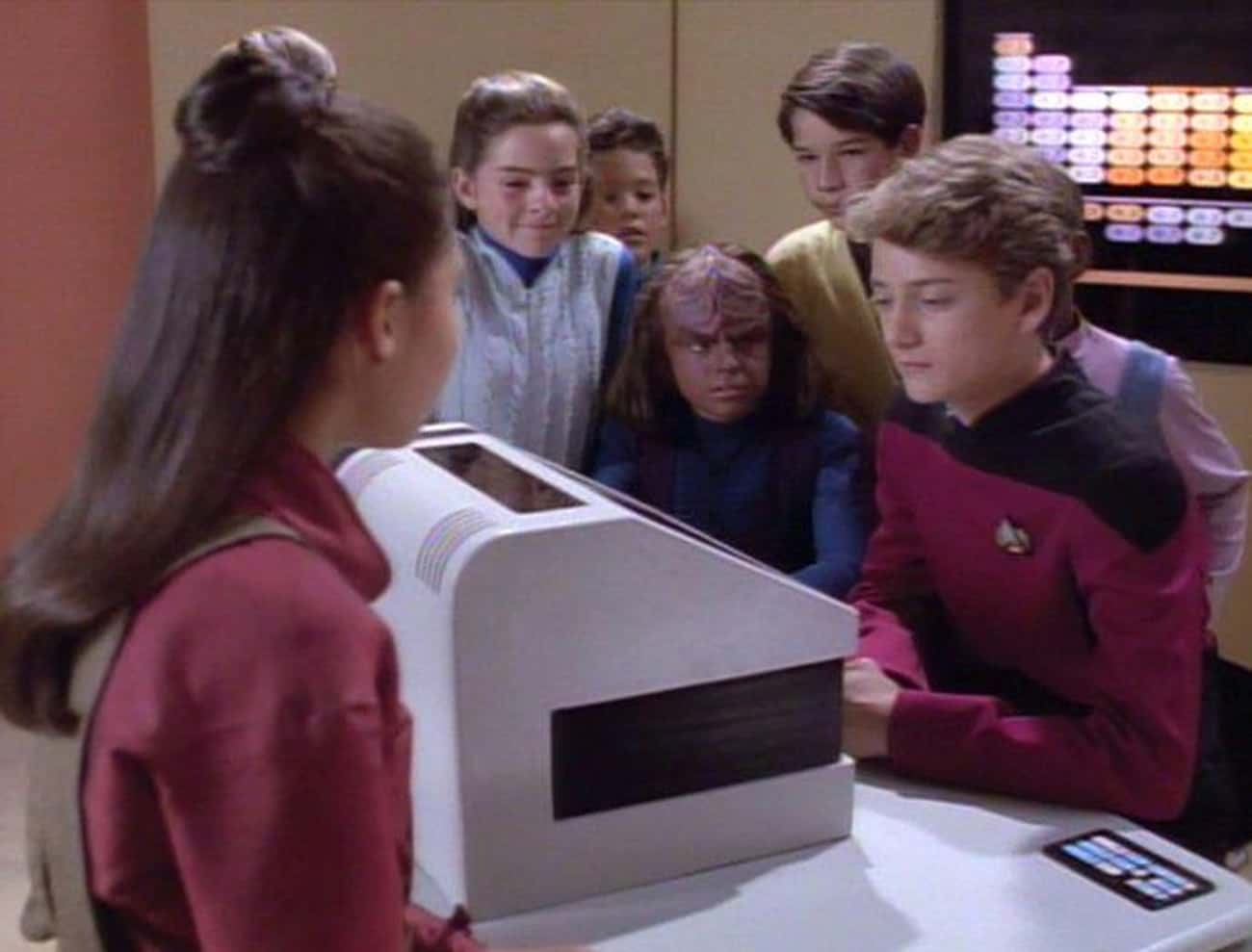
- Episode: Season 6, Episode 7, "Rascals"
Captain Picard, Ensign Ro Laren, Guinan, and Keiko O'Brien are returning from a botanical and archaeological expedition when their shuttlecraft is enveloped by an energy anomaly. An emergency transport to the Enterprise yields unusual results: Picard, Ro, Guinan, and Keiko reemerge on the transport pad as 12-year-old children!
Two Captain Kirks

- Episode: Season 1, Episode 5, "The Enemy Within"
The crew of Star Trek: the Original Series learned the hard way - don't have magnetic dust on your suit when beaming back up to the ship. The result? Two separate Captain Kirks, one good but incompetent, the other... pure evil.
Trapped in the Holodeck
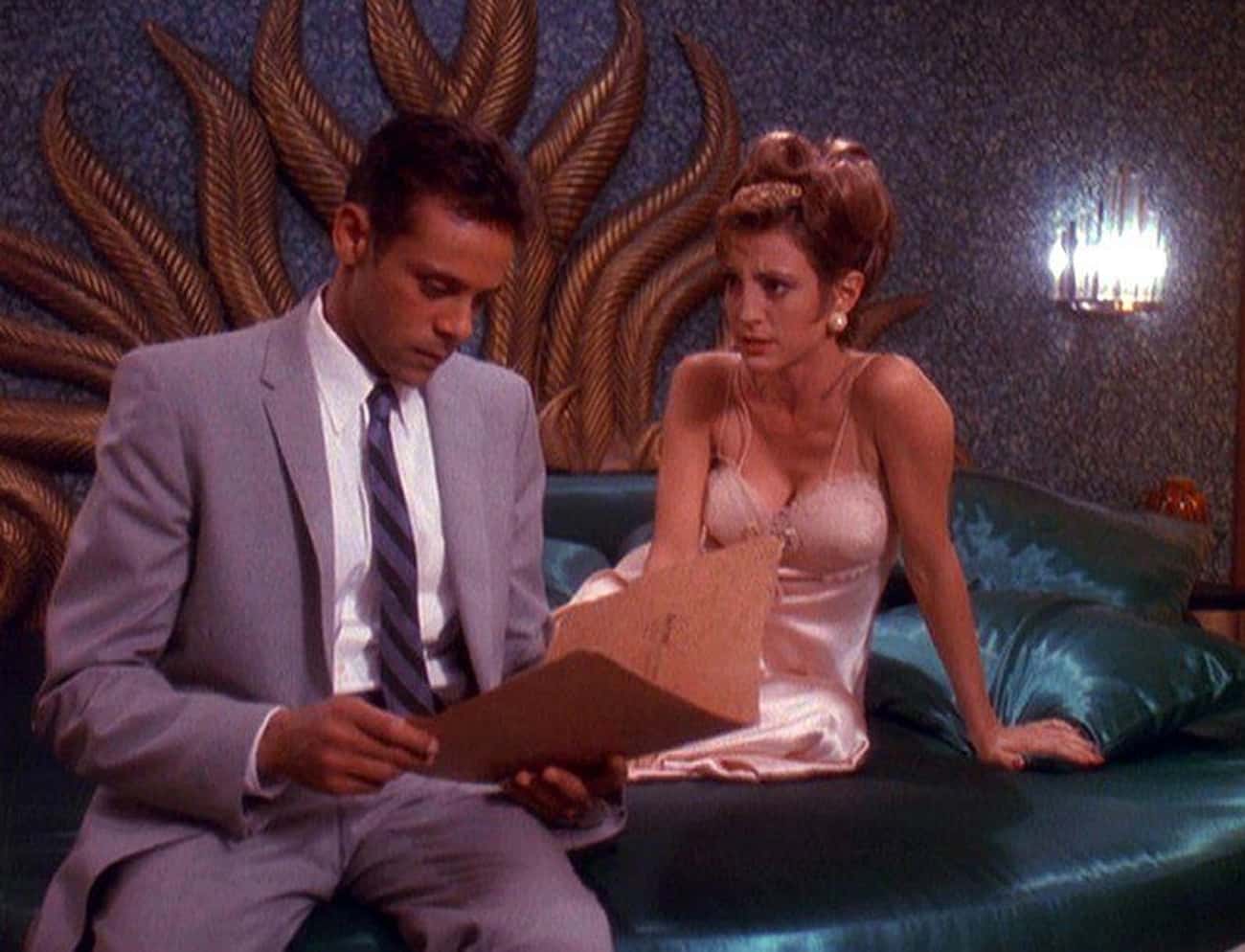
- Episode: Season 4, Episode 10, "Our Man Bashir"
An explosion prevents Captain Sisko, Worf, Kira, Dax, and O'Brien from materializing on the transport pad. To save them, the transporter chief is forced to download their physical forms to the holodeck... right in the middle of Dr. Bashir's James Bond -inspired holodeck program. To further complicate things, the crew doesn't have their own memories and believe themselves to be the characters from the program. It's up to Bashir to keep his fellow crewmen alive in the game, because if he can't, they'll die in real life.
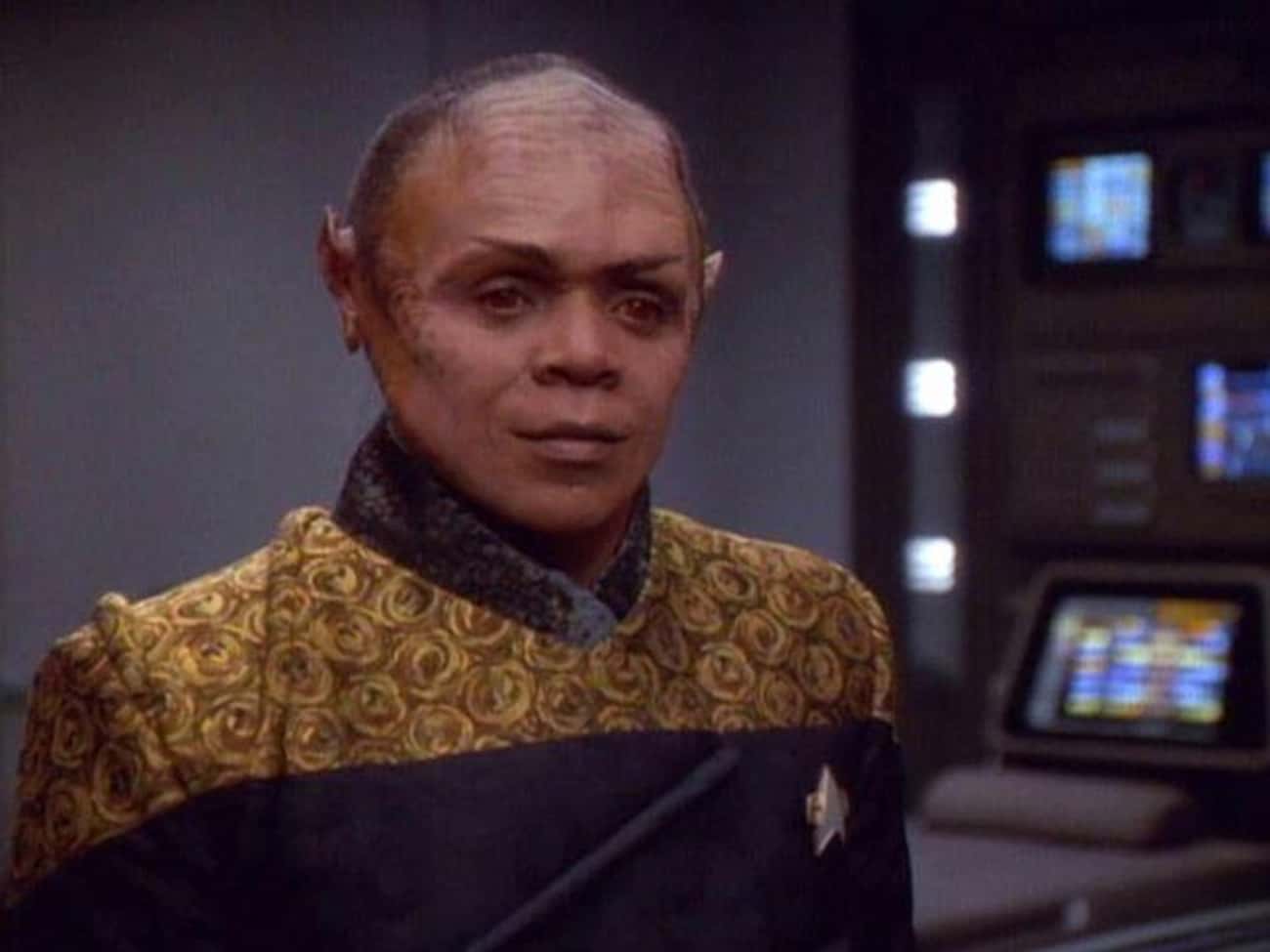
- Series: Star Trek: Voyager
- Episode: Season 2, Episode 24, "Tuvix"
Tuvok and Neelix beam back aboard after an excursion to an alien planet to retrieve some plant samples. Unfortunately, one of the orchids they brought back with them is the cause of a disturbing transporter accident that ultimately merges Tuvok and Neelix into one being - Tuvix. The crew accepts Tuvix for what he is (after all, they are on a journey to seek out new life forms), but things get complicated when the Doctor finds a way to reverse the process. By Captain Janeway's orders, Tuvok and Neelix are both restored, but Janeway has to live with the moral consequences of destroying the being known as Tuvix.
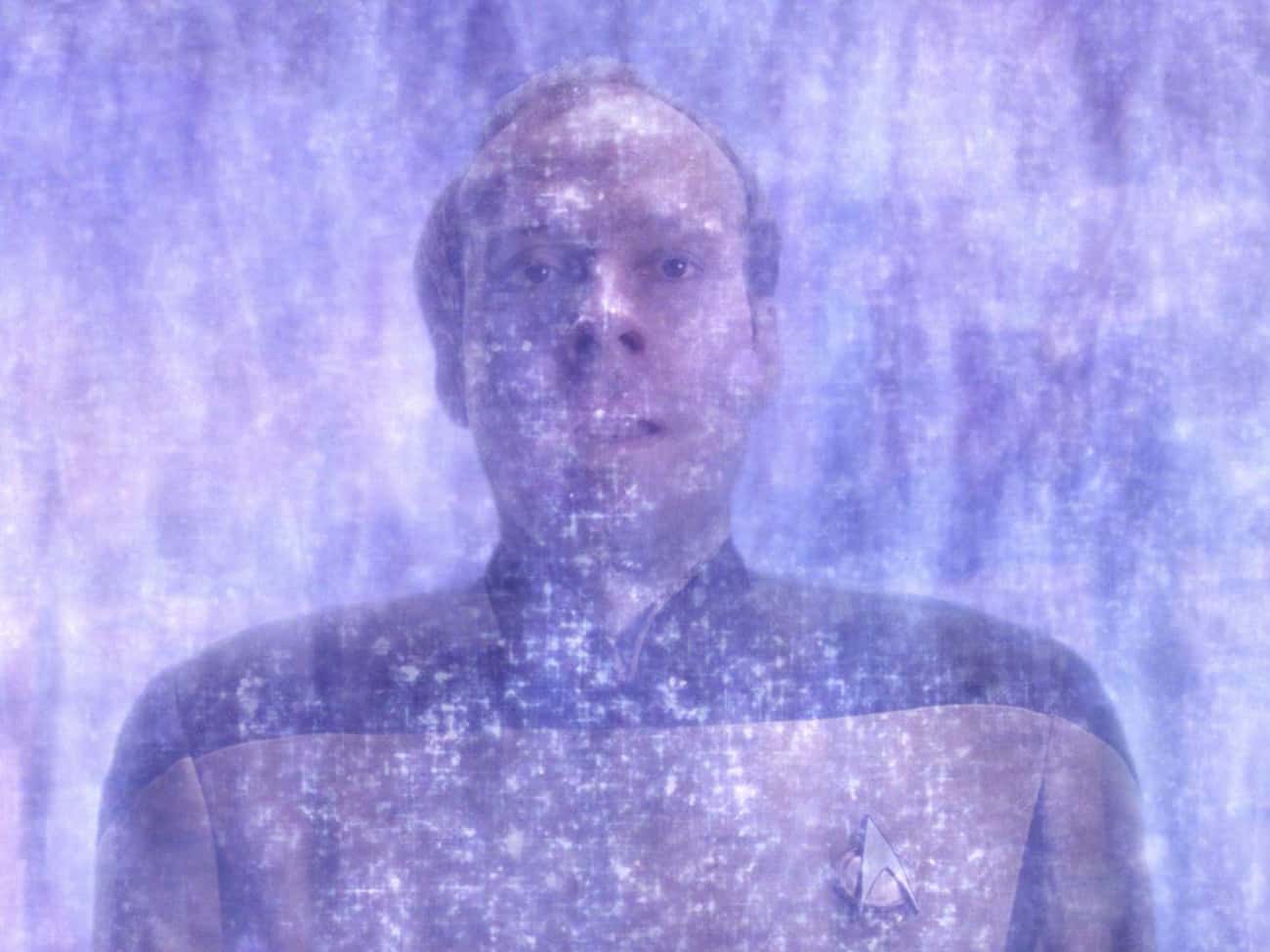
- Series: S tar Trek: The Next Generation
- Episode: Season 6, Episode 2, "Realm of Fear"
Reginald Barclay faces his fear of transporters only to find his phobia is more than warranted. During transport, Barclay sees a worm-like creature swimming around in the matter stream and touching his arm. He steps off the transporter pad more paranoid than ever, diagnosing himself with transporter psychosis. He suffers from debilitating pain and blue flashes randomly light up throughout his body. After some tests, the crew discovers quasi-energy microbes infiltrated Barclay's system during transport, which is the cause of all his issues. He's ultimately cured of his ailments, but his phobia of transporters is only worsened.
The Borg Drone
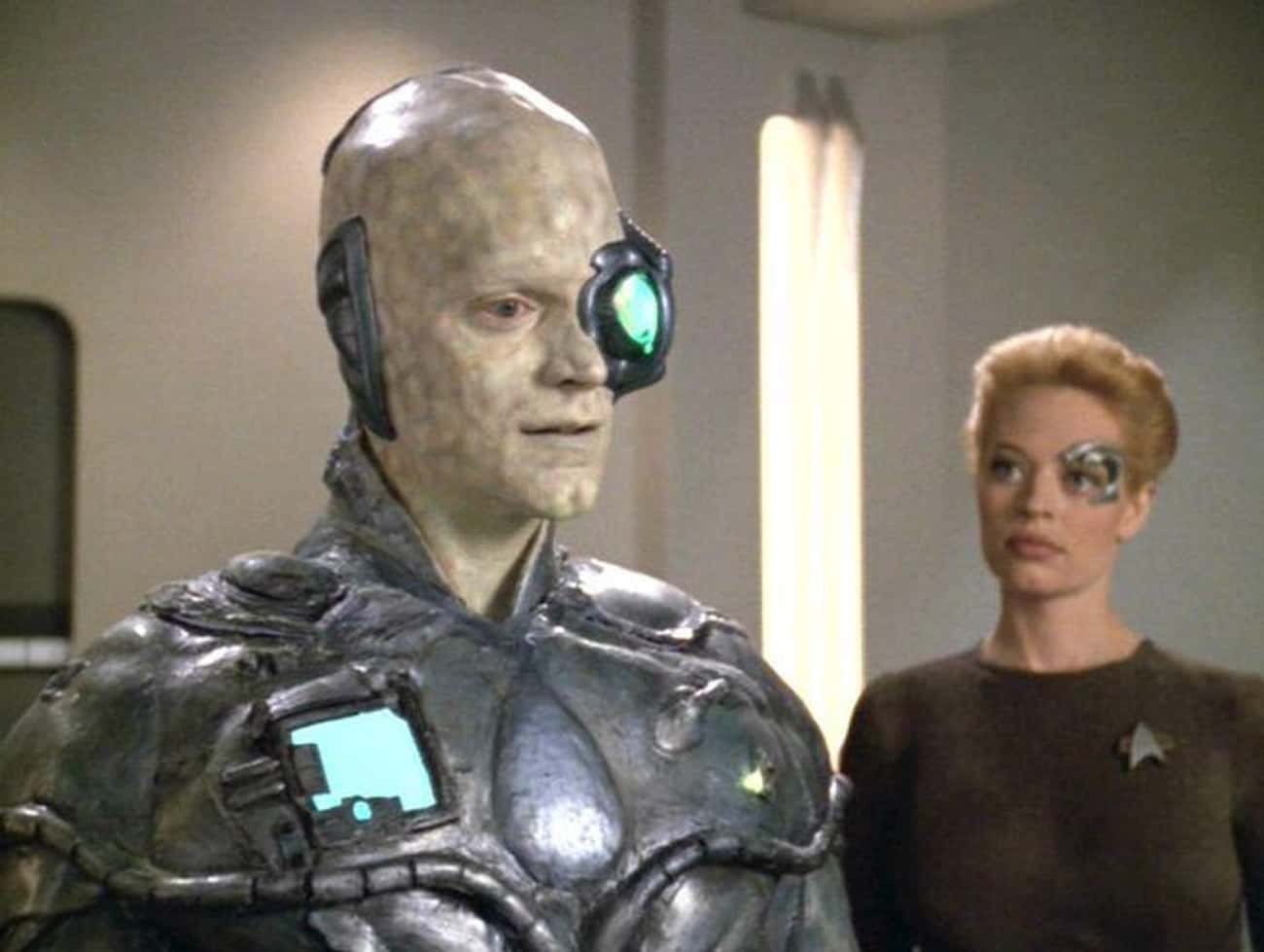
- Series: Star Trek: Voyager
- Episode: Season 5, Episode 6, "Drone"
A transporter mishap when Seven-of-Nine and the Doctor are beamed aboard led to the creation of a Borg drone! Seven's nanoprobes interacted with the Doctor's mobile emitter to bring this being to life, but the drone (given the designation "One") proves more powerful than anyone expected, accidentally alerting Borg forces to the location of the Voyager ship.
- Star Trek Universe
Live long, and prosper.
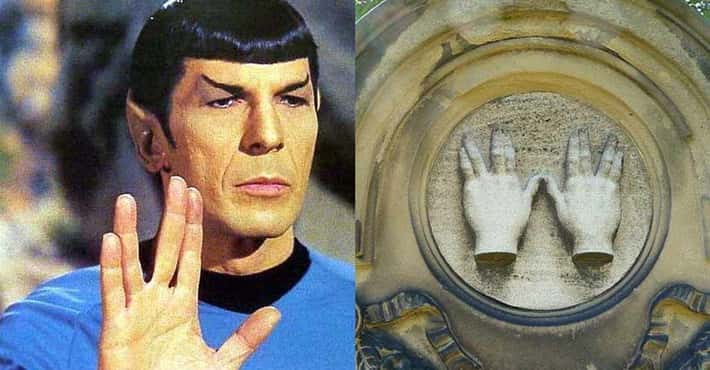
Hallmark Star Trek Ornaments
Collecting the future.

Category Archives: 113. 2022-24 Transporter
Hallmark star trek transporter water globe video overview.
An up close video demonstration of the Hallmark Transporter Water Globe has been posted by outsider238 . The globe debuted in 2022 but is still available in stores and online in 2023 with a retail of $99.99.
Product Details
Of all the 23rd-Century technological wonders aboard the U.S.S. Enterprise, none has proven more useful and more captivating than the transporter chamber. Experience the transporting effects of light, sound and motion as first used in the original Star Trek television series with the push of a button. This interactive water globe features Captain Kirk, Mr. Spock and Lieutenant Uhura during a recreation of beam-down and beam-up sequences as featured in the classic science-fiction series. Makes a great gift for fans of the popular Sci-Fi TV series.
- Star Trek resin and glass snow globe with light and sound features design of a transporter with Captain Kirk, Spock and Uhura.
- Press the button to start a light and sound show based on the classic original Star Trek series.
- Requires three (3) replaceable AAA batteries, included.
- For decorative use only.
- Keep out of direct sunlight to avoid possible fire hazard.
- 4.88″ W x 7.25″ H x 4.88″ D
Star Trek™ Transporter Snow Globe With Light and Sound on Sale
The Star Trek Transporter Snow Globe is on sale until November 28th. The transporter is now available online for $79.99, a savings of $20.00.

Comparing Hallmark’s Transporters
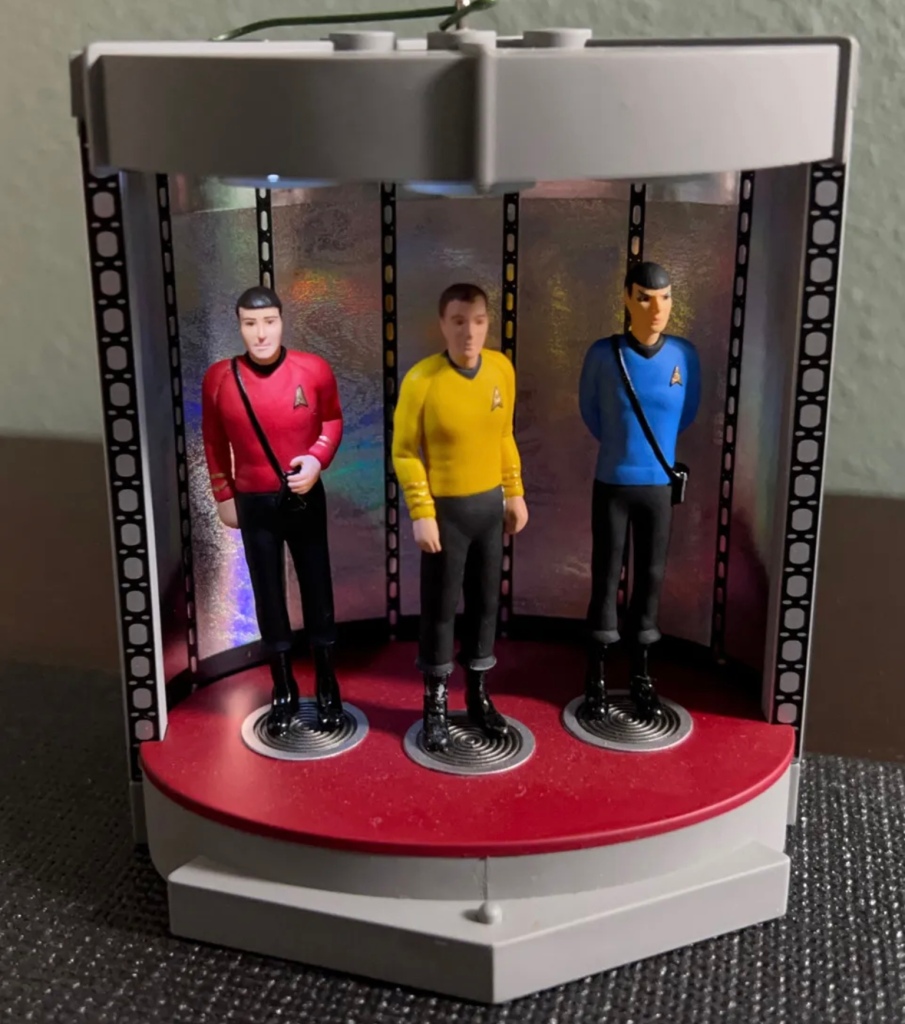
Transporter Ornament Year: 2006 Featured characters: Chief Engineer Scott, Captain Kirk, Science Officer Spock Transporter pads: 3 Power source: Requires 3 AAA batteries Size: 4¼” H Artist: Anita Marra Rogers Features: Press the button to see and hear Transporter effects. MSRP: $28.00 Comments: A big bang in a small package. What you give up in character detail and likeness you gain in light and sound. Possibly the brightest and loudest ornament in Hallmark’s Star Trek line. The only Transporter without dialogue.
Transporter Tabletop Decoration Year: 2019 Featured characters: Science Officer Spock, Captain Kirk, Dr. McCoy Transporter pads: 6 Power source: Plugs into a standard 120-volt wall outlet, no batteries needed Size: 7.3″ W x 7.6″ H x 7.7″ D Artist: Orville Wilson Features: Continuous light effect. Press the button to hear dialogue from the original “Star Trek” television series and see a synchronized light show. MSRP: $99.99 Comments: Fantastic detail, most obvious in the away team’s overly snug uniforms. Best reproduction of the transporter pad. Dialogue is clear with more bass than the most Magic Sound. No batteries is a plus if power is easily accessible. Larger size could be a detriment if display space is a premium.
Transporter Snow Globe Year: 2022 Featured characters: Science Officer Spock, Captain Kirk, Lt. Uhura Transporter pads: 3 Power source: Requires 3 AAA batteries Size: 4.88″ W x 7.25″ H x 4.88″ D Artist: Unknown Features: Press the button to start a light and sound show based on the classic original Star Trek series. MSRP: $99.99 Comments: The spinning glitter is an awesome new transporter effect. Cool dialogue. Friendly size for displaying on a shelf or desk. Character detail quality falls in the middle of the three transporters.
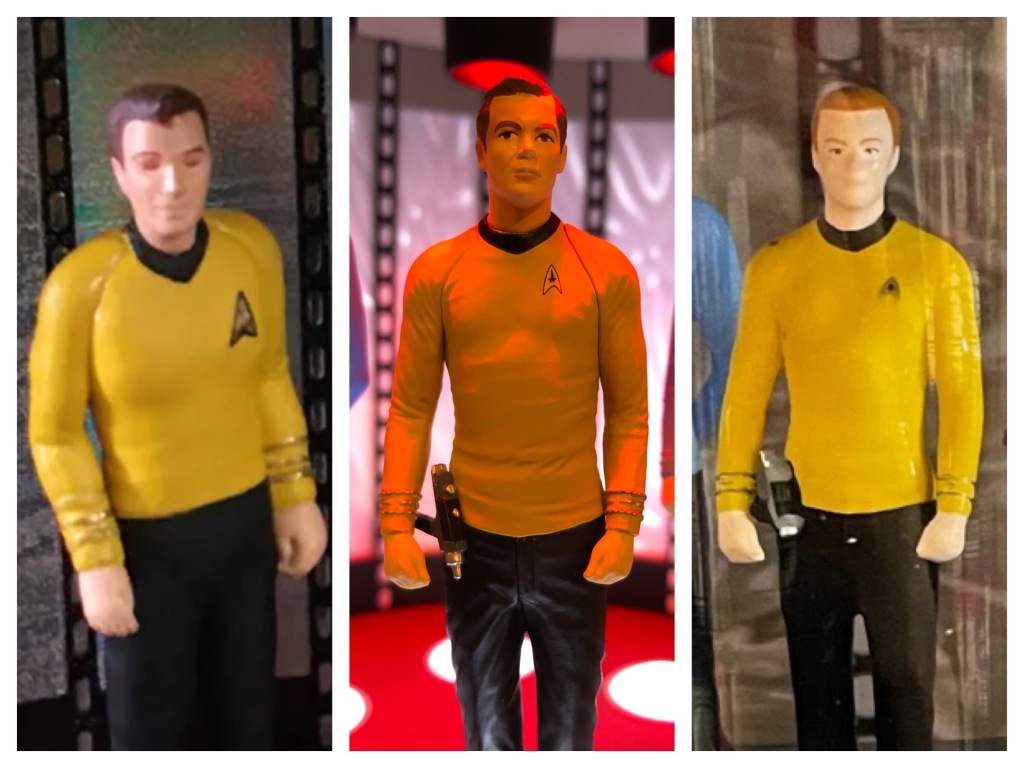
2022 Transporter Water Globe Packaging
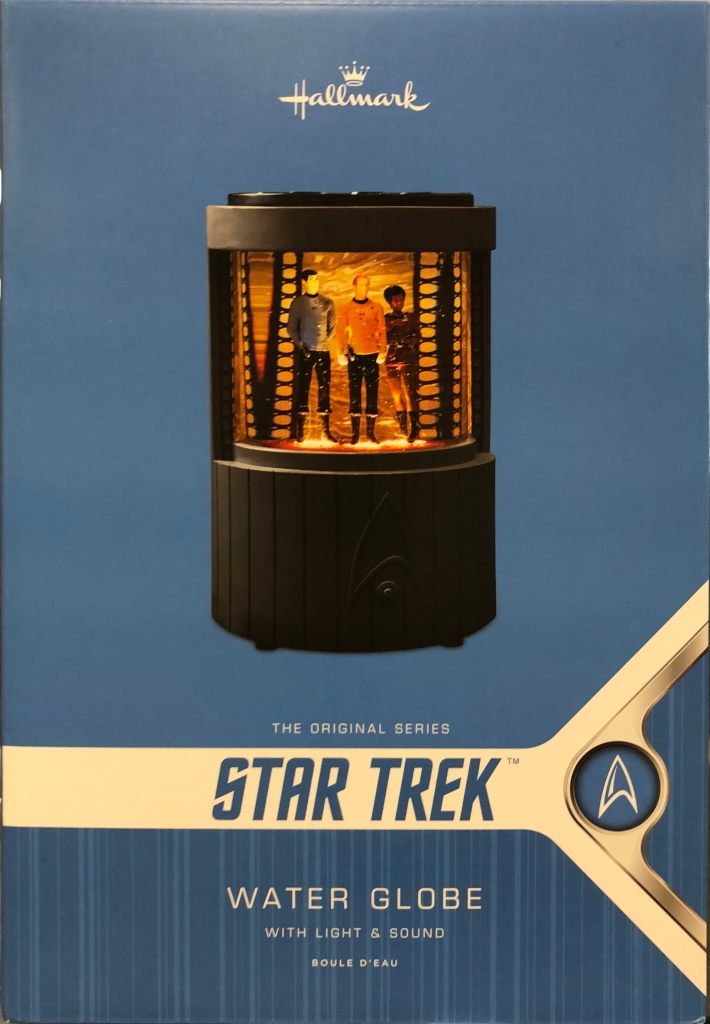
View this post on Instagram A post shared by PopMinded by Hallmark (@popminded)
113) 2022 Star Trek™ Transporter Water Globe With Light and Sound
Star trek™ transporter water globe with light and sound.
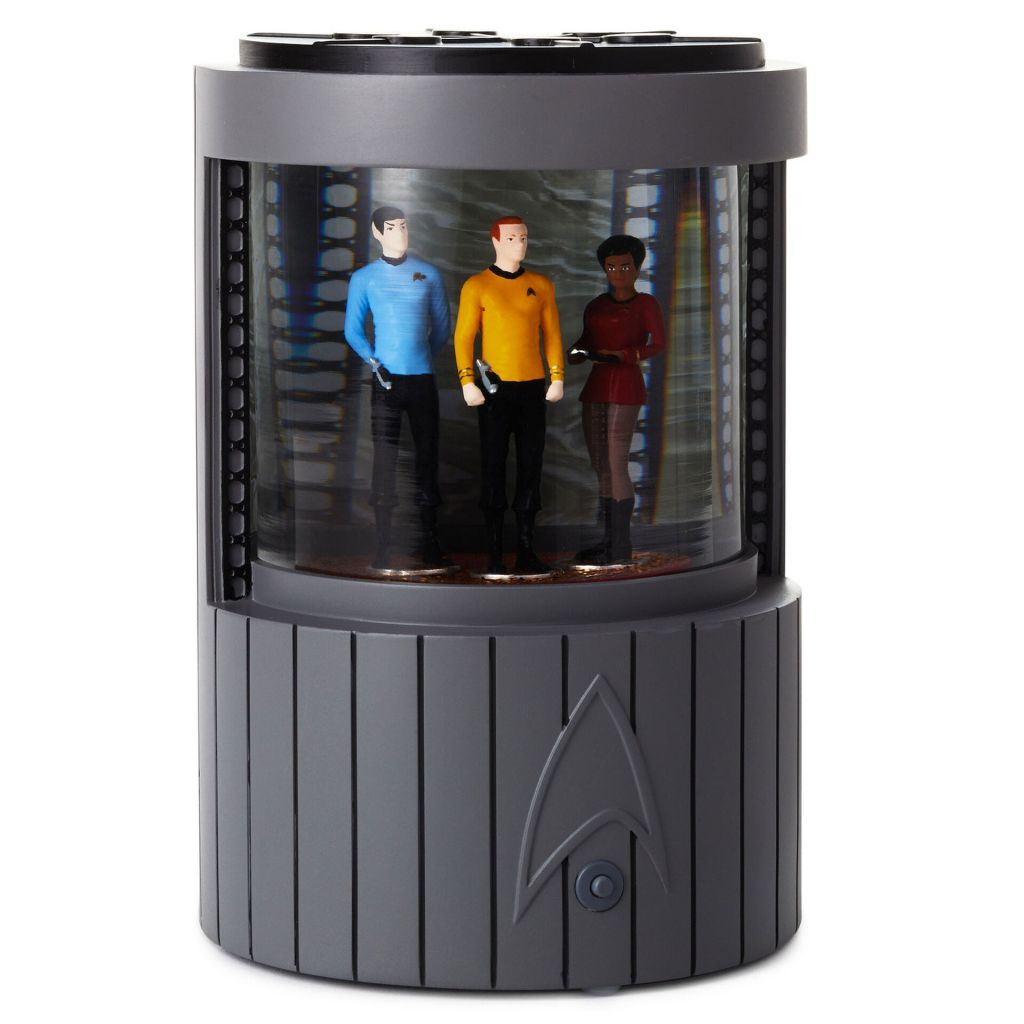
Regular price: $99.99
- SKU: 0001SRT1010
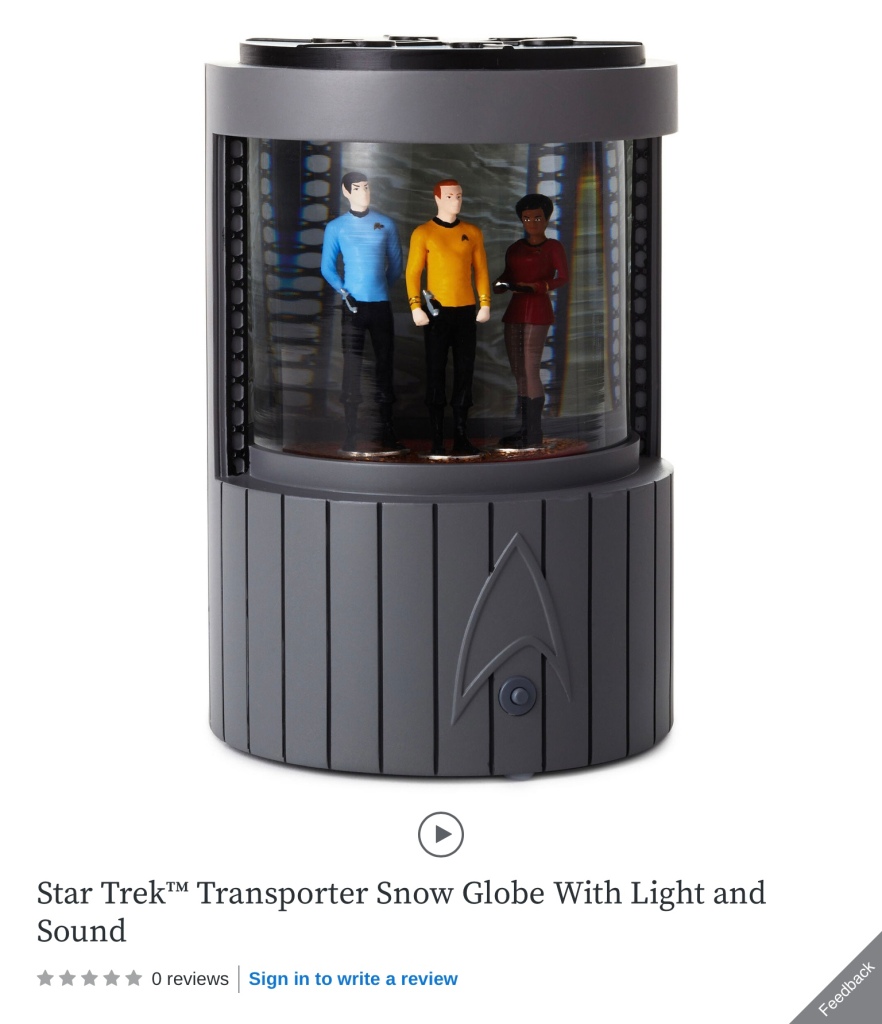
Star Trek Transporter Water Globe Video
Kirk : “Ready the transporter room, Mr. Spock. We’re beaming down.” Spock : “Understood, Captain. Please stand by in the transporter room.” Kirk : “Transporter ready?” Scotty : “Aye, sir.” Kirk : “Thank you, Scotty. Energize.” ::Transporter activates::
Kirk : “Kirk to Enterprise.” Scotty : “Scott here, sir.” Kirk : “We’re beaming up. Notify transporter room. Scotty : “Aye, aye, sir. Transporter room, stand by to beam up landing party. All hands standing by, sir.” Kirk : “Energize.” Scotty : “Energize.” ::Transporter activates::
Star Trek Water Globe, Phone Holder and Frame
Thanks again to John L. for supplying us with more images of his Star Trek haul.
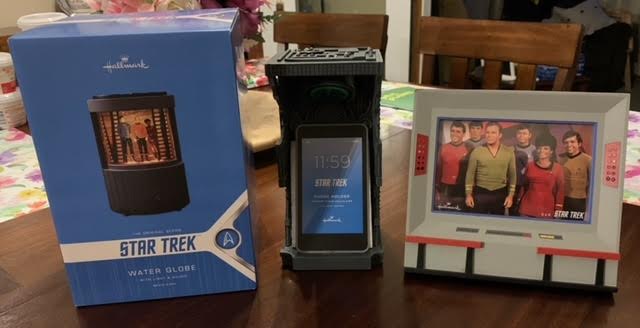
Star Trek Water Globes Are Hitting Stores!
A big thank you to John L. for the photo below and passing along that Star Trek water globes are just hitting stores. In fact, John says he will be picking his up tomorrow. Feel free to forward us any photos!
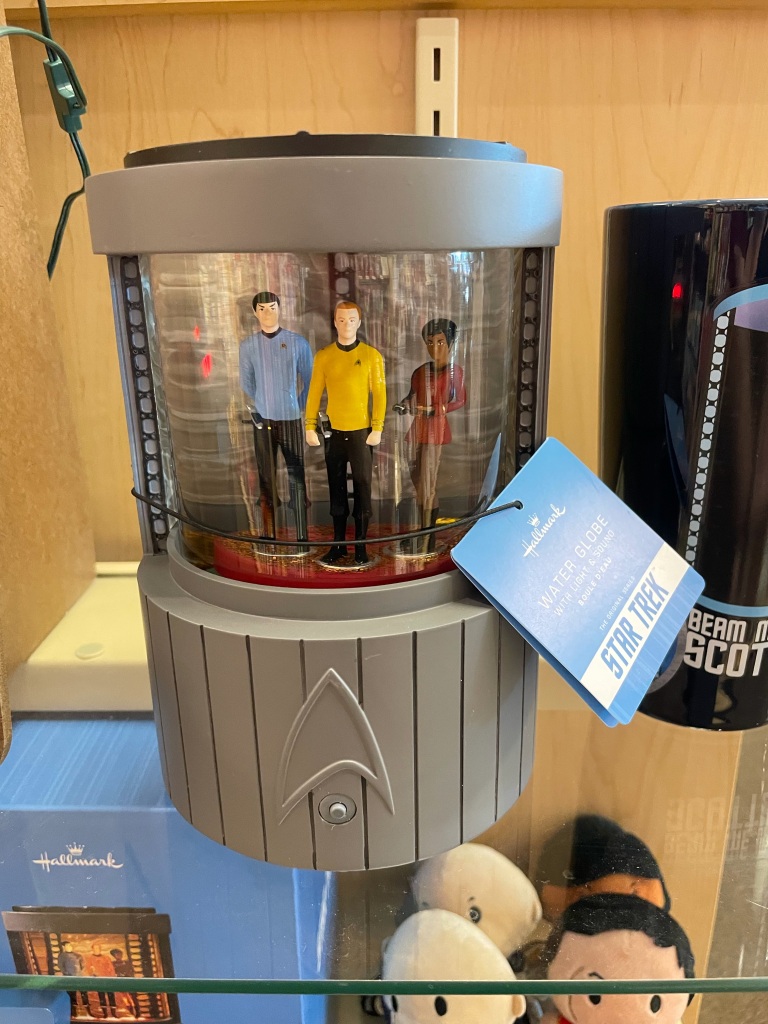
Where is the Star Trek Water Globe?
In April, at Star Trek Mission: Chicago, the PopMinded booth displayed the upcoming 2022 Trek merchandise which included a Star Trek Transporter Water Globe. The display showed a release date of August in photos posted by TrekCore .
The Transporter Chamber was displayed again at the PopMinded both at San Diego Comic-Con. It is said to have light and sound with a retail of $99.99.
My inbox has been hit up more and more as the month has progressed with inquiries on the Trek water globe. Unfortunately, as we near the end of August, there are still no signs of it. Whether it has been delayed to the fall, pushed back to 2023 or scrubbed completely is still to be discovered.
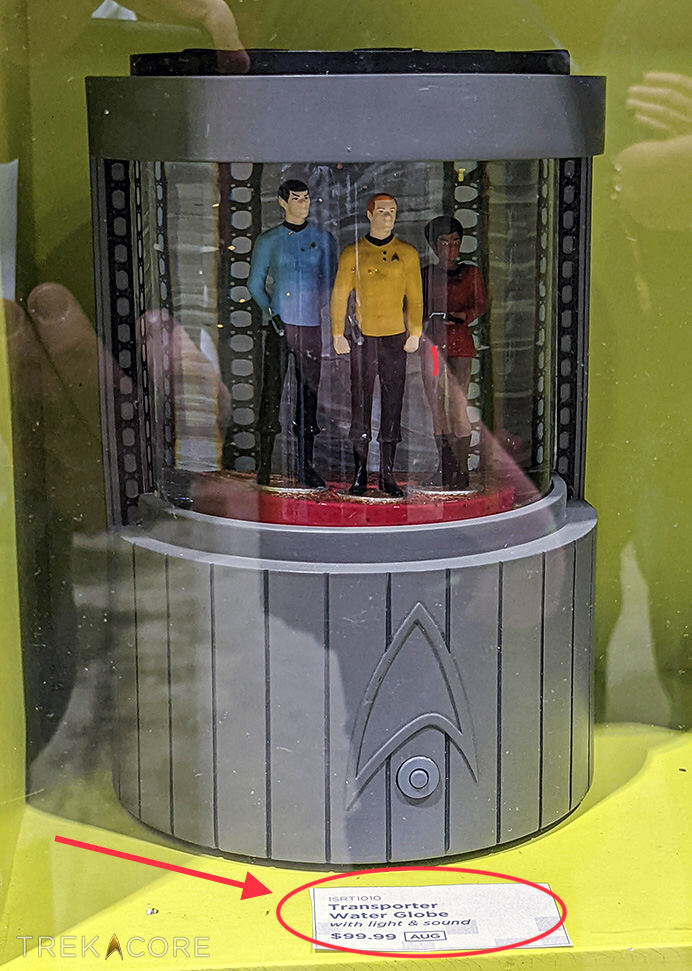
Star Trek Transporter Water Globe Coming in August
Hallmark appears to be expanding their Star Trek universe. The Star Trek water globe, available in August, seems to be a direct descendent of Hallmark’s take on the Keepsake Table Toppers (2016’s “To Boldly Go” and 2019’s Transporter ). The water globe has the familiar Star Trek character figures and employs the light and sound technology seen in the Keepsake line for years.
It has yet to be seen how the water globe will be marketed but it is possible it will be in stores as an off-season product since it will not be under the Keepsake label. Transporter Water Globe (ISRT1010) with light and sound Available: August 2022
Retail: $99.99
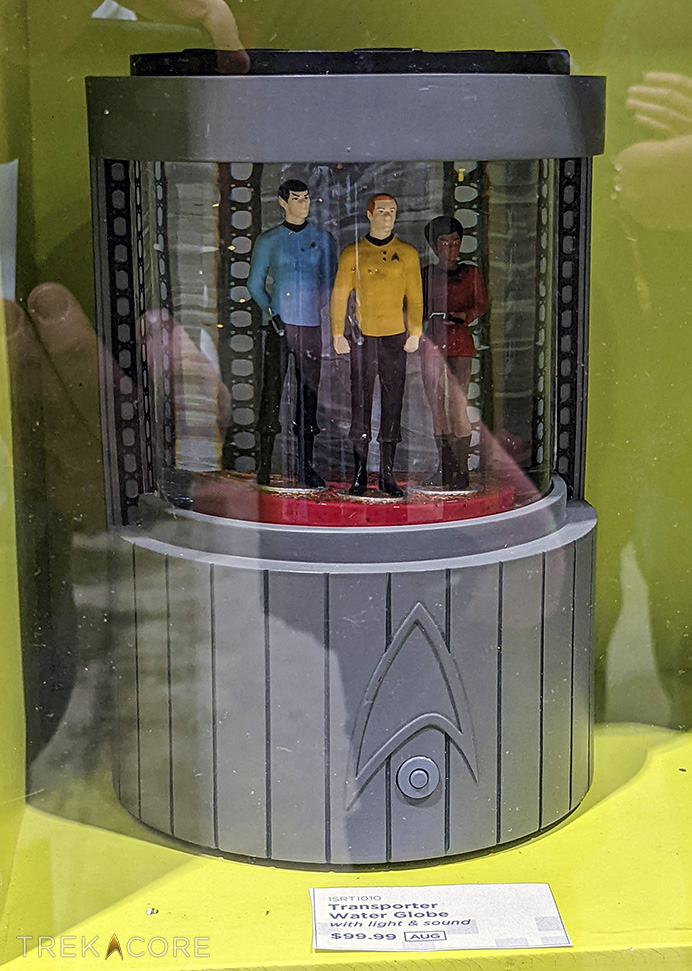
- Already have a WordPress.com account? Log in now.
- Subscribe Subscribed
- Report this content
- View site in Reader
- Manage subscriptions
- Collapse this bar

This Was Anton Yelchin's Favorite Episode From Star Trek: The Original Series
J.J. Abrams' 2009 "Star Trek" feature film wasn't so much an adaptation of the 1966 TV series as it was a film version of how non-Trekkies view the franchise. To explain: on the TV series, Captain Kirk (William Shatner) is typically depicted as being judicious, stern, and decisive. Because of the few times Kirk solved problems with his fists, however, he has gained a (perhaps unfair) reputation for being a reckless cowboy, an insufferable lothario, and a flippant charmer. Abrams' version of Kirk (Chris Pine) rolled with those misconceptions, making a "high-octane" version of the character. Indeed, all the characters are now broader, more passionate versions of themselves. This is in addition to each of them being secret super-geniuses, deeply expert in at least one field of science, language, medicine, or engineering.
Case in point, Chekov (Anton Yelchin) knows how to operate a transporter in such a way that he can snatch crewmates right out of the air as they plummet through a planet's atmosphere below. Everything in the 2009 "Star Trek" is shifted into overdrive, with whirling cameras, shouting, fighting, and desperate last-minute escapes. Abrams turned "Star Trek" into an action movie.
That said, many of the new cast members did their "Star Trek" homework, watching old episodes of the original series and using their forebears as models for the latest versions of their characters. Yelchin in particular closely emulated Walter Koenig, and was even careful to imitate Koenig's unique Russian accent, even if it wasn't wholly accurate.
In 2009, TrekMovie interviewed the late Yelchin about playing Chekov, asking the actor -- perhaps naturally -- what his favorite episode of the original series was. Surprisingly, Yelchin was very fond of "Who Mourns for Adonais?," the episode wherein the Enterprise crew faces off against the Greek god Apollo.
Read more: The 21 Best Star Trek Original Series Episodes, Ranked
Yelchin Thought That 'Who Mourns For Adonais?' Was 'Fascinating'
"Who Mourns for Adonais?" (September 22, 1967) begins with the Enterprise being grabbed in space by a giant green human hand. Kirk and company beam down to a nearby planet to find Apollo (Michael Forest) living there. This appears to be the actual god Apollo of Greek myth, and he demands that the Enterprise crew worship him, just like he used to be worshiped back on Earth. Kirk, Chekov, and the others surmise that Apollo is actually an ancient alien that once visited Earth thousands of years ago, and the locals assumed he was a god. Kirk explains to Apollo that humans have outgrown the need for gods, and Apollo is sad. After Apollo ascends to join the other "gods," Kirk admits that even without the benefit of divinity, modern civilization still owes a lot to ancient Greek culture. The title is a reference to an 1821 Percy Shelley elegy about John Keats.
Yelchin probably liked "Adonais" because Chekov has a lot to contribute. He was part of the episode's landing party, and he was active and contributive. In Yelchin's words:
"Probably the one with Apollo. I think is such an intelligent episode. It is an episode where the basic point is that humanity ... looking at it in terms of the '60s when men are their own gods, and look at where they brought their universe to. It was such a fascinating, touching, weird thing to have an episode. Where men come to a planet where a god wants to be a god again."
No such heady concepts were included in the 2009 film, as it was, as mentioned, an action picture. But It's nice to see that Yelchin found some of the original Trek concepts to be interesting.
'Amok Time' - A.k.a. The Pon Farr Episode
Yelchin also liked "Amok Time," saying, "I also love the episode where Spock is PMSing and where Kirk has to fight Spock."
That's an indelicate way of describing pon farr, a Vulcan phenomenon where their bodies sexually activate once every seven years. While undergoing pon farr, Vulcans become unbearably horny, but also very angry and animalistic. They are moved to mate. In "Amok Time" (September 15, 1967) , Spock (Leonard Nimoy) undergoes pon farr and returns to Vulcan to marry his betrothed T'Pring (Arlene Martel). T'Pring finds that Kirk is a more appealing mate, however, and Kirk and Spock have to fight in a Vulcan gladiatorial arena for her hand. It's a notable episode of "Star Trek" because of the amount of Vulcan lore it introduced into the franchise, but many -- like Yelchin -- seem attached to the episode's silly, horny violence.
Yelchin also admitted that he did more research than some of his co-stars. He read "The Star Trek Encyclopedia" by Mike and Denise Okuda, and watched every episode of the show. Chris Pine, it seems, began watching the series, but stopped partway through the first season. "I kept going. I loved it," Yelchin said. "I even watched the episodes that Chekov wasn't in. The ones that he was in I found interesting, like when they go to a bar in 'The Troubles With Tribbles' and they have a drink, I liked that."
Yelchin also played Chekov in "Star Trek Into Darkness" in 2013 and in "Star Trek Beyond" in 2016, released posthumously .
Read the original article on SlashFilm
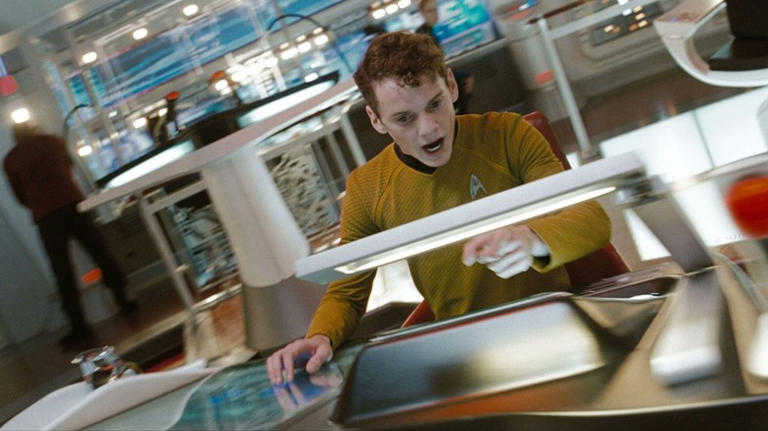
Screen Rant
3 star trek ships have crossed to & from the mirror universe.
Many Star Trek characters have met their Mirror counterparts but 3 starships have also crossed over from the Prime and Mirror Universes.
- Mirror Universe featured evil versions of Star Trek characters, with starships rarely crossing between universes.
- Star Trek: Enterprise revisited Mirror Universe with USS Defiant, while Star Trek: Discovery explored it with USS Discovery.
- ISS Enterprise appeared in Mirror Universe, where Spock implemented reforms for a more peaceful way of life.
Three Star Trek ships have crossed between the Mirror Universe and the Prime Universe. Introduced in the classic episode of Star Trek: The Original Series , "Mirror, Mirror," the Mirror Universe is a dark parallel reality featuring evil versions of Star Trek's characters. Although the Mirror Universe has popped up on several Star Trek series since its introduction, starships rarely make the jump between universes. In "Mirror, Mirror," it was a transporter malfunction that caused Captain James T. Kirk (William Shatner) and his USS Enterprise crew members to end up in the Mirror Universe, but that's not the only way characters have traveled between the two realities.
Star Trek: Enterprise revisited the Mirror Universe with season 4's two-part episode, "In a Mirror, Darkly," which saw the return of the original USS Defiant. Star Trek: Discovery 's characters aboard the USS Discovery also visited the Mirror Universe in the show's first season. In Star Trek: Discovery season 5, episode 5 , "Mirrors," the ISS Enterprise made its first appearance since its introduction in Star Trek: The Original Series. In the Mirror Universe, the authoritarian Terran Empire rose instead of the United Federation of Planets, and Starfleet is comprised of warships like ISS Enterprise that conquer and subjugate other worlds. Here are 3 starships that crossed over between Star Trek 's Prime and Mirror Universes.
I'm Glad Star Trek: TNG Never Did A Mirror Universe Episode
The uss defiant in star trek: enterprise, star trek: the original series season 3, episode 9 - "the tholian web" & star trek: enterprise season 4, episodes 18 & 19 - "in a mirror, darkly".
Although Star Trek: Deep Space Nine's USS Defiant would become the more famous ship to bear the name, there have been multiple ships named Defiant , including a 23rd-century Constitution Class starship first seen in Star Trek: The Original Series . In the TOS episode, "The Tholian Web," the USS Enterprise was sent to locate the Defiant , which they found trapped between universes, with its entire crew dead due to apparent insanity and mutiny. In a conflict with the Tholians, the Defiant was pushed through a spatial hole to an unknown destination.
The final destination of the USS Defiant was revealed in Star Trek: Enterprise's Mirror Universe two-parter, "In a Mirror, Darkly." The Defiant both traveled back in time and crossed into the Mirror Universe. The Mirror Universe Tholians then began to salvage the ship, but Commander Jonathan Archer (Scott Bakula) of the ISS Enterprise NX-001 plotted to steal the Defiant and use its advanced 23rd technology to install himself as Emperor of the Terran Empire. Archer commandeered the Defiant but en route to Earth, Lt. Hoshi Sato (Linda Park) poisoned Archer and took command of the Defiant, declaring herself Empress.
Star Trek: Deep Space Nine later introduced the Defiant Class USS Defiant, and the Mirror Universe had its own version although neither crossed universes.
The USS Discovery in Star Trek: Discovery
Star trek: discovery season 1.
Star Trek: Discovery season 1 spent five episodes in the Mirror Universe after Captain Gabriel Lorca (Jason Isaacs) manipulated the starship and crew back to the alternate reality he originated from. Previously unknown to the Discovery's crew, Lorca was actually from the Mirror Universe and intended to use Michael Burnham (Sonequa Martin-Green) to gain access to Emperor Philippa Georgiou (Michelle Yeoh) and her ship. Lorca altered the coordinates for Discovery's spore drive, knowingly taking the ship into the Mirror Universe.
In the Mirror Universe, Michael Burnham was the adopted daughter of Emperor Georgiou and plotted with her lover, Lorca, to kill her mother.
Once in the Mirror Universe, Discovery's crew had to masquerade as their evil counterparts as they searched for a way to get home. Burnham eventually discovered Lorca's ruse and thwarted his plan before Emperor Georgiou ultimately killed him. Lorca's betrayal deeply affected Burnham and the rest of Discovery's crew, and their time in the Mirror Universe greatly cost the Federation. When Discovery returned to the Prime Universe nine months after they had left, the Federation/Klingon War was going badly, but Burnham and Georgiou helped bring the conflict to an end.
Michelle Yeoh will reprise the role of Emperor Georgiou as the star of the upcoming Star Trek: Section 31 made-for-streaming film.
Star Trek’s 10 Most Evil Mirror Universe Characters
The iss enterprise in star trek: discovery, star trek: discovery season 5, episode 5 - "mirrors".
Star Trek: Discovery season 5 sends Captain Michael Burnham and the USS Discovery on an intergalactic treasure hunt for the powerful technology of the Progenitors , the creators of humanoid life. As part of their search, the crew of the Discovery finds a wormhole that leads to a pocket of interdimensional space, where they find the abandoned ISS Enterprise. The 23rd-century starship became a lifeboat for refugees fleeing the brutal Mirror Universe. According to a plaque on the ship, Mirror Universe Spock (Leonard Nimoy) implemented a series of reforms for a more peaceful way of life after his encounter with Prime Universe Captain Kirk (William Shatner).
Star Trek: Discovery season 5 filmed its ISS Enterprise scenes on the redressed USS Enterprise sets belonging to Star Trek: Strange New Worlds.
Although Spock was killed for his beliefs, he inspired others to set out in search of a better life. Despite an undoubtedly difficult journey, at least some of the refugees from the Mirror Universe's ISS Enterprise made a life for themselves in the Prime Universe. One of the refugees, a woman named Dr. Cho, became one of the seven scientists who helped hide the Progenitors' technology. She placed her clue on the ISS Enterprise, which remained undisturbed for centuries. Star Trek: Discovery season 5 has revisited several storylines from Star Trek's history, and the return of the ISS Enterprise serves as a nice shout-out to the Star Trek series where it all began.
Star Trek: The Original Series, Star Trek: Enterprise, & Star Trek: Discovery are all available to stream on Paramount+.
Star Trek: The Original Series
Star trek: enterprise, star trek: discovery.
- More to Explore
- Series & Movies
Published Apr 26, 2024
RECAP | Star Trek: Discovery 505 - 'Mirrors'
No matter how bad things get, the one thing you always have is a choice.
SPOILER WARNING: This article contains story details and plot points for Star Trek: Discovery.

StarTrek.com
Previously, in " Face the Strange ," Moll and L'ak unleash a time bug aboard the U.S.S. Discovery, designed to paralyze them and keep them stuck as they're randomly cycled through time. Once they're ahead of Discovery and on to the next clue, they can escape the bounty on their heads and finally be free.
In one time loop, Zora informs Burnham and Rayner one of the outcomes they feared had come to pass — the Breen gained control of the Progenitors' tech and destroyed everything, leading the Kellerun to believe the Breen must be the ex-courier's highest bidder. Thankfully for the crew, they're back in the mix and only lost six hours. Plus, they discovered a warp signature matching Moll and L'ak.
In Episode 5 of Star Trek: Discovery , " Mirrors ," Captain Burnham and Book journey into extra-dimensional space in search of the next clue to the location of the Progenitors' power. Meanwhile, Rayner navigates his first mission in command of the U.S.S. Discovery , and Culber opens up to Tilly.

- Cleveland "Book" Booker
- Michael Burnham
- Paul Stamets
- Sylvia Tilly
- William Christopher
- Dr. Hugh Culber
- Moll (Malinne Ravel)
- Breen Primarch

- U.S.S. Discovery -A
- Discovery shuttle
- I.S.S. Enterprise
- Breen warship

In his quarters aboard the U.S.S. Discovery -A, Cleveland "Book" Booker contemplates advice given to him by his mentor and namesake, "No matter how bad things get, the one thing you always have is a choice." Book gazes at a holo of Moll — real name Malinne Ravel, the daughter of his predecessor — certain that she is capable of turning things around just as he had. Aware that Cleveland Booker IV saved his life, Book believes he owes it to him to do the same for his daughter.
With Discovery at Moll and La'k’s last known coordinates, Book makes his way to the Bridge, where Captain Michael Burnham gives the stage to Commander Paul Stamets and Lieutenant Sylvia Tilly. Though it appeared as if the couriers' ship left a warp trail which disappeared into empty space, adjusting the viewscreen to compensate for the Lorentzian coefficient in high-energy spectra reveals the presence of a fluctuating wormhole. Stamets states that it leads to a pocket of interdimensional space and is collapsing and expanding due to matter-antimatter chain reactions, likely caused by the Burn.
Captain Burnham surmises that the next clue resides within the wormhole, and Tilly notes that Moll and L'ak are probably in there, as well. Lieutenant Gallo, Commander Rayner, and Lieutenant Christopher brief the captain — sensors can’t penetrate the aperture, the opening isn’t large enough to fit Discovery’s saucer, and there’s no guarantee that they’ll be able to maintain comms contact. Burnham nods, ordering Lieutenant Linus to prepare a shuttle with boosted comms and fortified shields before requesting that Lt. Commander Gen Rhys place a security team on standby.
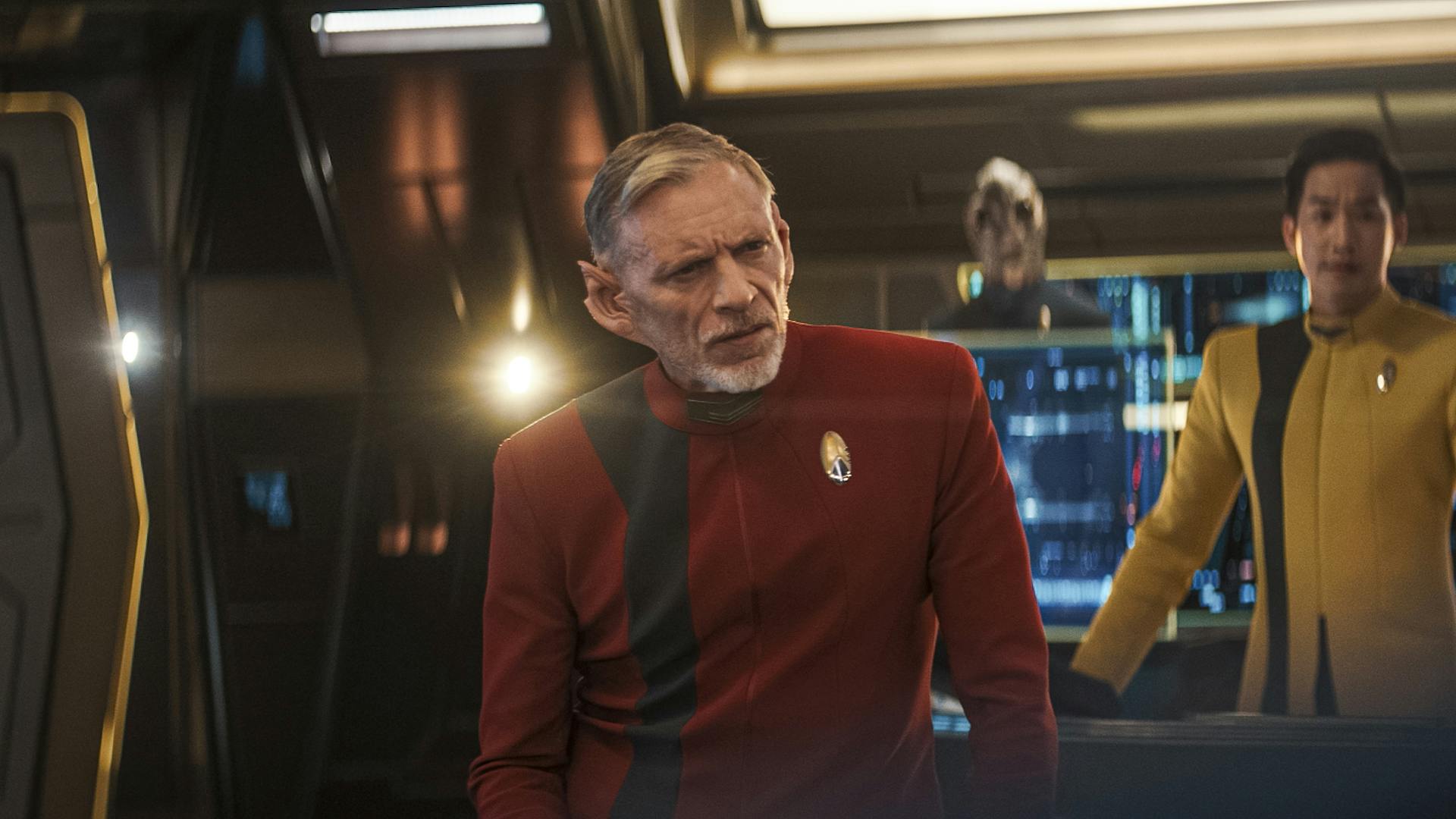
"Mirrors"
The captain's declaration that she will accompany Book on the away team draws Rayner's interest, and the two senior officers convene in the Ready Room. The Kellerun first officer expresses his view that he should be the one risking his life to lead the mission. She assures Rayner that she needs him on the ship and refuses to bring additional security with her, citing that the implied threat of armed guards would undermine Book's personal connection to Moll. Recalling the devastating future they had witnessed during the time bug ordeal, Rayner observes that it was only one possible outcome.
Captain Burnham senses there is more to Rayner’s unease and quotes the Ballad of Krul , " Serve it without a grum of osikod ." Though impressed by his captain's reference to Kellerun culture, Rayner still holds back. Burnham theorizes that his concern is related to taking the conn while she's away, and he begrudgingly admits it has been some time since he took the chair from another captain. The first officer makes eye contact, confessing that he doesn’t want his tenuous rapport with the crew to jeopardize the mission. Burnham reassures Rayner that she believes in him, leaving the demoted captain to swallow his protest.
Book joins Burnham to embark on their journey and pilots their shuttle away from Discovery . Relaxation floods the former courier's expression as he notes the craft is "purring like Grudge when she’s killed something." Hoping to emphasize his connection to Moll's father in the event they locate her, Book playfully shifts the conversation to the captain's temporal escapades when the time bug overtook the ship. Burnham makes a "my lips are sealed" gesture, only willing to disclose that she encountered some surprises.

The shuttle approaches the aperture, and Book plans to charge the impulse capacitance cells and release them into the drive coils to give the vessel a boost. Book offers a saying from his own culture, Never return from a hunt without enough bait for the Carrion Reaver . Burnham laughs off the "catchy" phrase, and the shuttle launches toward the wormhole's pulsating light. Turbulence causes the ship to tremble, and a bright flash overwhelms the two occupants.
Commander Rayner observes from the Bridge and is initially greeted by static. Burnham's voice cuts through the interference, informing the first officer that they made it through. Rayner’s relief is short-lived, as Discovery loses the shuttle's comm signal. He orders Stamets to the Science Lab in a bid to boost comms and conveys confidence as he takes the ship to Yellow Alert.
Meanwhile, in the wormhole, exotic matter has rendered the shuttle's sensors and holopadds inoperative. Book and Burnham narrowly dodge debris — "debris is not a good sign" — and spot the smoldering wreckage of Moll and L'ak's ship, or at least half of it. The nebulous environment clouds their vision, and Book wonders if the couriers survived. Burnham stands as she spots another vessel through the murkiness, its I.S.S. markings indicating it originated in the Mirror Universe. Shock envelops the captain's face as she reads its full designation — I.S.S. Enterprise* — and postulates that how the vessel arrived in interdimensional space must be "one heck of a story."
Book sees the Constitution -class starship's battered hull as evidence that it became trapped during a battle, and Burnham declares that it must have been ages ago — crossing from the Mirror Universe has been impossible for centuries. A shipwreck in a hidden wormhole sounds like a secure place to hide the next clue, though the captain is only acquainted with her brother Spock's U.S.S. Enterprise . They glimpse the other half of Moll and L'ak's broken vessel and assume that, if the couriers are alive, they must be on the Terran ship.
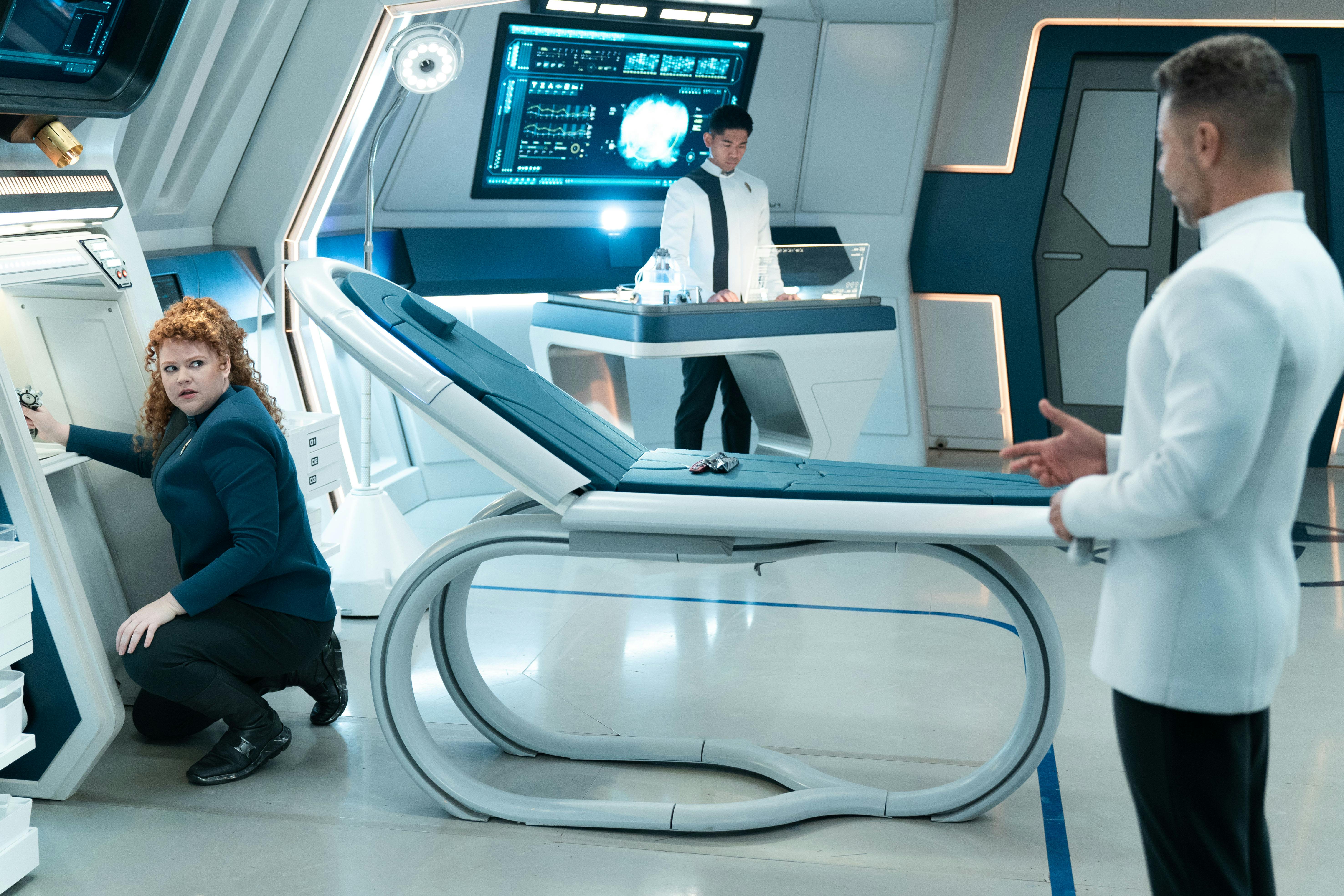
Back on Discovery , Tilly tracks an EPS conduit to a panel in Sickbay — after having followed it across three decks, including through the quarters of a new ensign who keeps a Cardassian vole as a pet. Sensing that Dr. Hugh Culber feels troubled, Tilly lets him know that she's always available to talk — at least until Stamets chimes in over the comm system to check on the status of her work. Culber maintains that he is fine and promises to find Tilly later, though his demeanor leaves her unconvinced.
In the Science Lab, Stamets notices that Ensign Adira Tal is undergoing some uncertainty of their own while working on their graviton pulse idea. The ensign rechecks their calculations for a third time, prompting the astromycologist to tell them that the time bug was not their fault. Rayner strolls in with confidence and requests an update on attempts to boost the comm signal. Stamets begins to explain, but the commander interrupts and states that he does not need to know how the cake is boiled. Adira is taken aback by the Kellerun culinary insight — Rayner assures them not to knock it until they try it — but Stamets presses forward with a proposal to hold the interdimensional aperture open. Unfortunately, there's a 43.7% chance that a graviton pulse would cause the aperture to close with the captain and Book still inside. Visibly frustrated, the first officer urges them to get the comm signal back.
Phasers drawn, Captain Burnham and Book enter the I.S.S. Enterprise 's bridge, which is adorned with Terran insignia and dimly illuminated by flickering lights and control panels. Intent on using the ship's sensors to track quantum signatures from the Prime Universe in order to locate Moll, L'ak, and the clue, Burnham pauses when she realizes that Book is standing at the science station — her brother's station, at least on the U.S.S. Enterprise . Though she had never met Spock's Mirror counterpart, she assumes he was just as ruthless as the Terrans.
Using a hack Book had previously applied on an Andorian transport ship, the captain successfully accesses the Enterprise 's sensors, and — after the former courier elicits words of praise from her — they detect that the intermix chamber has been ejected from the warp drive, all shuttles and escape pods are gone, the captain's log was erased, and the crew had apparently abandoned ship. Evacuation is a last resort in Terran culture, but the starship's damage was not terminal. The situation leaves them puzzled, but they turn their attention to the three Prime quantum signatures located in Sickbay — Moll, L'ak, and the clue.
En route to their quarry, Burnham and Book spy bedding, blankets, clothes, and other objects one wouldn't expect to find on a warship strewn about in the transporter room. Book gets a glimpse of the I.S.S. Enterprise 's dedication plaque, which itself bears an unorthodox phrase for Terrans, " Light of hope shines through even the darkest of nights. " The inscription describes the starship’s story, and Book relays that the new Terran High Chancellor had been killed while trying to make reforms. The crew mutinied, escaped, and attempted to shuttle refugees from the Mirror Universe into the Prime Universe, and a Kelpien slave-turned-rebel leader helped them. As she listens to the tale, Burnham picks up a locket and places a piece of her uniform inside of it. The mention of the Kelpien — likely Mirror Saru — catches her attention, and she supposes the crew fled when the ship got stuck within the aperture.
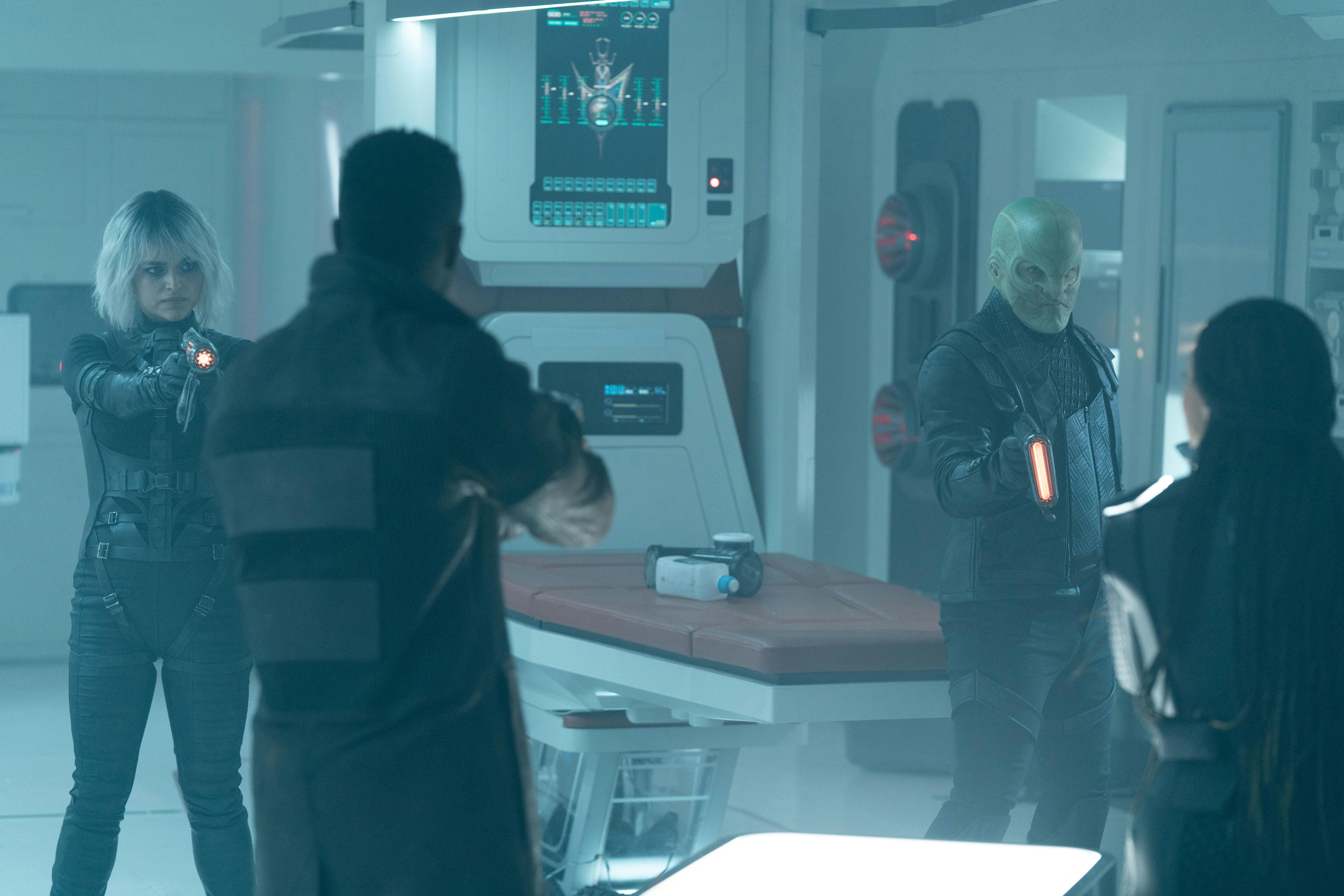
The pair continue on and move through the Terran ship's sparking corridors, only to be confronted by a batch of Moll and L'ak holo-doubles whose phasers are pointed toward Sickbay's entrance. Unable to determine which Moll and L'ak figures are real or target the room's holo emitter from their location, Book and Burnham rush their opponents and dodge a storm of phaser fire. They take out several holographic doubles before striking Sickbay's emitter, and the two couriers' true forms are revealed. Everyone heads for cover, but Burnham's diplomatic appeals don’t sway Moll or L'ak.
Book steps out from his concealed position. The captain follows with her phaser up, but Book tries to relate to Moll via their shared connection with her father. Moll grimaces with pain and anger as she states that Cleveland Booker IV was garbage, and L'ak holds up their bargaining chip — a device containing the next clue. Moll pitches a compromise; if she and L'ak are given a ride out of interdimensional space, they’ll let Starfleet replicate the clue. Burnham counters, bluntly replying that the couriers don’t have the clue. Referring to the decoy stanzas on Lyrek, the captain displays the locket she had procured and notes it has a Prime quantum signature.
The standoff remains steadfast, and Book draws Moll's ire when he guesses the couriers would not risk each other's lives over latinum. The exchange intensifies, and Moll contests that not even the Federation could lift an Erigah . Burnham recognizes the term, stunned to learn that the mysterious L'ak is actually Breen. An Erigah is a Breen blood bounty, and Moll and L'ak clearly hope to exchange whatever is at the end of the clue trail for their freedom. Book questions Moll about what they did to receive such a sentence, and the courier reflects…
…back to one of her regular visits to a busy Breen space station some years ago, where two helmeted Breen investigated one of her deliveries. Moll is unafraid when a third Breen approaches, introducing herself by quipping that she enjoys latinum and long walks on the beach. The Breen responds through his helmet's metallic speech processor, but rather than using the Breen sounds deemed unintelligible by most species, he speaks to Moll in her own language and accuses her of cutting her dilithium shipments with impurities. The human denies the accusation levied by "Green Eye," and the two square off in hand-to-hand combat.
Moll's lighthearted conversation persists even as they fight, and she points out that the Breen's belt insignia indicates he is royalty. Rumors have swirled that the Primarch's nephew — an independent thinker named L'ak — has been demoted to shuttlebay duty. Moll suggests that she can help L'ak get payback and admits she does cut the dilithium, leading the Breen to place her in handcuffs. Moll never relents, pitching that having a partner on the inside would make her operation go smoother. She senses L'ak is intrigued and faces him — she knows what it's like to be on the outside and alone — before slipping out of the cuffs. L'ak ponders why Moll would make a deal with someone she didn't know anything about, and Moll resolves to change that unfamiliarity.
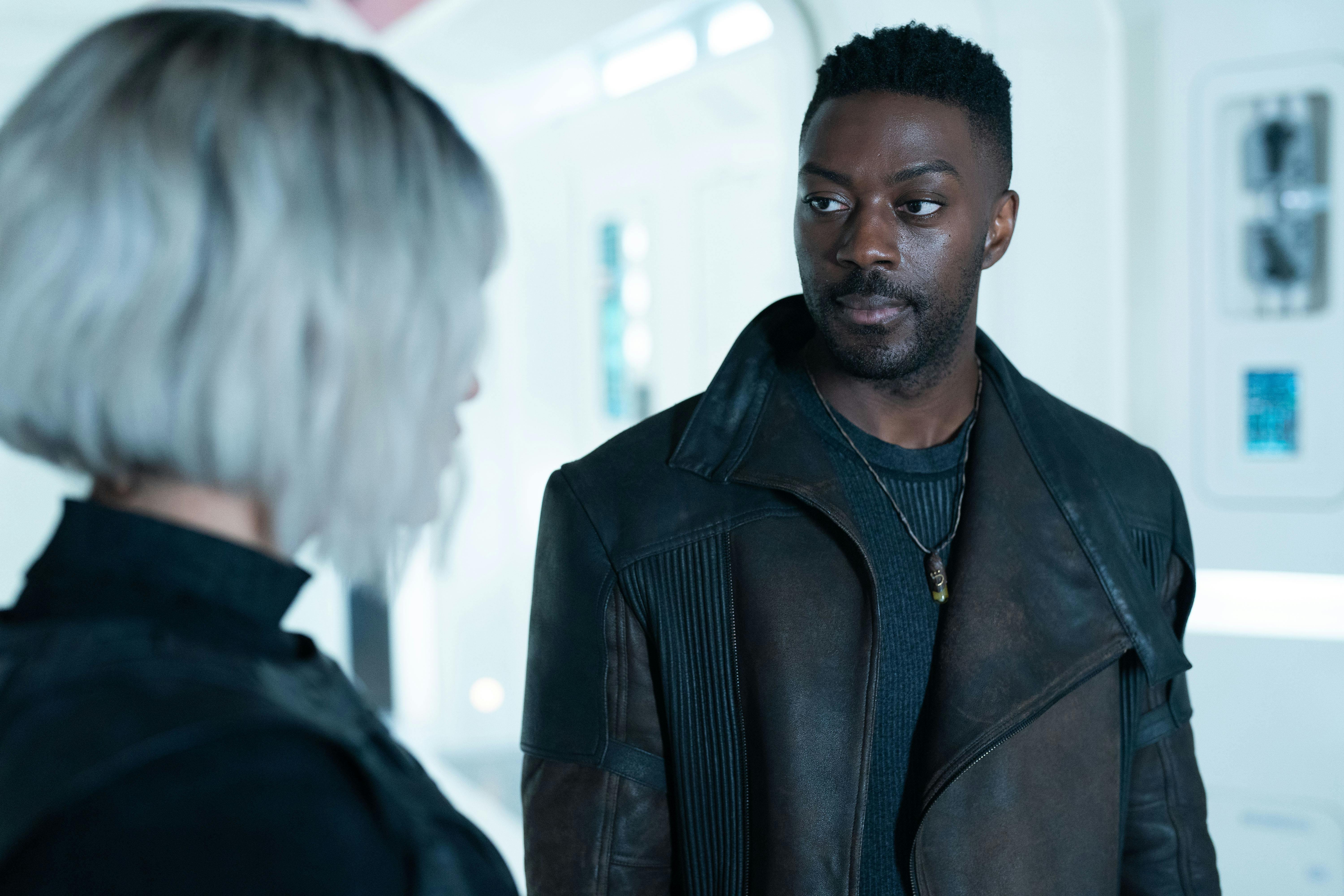
Back in the present, Moll refuses to disclose what she and L'ak did to receive their bounty. Captain Burnham cautions them to not let love lead them down the wrong road, but Moll and L'ak opt to open fire once again. An errant phaser blast strikes a control panel, raising a containment field that traps Burnham and L'ak in Sickbay while preventing Book and Moll from re-entering the room. Book intends to resolve the dilemma with the Bridge's security controls and requests Moll's assistance. She agrees to the temporary truce, but threatens to dust Book if he makes one wrong move. They depart, but L'ak and Burnham stay put and keep their weapons drawn.
In another memory from their time on the Breen space station, L'ak receives payment from Moll and declares that her dilithium is clean. She quietly asks if he’d like to inspect her ship again to make sure she didn’t smuggle any tribbles on board, but L'ak's needs to shine his boots in anticipation of his uncle's upcoming inspection. The Breen clarifies that this isn't a euphemism, as the Primarch really likes their boots to be shiny. Moll thinks his uncle sounds like an asshole and brings up the promise that "Green Eye" had made during her last visit. L'ak delays, but Moll is adamant that he show her what he looks like. Though she has seen his face, she wishes to view his other face. L'ak seems self-conscious, and Moll maintains that both faces are a part of him. L'ak concedes, holding his breath and retracting his helmet to reveal his translucent green features. Moll greets him with warmth…
...however, aboard the Enterprise , Moll's demeanor is icy. She walks defiantly through the ship's corridors and rejects Book's appeals about her father. Aware that Cleveland Booker IV left Moll and her mother, Book shares that his mentor made the difficult choice to stay away from them in order to keep them safe. Moll emits a strained laugh, believing that Book must have his own "daddy issues" to have believed her father's story. Even though her father had promised to get his family off of Callor V and take them to a safe-haven colony in the Gamma Quadrant, he eventually just stopped coming home. Her mother was forced to get a job in the rubindium mines, ultimately falling victim to the harsh conditions when Moll was 14. Left alone, Moll tearfully emphasizes that L'ak is now the only person who matters to her.
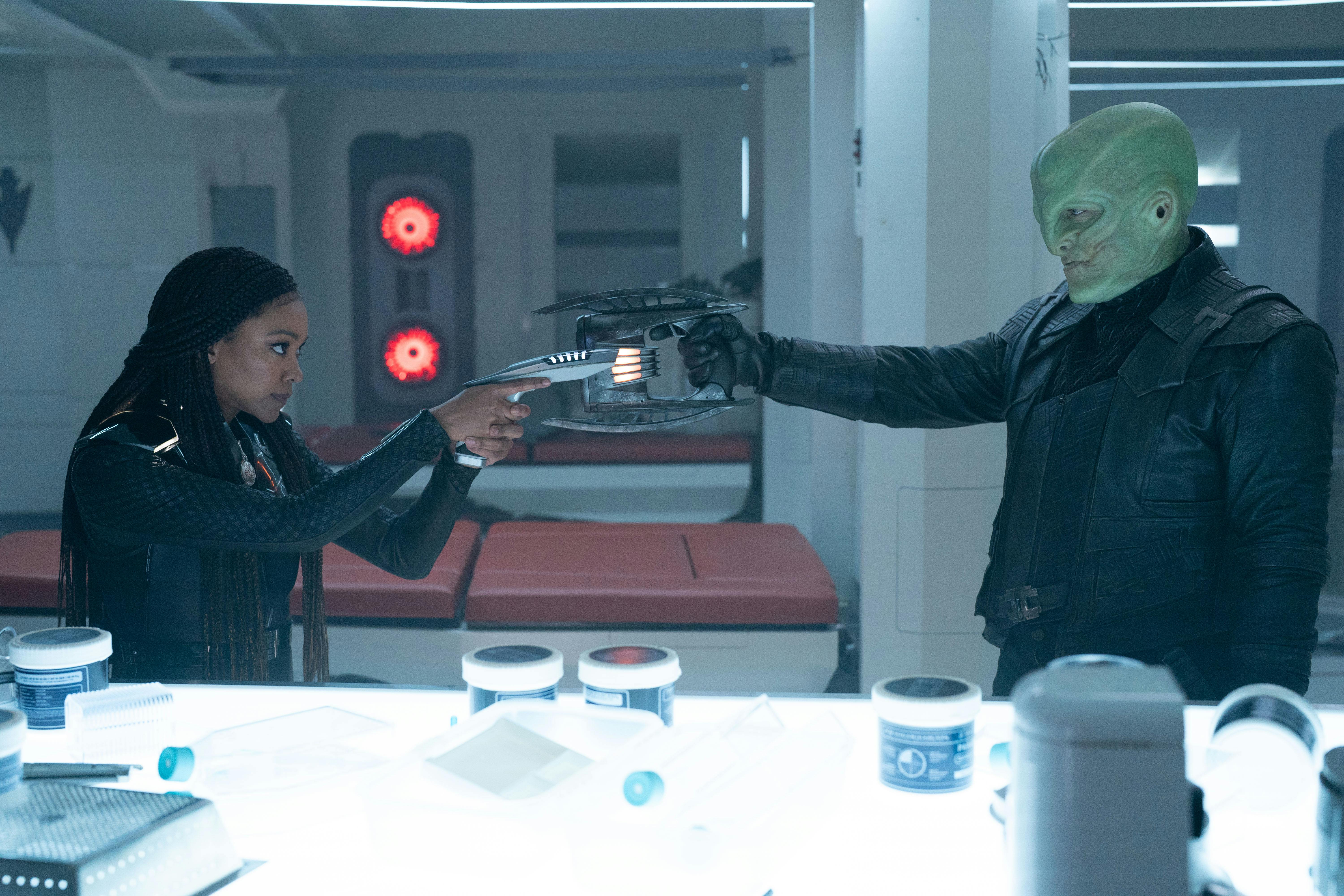
Down in Sickbay, L'ak and Burnham retain their suspicious stares. Seated, yet still aiming their phasers at each other, they discuss the "power beyond all comprehension" that the Romulan scientist's diary and the subsequent clues would guide them toward. The captain warns L'ak what could happen if they Breen acquired that technology, and her observation that the Federation is all about second chances seems to resonate with him. Though Burnham promises she'd advocate for Moll and L'ak to serve their time together, L'ak is emphatic — he'd rather die than be separated from Moll.
On the Enterprise 's Bridge, the security system's firewall prevents Moll and Book from accessing the containment field. Moll pounds the console in frustration, but Book takes the opportunity to compare Moll and L'ak’s bond with the one he had shared with Burnham. With the exception of Grudge, who bites him when he doesn't feed her, Michael was the first friend Book made after Cleveland Booker IV died. He apologizes for what Moll endured because of her father and explains his troubled relationship with his own father, though Moll's thoughts continue to drift to L'ak…
…and to their time on the Breen space station. Concealed by a force field among the cargo containers, Moll and L'ak kiss. The human pauses, hesitant to mention that she received a new contract in Emerald Chain territory. L'ak calls Osyraa a butcher, but Moll responds that the Breen Imperium's faction wars don't make this region much safer. Her pursuit of higher paydays is a byproduct of her desire to discover the peace and freedom of the Gamma Quadrant paradise that her father had described. L'ak confesses that he only stays in Breen space because he has nowhere else to go, prompting Moll to propose he leave with her. The sound of footsteps interrupts the tender moment, and the Breen Primarch marches in with two Breen soldiers by his side. He disables the privacy field, his visored face locking eyes with the human.
With the memory of that confrontation fresh in her mind, Moll comes to attention on the Enterprise 's Bridge and knocks open a panel underneath the con. She creates a power surge to burn through the security system and short out the containment field, but her actions cause violent explosions to rock the ship. The Sickbay force field drops, though Burnham’s attempt to block L'ak's exit results in another round of fisticuffs that shatters glass and takes its toll. Book reports that impulse engines are overloaded and nav systems are fried — they have no control over the ship. Discovery 's shuttle becomes dislodged, tumbling away from the Terran ship and leaving the Enterprise eight minutes from impacting the aperture.
Book tries to develop a plan, but Moll aims her phaser at him. Nevertheless, Book is still determined to not let anything happen to Burnham or Moll. As a Kwejian, he lost his planet — everything that he cared about is gone. Though Cleveland was a "shit dad" to Moll, he was a great mentor to Book. In a heartbreaking tone, Book informs Moll that she is the only family he has left. He carefully picks up his phaser but chooses to hand it to her. She reacts with suspicion and directs both weapons toward him. Moll wrestles with indecision but opts not to kill him, a choice which elicits a sigh of relief from Book.

Burnham and L'ak's physical confrontation rages in Sickbay, but the Breen's reliance on a bladed weapon proves to be a tactical error. The Starfleet officer subdues him and retrieves the clue — the locket was a decoy. However, L'ak was inadvertently stabbed with his own blade during the attack. Moll runs in at this unfortunate moment, filled with concern for her partner and rejecting Burnham's plea to get L'ak to Discovery for treatment. Now a mere five minutes from colliding with the aperture, Book and Burnham speed off to the Bridge, leaving Moll to assist L'ak in Sickbay…
…and remember the moment when the Breen Primarch caught them together. As a guard holds L'ak, a second Breen strikes Moll. The Primarch prevents his nephew from intervening, then airs his grievance — L'ak carries the genetic code of the Yod-Thot, they who rule . While the Primarch campaigns for the throne of the Imperium, L'ak has been consorting with "lesser beings." His uncle describes L'ak's use of his more humanoid face as an insult to his heritage. The Primarch retracts his own helmet, gesturing to his translucent visage and proclaiming, " This is Breen." L'ak argues that their ability to change is a sign that both faces are a part of them, but his uncle claims they have evolved past a need for that form — holding it makes L'ak unfocused, inflexible, and weak.
The Primarch reseals his helmet and hands L'ak a weapon. His nephew must kill Moll to gain redemption. Resigned to her death, Moll tells "Green Eye" that their relationship was fun while it lasted, but L'ak elects to shoot the Breen guards instead of her. His uncle allows L'ak to place the phaser at his chest. Swayed by the fact that the Primarch raised him, L'ak only wounds his uncle. Alarms blare through the cargo area, and L'ak urges Moll to flee so that he will know she's safe. The blood bounty that L'ak just earned does not dissuade Moll from wanting him to join her. Holding onto his face, she says they can be happy together. L'ak voices his love for Moll…
…which snaps her back to the present, where L'ak reiterates his love for Moll in the Enterprise 's chaotic Sickbay. However, she is unwilling to give up and vows to get them out of this predicament. Meanwhile, Burnham and Book burst onto the Bridge and intend to activate a tractor beam. Book brightens the Terran light panels — "can’t save the day if we can’t see" — and winks at the captain as he takes the helm.
On Discovery 's Bridge, Commander Rayner asks Christopher for an update on comms. Naya interjects, reporting that something is happening at the aperture. A tractor beam can be seen emanating from within the wormhole, and it is oscillating with a repeating pattern: 3-4-1-4. Rayner grins in understanding and calls Stamets, Adira, and Tilly to the Bridge. The first officer doesn’t just need them to hold the aperture open, he also wants them to make it bigger — large enough for a starship. Discovery isn't going in, but their captain is coming out.
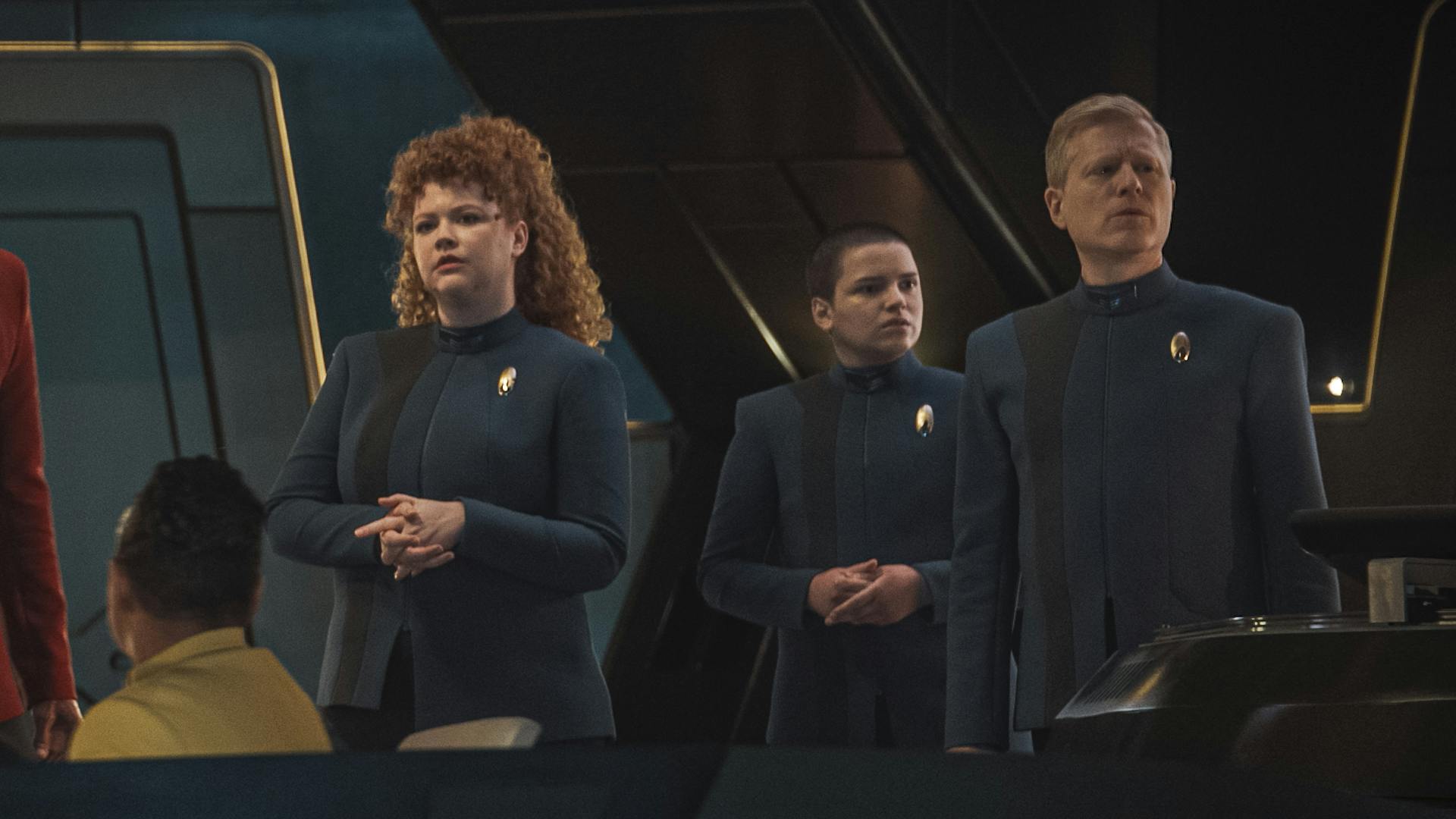
Stamets and the senior staff are perplexed by Rayner's announcement, and the Kellerun's reference to the Ballad of Krul doesn't give them any additional insight. Returning to the task at hand, Tilly affirms that such a procedure would require more energy than the entire ship can safely produce. Rayner pushes them for ideas, promising a cask of Kellerun citrus mash for whoever lands this solution. The Bridge is abuzz with chatter — inverting the deflector array would take too long, discharging the spore reserve would leave them unable to make an emergency jump, and pulling power from gravitational systems would cause everyone to float around… but replacing the photon torpedo payloads with antimatter would add fuel to the reactions already present in the aperture! Adira confirms that hitting it precisely with a sequential hexagonal pattern should keep it open for approximately sixty seconds. Rayner questions why it must be hexagonal, but Stamets points to him in a mischievous manner and notes, "It doesn’t matter. It’ll work." Satisfied, the commander awards the citrus mash to the entire Bridge crew and trusts that they'll make their only chance to succeed count.
As Captain Burnham sits in the I.S.S. Enterprise 's center seat, the ship's computer pronounces that only 60 seconds remain until impact with the aperture. Driven by the perilous countdown, she confesses to Book that he was one of the surprises she encountered while ensnared in the time bug's grip. She reflects on how nice it felt and how happy they seemed. Book offers an appreciative nod, but the pull of the aperture shakes the Enterprise .
On Discovery , Rayner orders a volley of torpedoes to be launched at the wormhole, and their detonations cause the opening to expand and generate even more light. The Enterprise 's tractor beam rattles the ship as it makes contact with Discovery . Book awaits Burnham's order to act and asks if he should "hit it." Captain Christopher Pike's signature phrase draws a quizzical and bemused look from Burnham, who replies, "Feels weird. Let’s just fly." The Terran ship's saucer section begins to emerge from the aperture, and its secondary hull clears it just before it collapses and releases a radiant surge of energy.
A relief-filled Captain Burnham communicates her thanks to Rayner over the comm channel, but she and Book then notify Discovery about a Terran warp pod being fired by the Enterprise . Scans detect two lifesigns and sickbay equipment aboard — Moll and L'ak. The pod launches and jumps to warp before it can be captured, though Rayner hopes to follow their warp signature and put out an alert throughout the fleet.
As the I.S.S. Enterprise and U.S.S. Discovery station themselves opposite one another in deep space, Rayner accompanies Burnham on a stroll through Discovery 's halls and compliments her on her "3-4-1-4" signal. The captain's message had referred to Section 4, Verse 7 of the Ballad of Krul , in which Krul calls to his war brothers for rescue with a repeating drumbeat of three taps, followed by four, one, and four. Although impressed, Rayner has doubts about how the mission played out. Burnham encourages him to take the win and relays that she is ordering Commanders Owosekun and Detmer to head a team and fly the Enterprise back to Federation HQ storage.
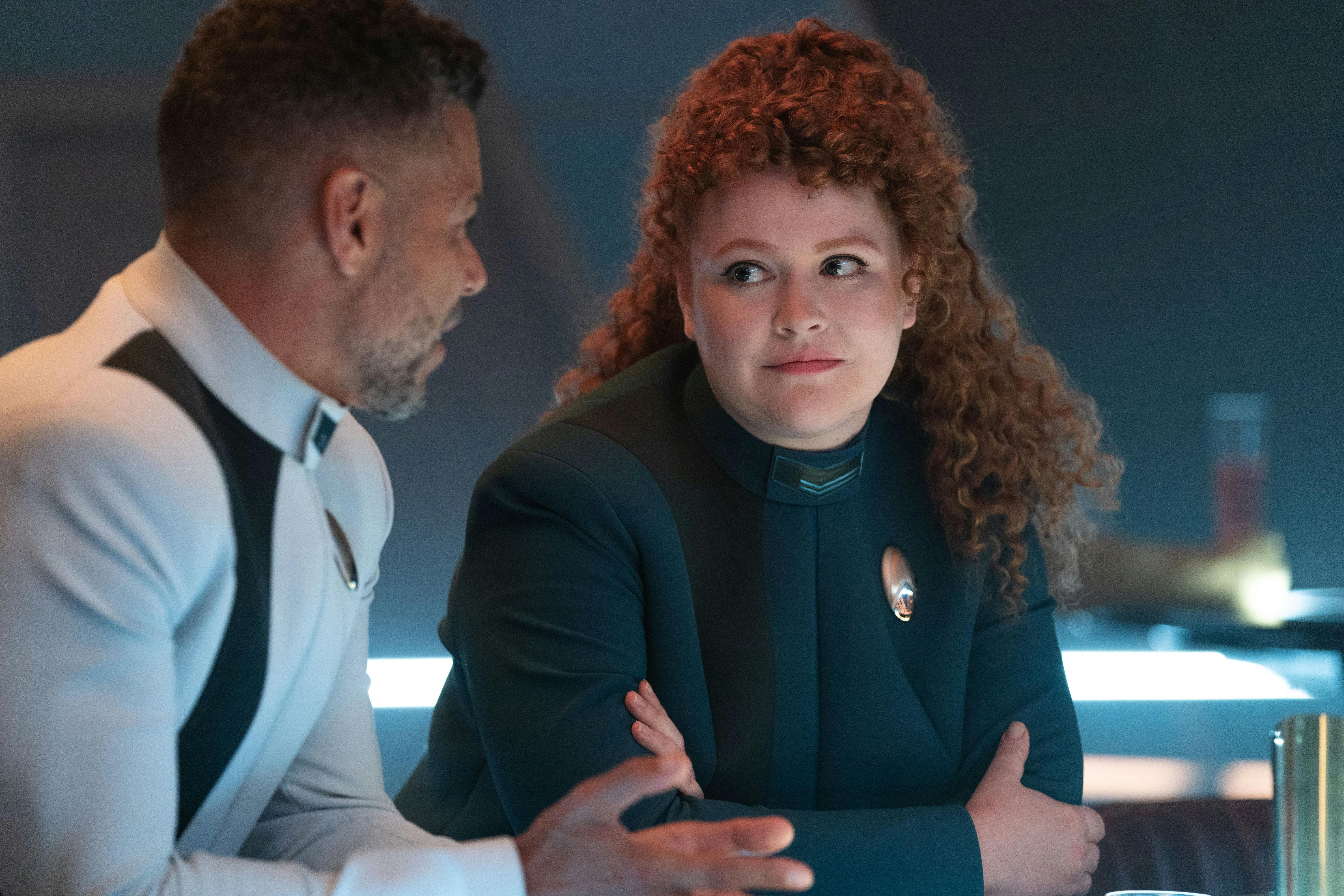
Discovery 's crew takes some much-needed downtime in Red's, where Culber follows through on his promise to confide in Tilly. The doctor leans beside her at the bar, and Tilly remarks that the day has left her feeling as if she has been through a gormagander's digestive tract. Highlighting the unique experiences he's had — dying, being resurrected, and staying present in his own body while Jinaal Bix inhabited it during the zhian'tara — Culber can only classify these events as "weird." Coupled with their current quest to find the technology that created life, Culber has found these questions to be both impossible to grasp and exhilarating. Since Stamets hates the unknown, Culber isn't sure how to talk to his partner about these emotions. Tilly advises him that the intellectual and the spiritual are not that far apart in the sense that they each bring understanding and can take you to new places. Initially taken aback by Tilly's use of the word spiritual, the doctor lets his friend's words sink in.
Captain Burnham welcomes Book into her Ready Room as she finishes reading a file on the Progenitors. There's no news about Moll and L'ak's whereabouts, but every ship in the sector is on high alert. She extracts a vial of liquid from the device containing the clue and shares that Stamets is preparing to do a full chemical analysis on it. Burnham secures the third object alongside the other two clues, which Book observes always seem to be presented hand-in-hand with a lesson. The ordeal with the itronok on Trill demonstrated that they valued lifeforms different from their own and the necropolis planet evoked the importance of cultural context, so why did a scientist leave the third clue on a Terran warship?
The query draws a smile from Burnham, who discloses that the scientist had been a Terran named Dr. Cho — the junior science officer aboard the I.S.S. Enterprise . The captain had Zora search for the names from the vessel's manifest, and most of them had turned up in various Federation databases. The crew did make it to the Prime Universe and started new lives, and Cho herself became a branch admiral in Starfleet. The Terrans had hope, found freedom, and overcame the odds. Burnham supposes that those qualities were the reasons Cho returned to the aperture and concealed the clue on the Enterprise . Perhaps the lesson is that they can shape their future in the same way the Terran refugees had.
Book catches sight of the Enterprise getting underway outside of the Ready Room's viewport, prompting the captain to turn and gaze at the vessel. She brings up the time bug secret she had shared with Book when death appeared imminent, but he grins and acknowledges that they had been happy. Stamets' voice rings out over the comm system to let the captain know he is ready for the vial. Burnham grabs the container and makes her way to the door, but Book wonders what happens when they finally put these clues together. Captain Burnham concedes that she doesn't know, but she can't wait to find out.

* " Mirror, Mirror " — The I.S.S. Enterprise was last seen in this Original Series classic when a transporter malfunction sends the U.S.S. Enterprise crew into a mirror universe.

- Written by Johanna Lee & Carlos Cisco
- Directed by Jen McGowan

"Mirrors" features a dedication:
In loving memory of our friend, Allan "Red" Marceta
Get Updates By Email
Jay Stobie (he/him) is a freelance writer, author, and consultant who has contributed articles to StarTrek.com, Star Trek Explorer, and Star Trek Magazine, as well as to Star Wars Insider and StarWars.com. Learn more about Jay by visiting JayStobie.com or finding him on Twitter, Instagram, and other social media platforms at @StobiesGalaxy.
Star Trek: Discovery Seasons 1-4 are streaming exclusively on Paramount+ in the U.S., the UK, Canada, Switzerland, South Korea, Latin America, Germany, France, Italy, Australia and Austria. Seasons 2 and 3 also are available on the Pluto TV “Star Trek” channel in Switzerland, Germany and Austria. The series streams on Super Drama in Japan, TVNZ in New Zealand, and SkyShowtime in Spain, Portugal, Poland, The Nordics, The Netherlands, and Central and Eastern Europe and also airs on Cosmote TV in Greece. The series is distributed by Paramount Global Content Distribution.


Hi, what are you looking for?
TREKNEWS.NET | Your daily dose of Star Trek news and opinion
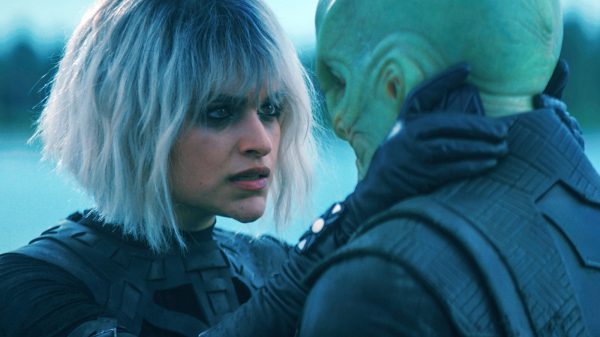
New photos from Star Trek: Discovery Season 5 Episode 4 “Face the Strange”
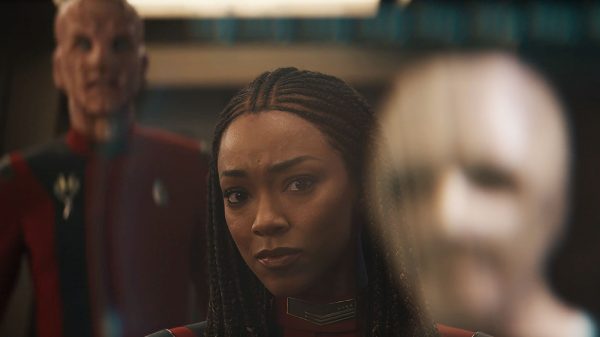
Star Trek: Discovery “Under the Twin Moons” Review: Clues among the moons
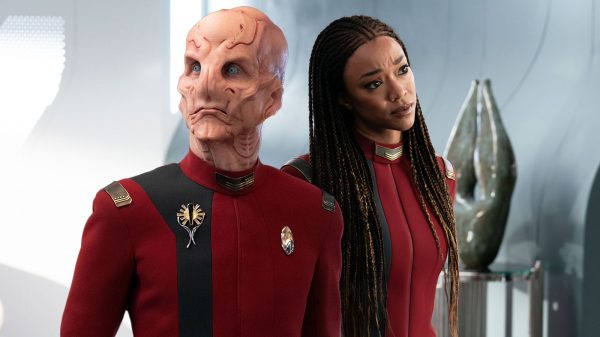
New photos from the first two episodes of Star Trek: Discovery season 5
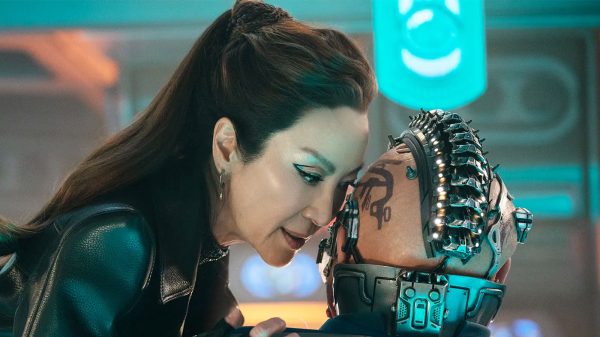
First Photo from Star Trek: Section 31 revealed, legacy character confirmed
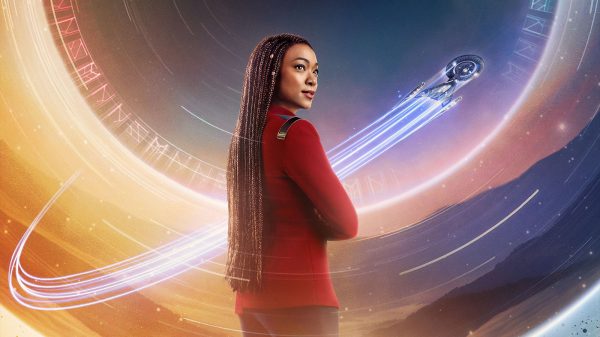
New Star Trek: Discovery posters revealed ahead of final season premiere
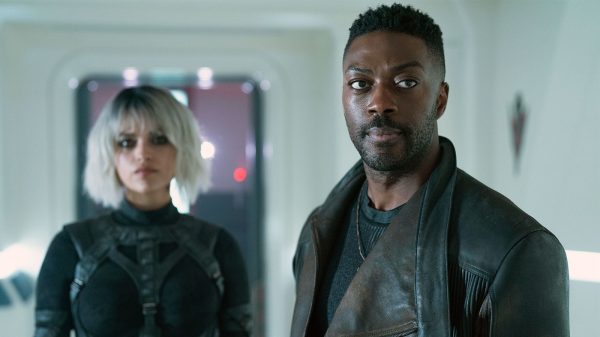
Star Trek: Discovery “Mirrors” Review: Navigating Reflections
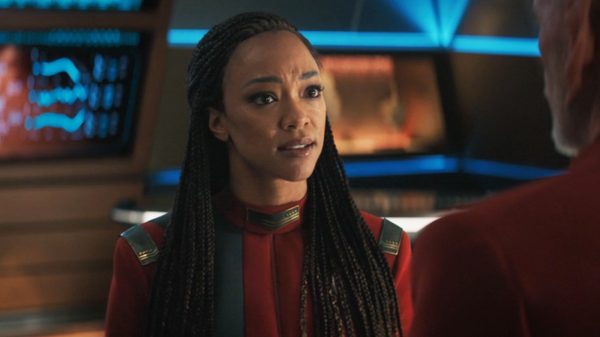
Star Trek: Discovery “Face the Strange” Review: Embarking on a Temporal Odyssey
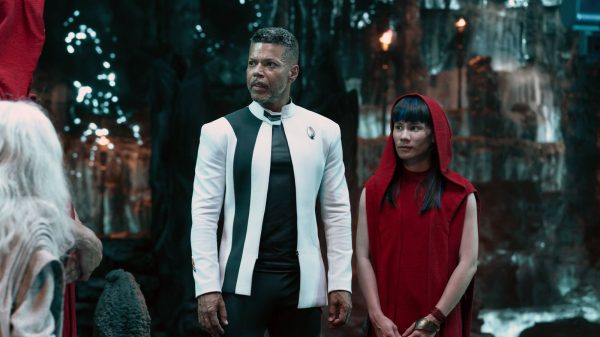
Star Trek: Discovery “Jinaal” Review: One step forward, two steps back

Star Trek: Picard — Firewall Review: The Renaissance of Seven of Nine

From TNG to Enterprise, Star Trek VFX Maestro, Adam Howard, shares stories from his career
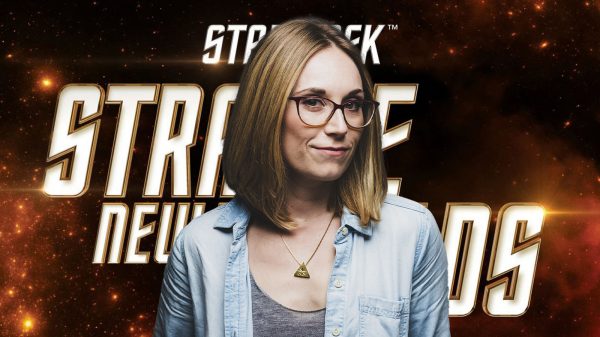
Strange New Worlds director Jordan Canning talks “Charades,” the versatility of the series & Star Trek fandom
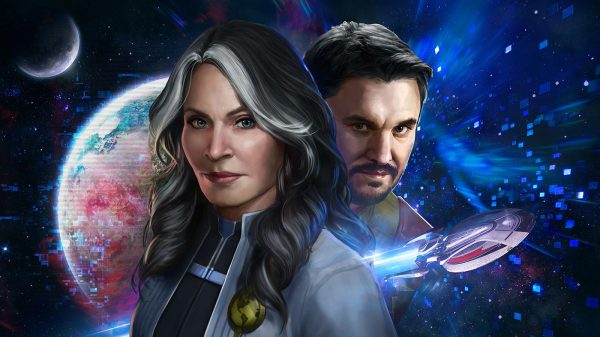
‘Star Trek Online’ lead designer talks the game’s longevity, honoring the franchise, and seeing his work come to life in ‘Picard’

Gates McFadden talks Star Trek: Picard, reuniting with her TNG castmates, InvestiGates, and the Human Condition

Connor Trinneer and Dominic Keating talk ‘Enterprise’, their relationship with Star Trek in 2023 and their first live ‘Shuttlepod Show’

57-Year Mission set to beam 160+ Star Trek guests down to Las Vegas
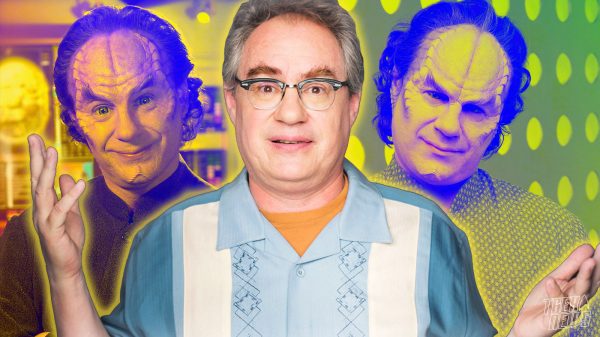
John Billingsley discusses what he’d want in a fifth season of Enterprise, playing Phlox and this weekend’s Trek Talks 2 event
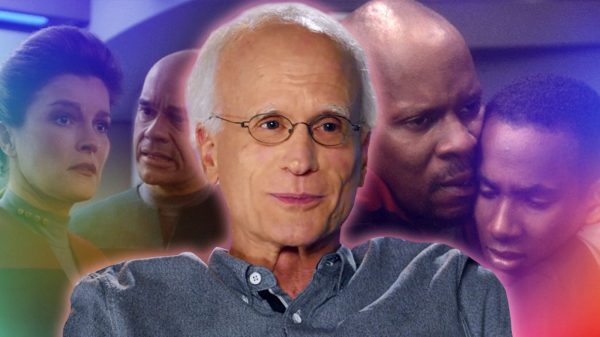
Veteran Star Trek director David Livingston looks back on his legendary career ahead of Trek Talks 2 event
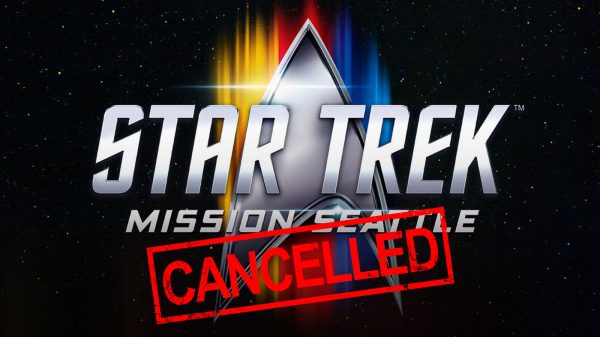
ReedPop’s Star Trek: Mission Seattle convention has been cancelled

56-Year Mission Preview: More than 130 Star Trek guests set to beam down to Las Vegas convention
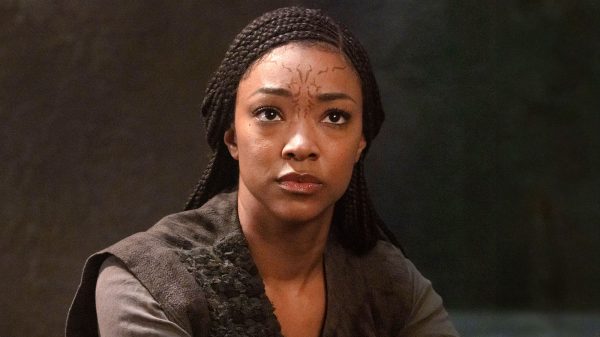
New photos + video preview from Star Trek: Discovery Season 5 Episode 6 “Whistlespeak”
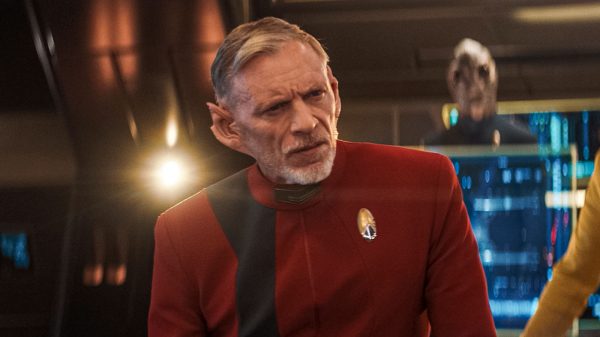
New photos + video preview from Star Trek: Discovery Season 5 Episode 5 “Mirrors”
![star trek transporter series 2023: A banner year for Star Trek — here’s why [Op-Ed]](https://treknews.net/wp-content/uploads/2024/01/star-trek-2023-year-in-review-600x337.jpg)
2023: A banner year for Star Trek — here’s why [Op-Ed]
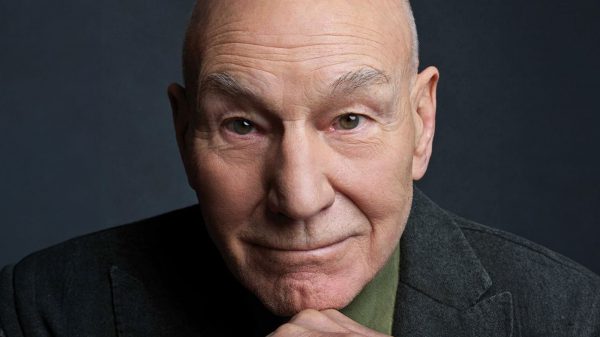
‘Making It So’ Review: Patrick Stewart’s journey from stage to starship
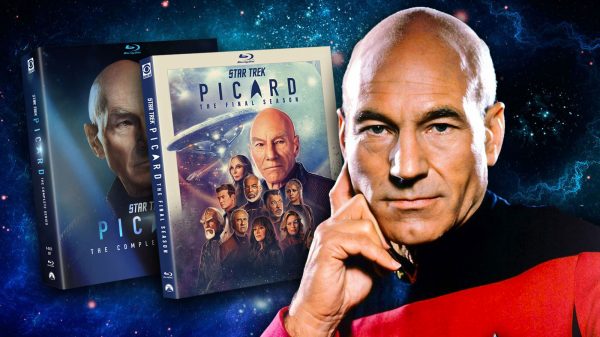
54-Disc Picard Legacy Collection, Star Trek: Picard Season 3, Complete Series Blu-ray box sets announced
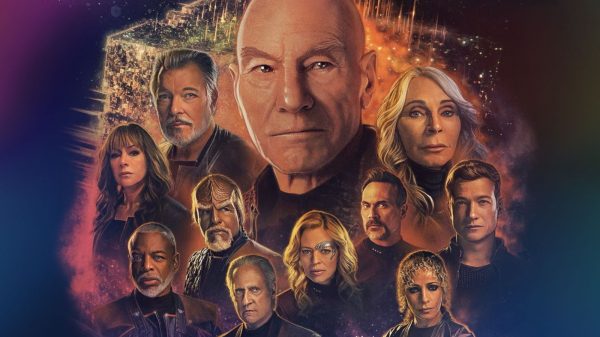
Star Trek: Picard series finale “The Last Generation” Review: A perfect sendoff to an unforgettable crew
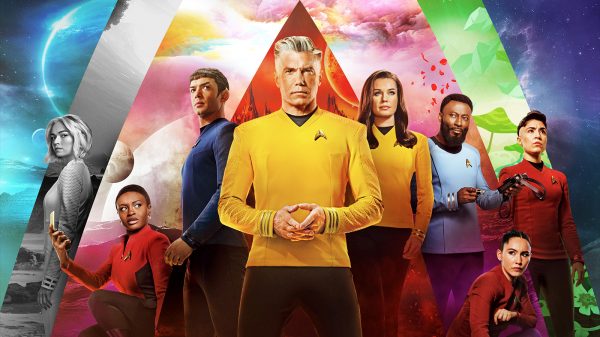
Star Trek: Strange New Worlds arrives on Blu-ray, 4K UHD and DVD this December
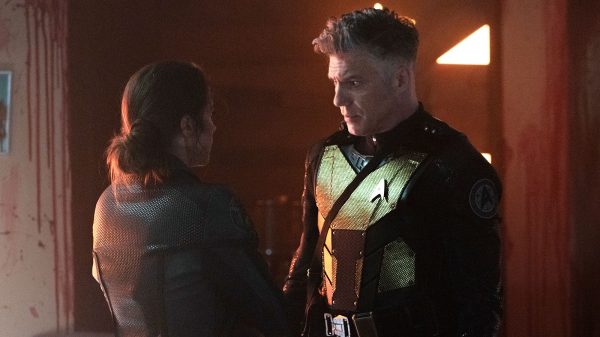
Star Trek: Strange New Worlds “Hegemony” Review: An underwhelming end to the series’ sophomore season
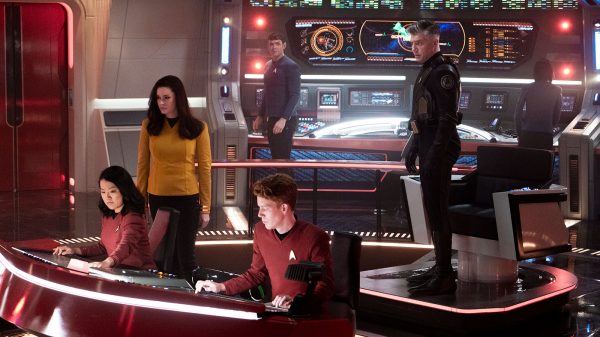
Star Trek: Strange New Worlds season 2 finale “Hegemony” preview + new photos
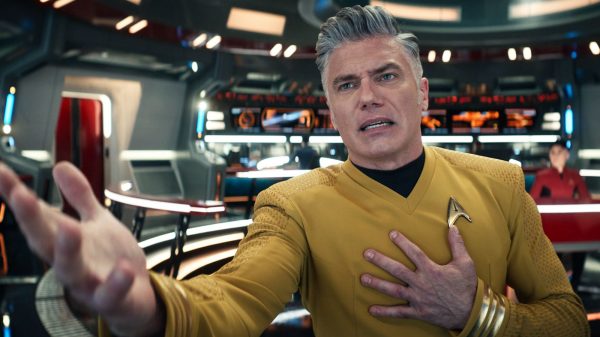
Star Trek: Strange New Worlds 209 “Subspace Rhapsody” Review: All systems stable… but why are we singing?
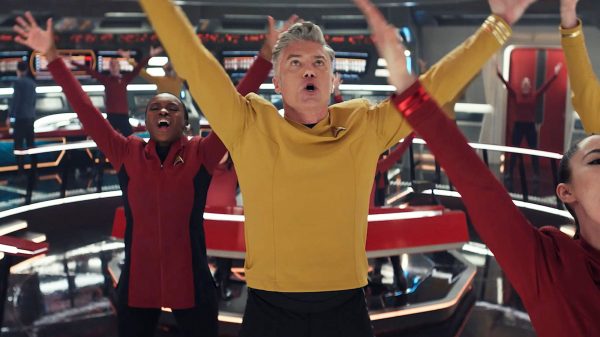
Star Trek: Strange New Worlds “Subspace Rhapsody” preview + new photos
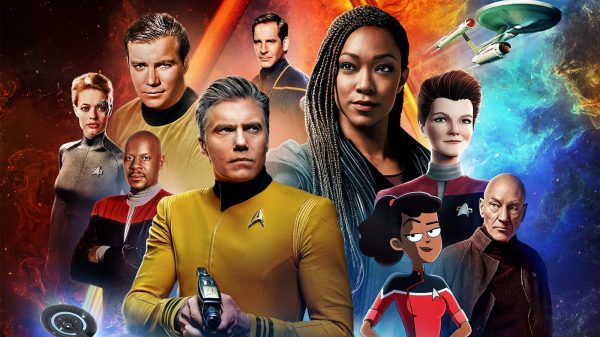
Star Trek Day 2021 to Celebrate 55th Anniversary of the Franchise on September 8 with Live Panels and Reveals
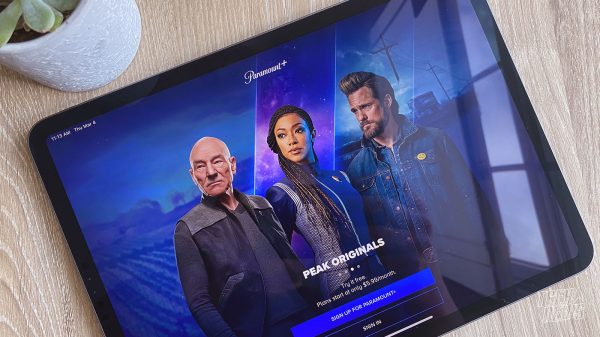
Paramount+ Launches with 1-Month Free Trial, Streaming Every Star Trek Episode
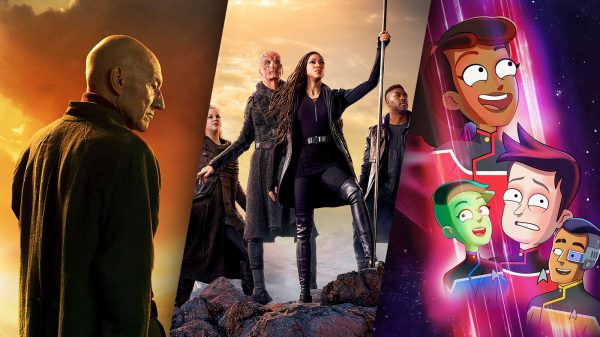
Paramount+ to Officially Launch March 4, Taking Place of CBS All Access
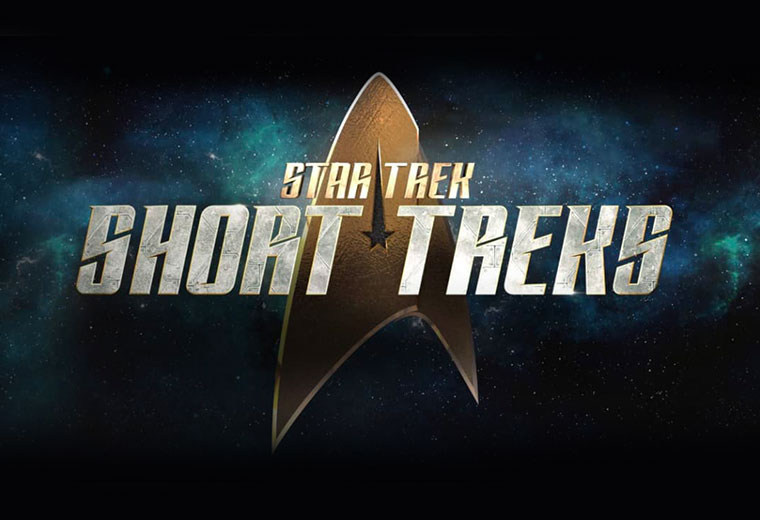
STAR TREK: SHORT TREKS Season 2 Now Streaming For Free (in the U.S.)
![star trek transporter series [REVIEW] STAR TREK: SHORT TREKS "Children of Mars": All Hands... Battlestations](https://treknews.net/wp-content/uploads/2020/01/review-star-trek-short-treks-children-of-mars.jpg)
[REVIEW] STAR TREK: SHORT TREKS “Children of Mars”: All Hands… Battle Stations
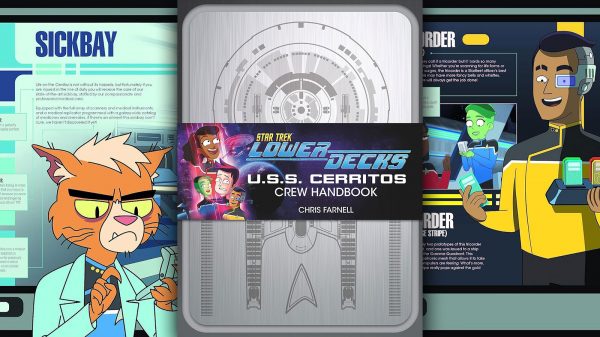
‘U.S.S. Cerritos Crew Handbook’ Review: A must-read Star Trek: Lower Decks fans
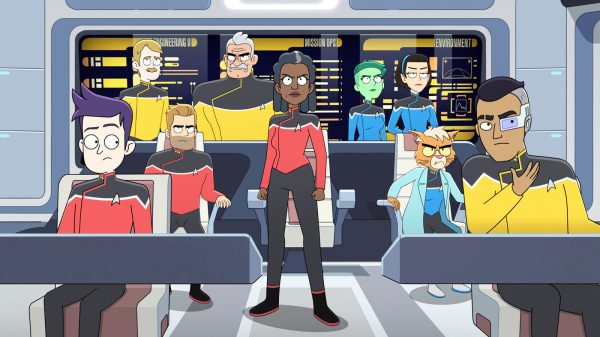
New photos from this week’s Star Trek: Lower Decks season 4 finale
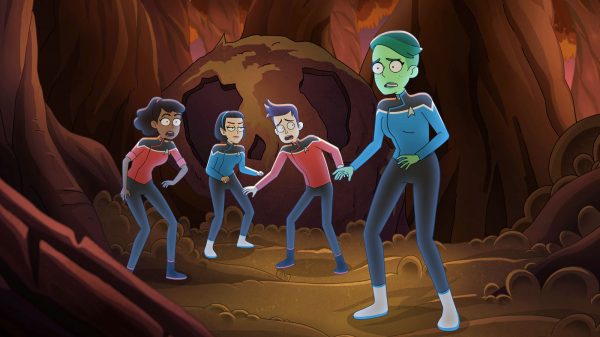
Star Trek: Lower Decks “The Inner Fight” Review: Lost stars and hidden battles
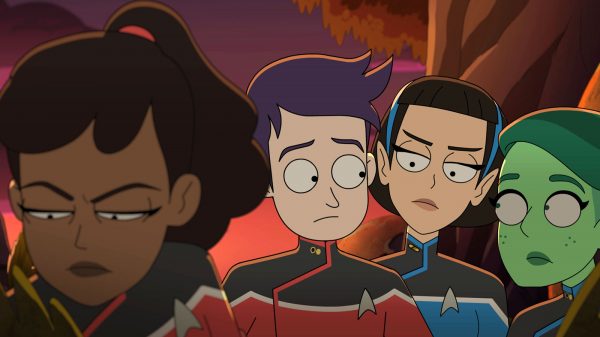
New photos from this week’s episode of Star Trek: Lower Decks
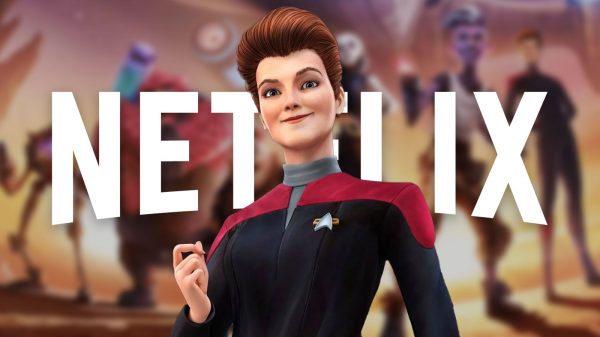
Star Trek: Prodigy begins streaming December 25th on Netflix
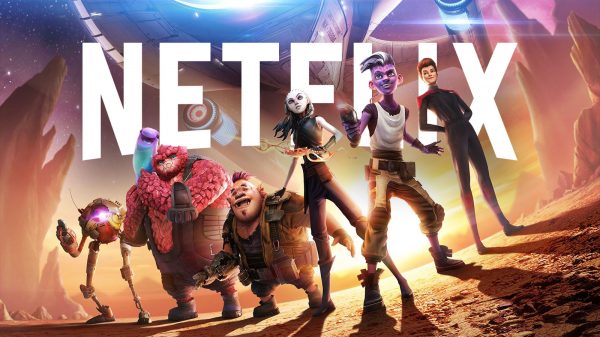
Star Trek: Prodigy lands at Netflix, season 2 coming in 2024
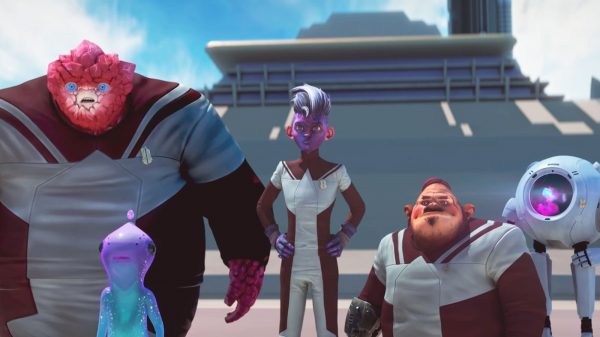
Star Trek: Prodigy Season 2 sneak peek reveals the surprise return of a Voyager castmember
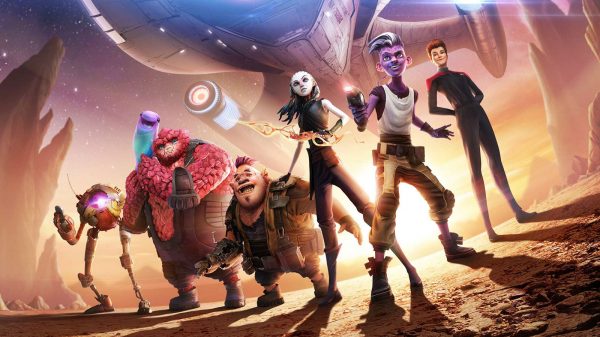
Star Trek: Prodigy canceled, first season to be removed from Paramount+
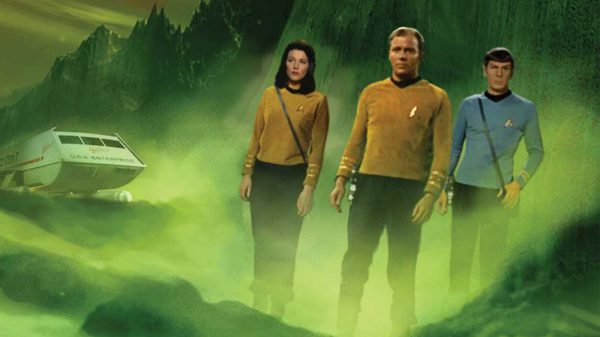
Revisiting “Star Trek: Legacies – Captain to Captain” Retro Review
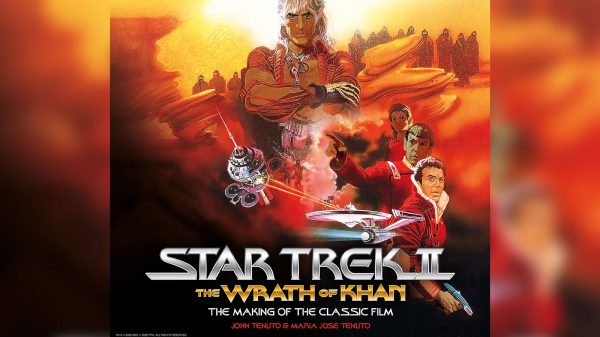
The Wrath of Khan – The Making of the Classic Film Review: A gem for your Star Trek reference collection
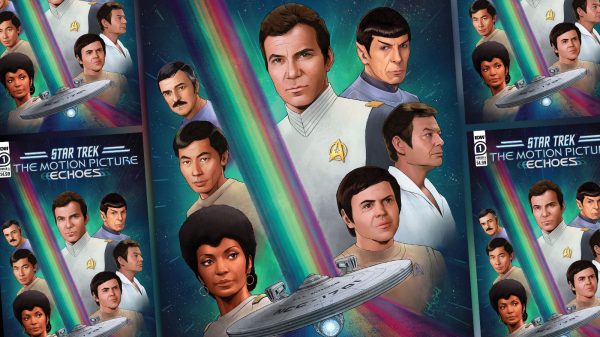
The events of Star Trek: The Motion Picture to continue in new IDW miniseries “Echoes”
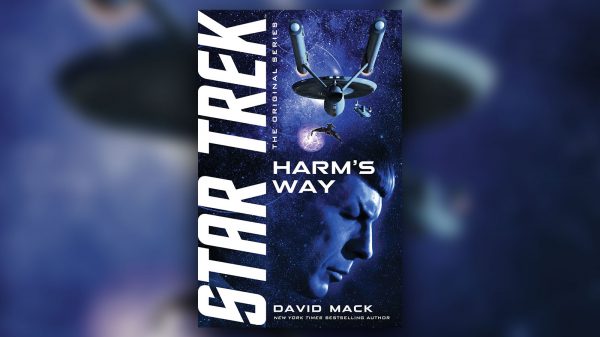
Star Trek: The Original Series “Harm’s Way” Book Review
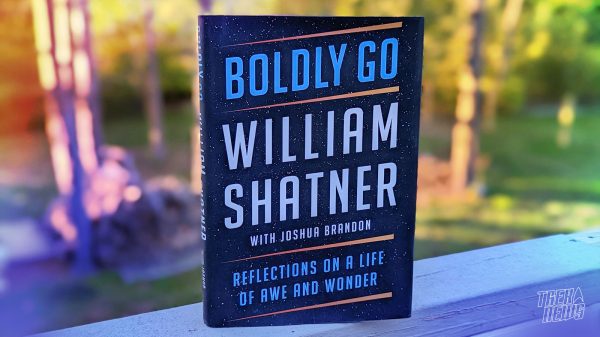
William Shatner’s New Book ‘Boldly Go: Reflections on a Life of Awe and Wonder’ Review: More of a good thing
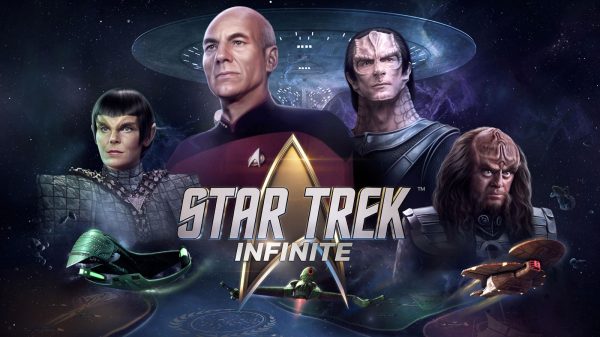
Star Trek: Infinite release date + details on Lower Decks-themed pre-order bonuses
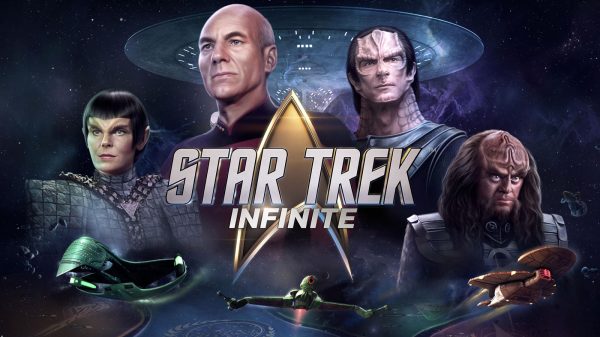
‘Star Trek: Infinite’ strategy game revealed, set to be released this fall
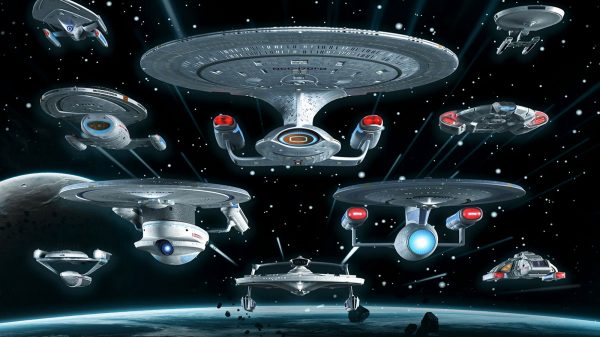
Hero Collector Revisits The Classics in New Starfleet Starships Essentials Collection
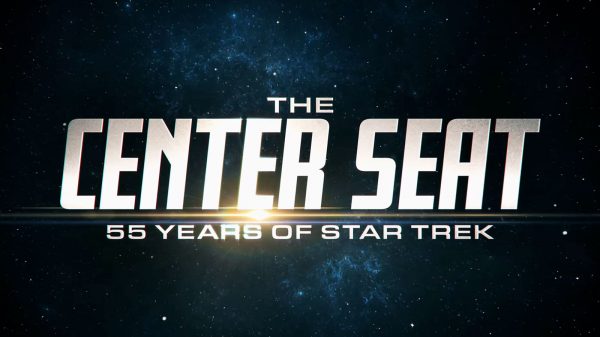
New Star Trek Docuseries ‘The Center Seat’ Announced, Coming This Fall
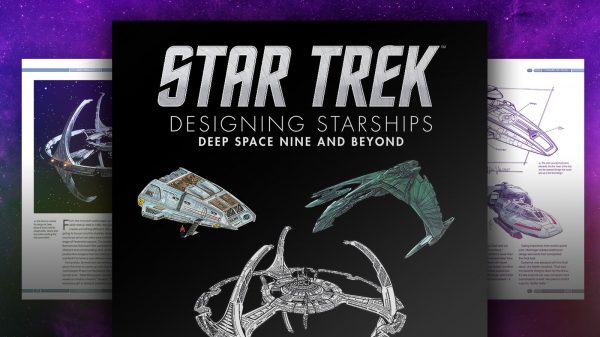
Star Trek Designing Starships: Deep Space Nine & Beyond Review: a Deep Dive Into Shuttlecraft of the Gamma Quadrant
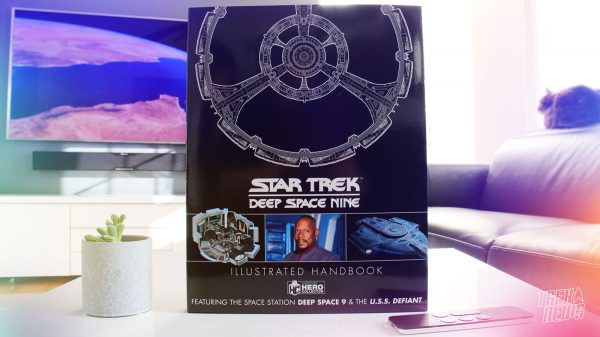
Star Trek: Deep Space Nine Illustrated Handbook Review: Terok Nor Deconstructed in Amazing Detail
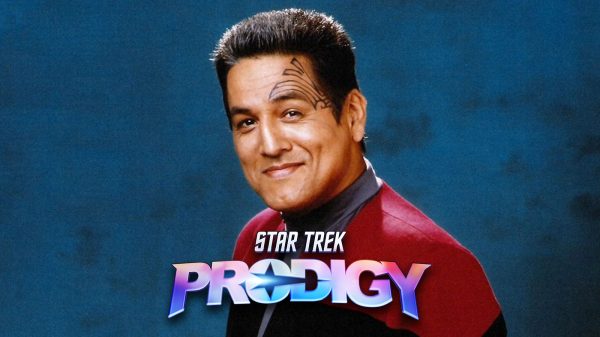
Robert Beltran Is Officially Returning to Star Trek as Chakotay on ‘Prodigy’ + More Casting News
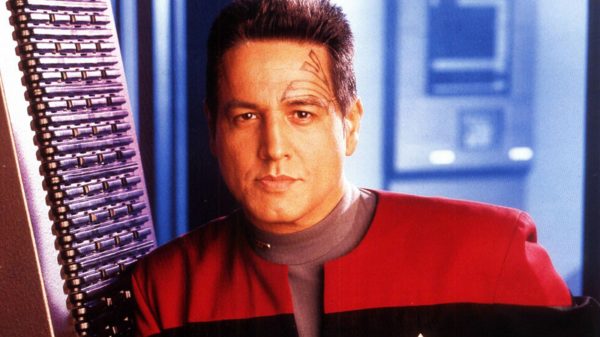
Robert Beltran Says He’s Returning to Star Trek in ‘Prodigy’

John Billingsley Talks Life Since Star Trek: Enterprise, Going to Space and Turning Down Lunch with Shatner and Nimoy
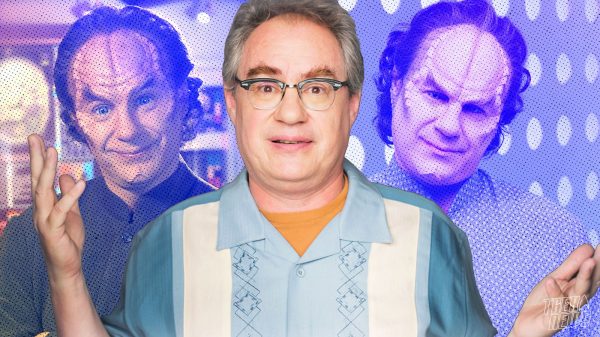
Star Trek: Enterprise Star John Billingsley Talks Charity Work, Upcoming TREK*Talks Event
Review: Star Trek: Discovery Season 5 Episode 5 “Mirrors”
Star Trek: Discovery picks up immediately where “ Face the Strange ” left off, as our protagonists track their quarry’s ship to a hidden, interdimensional pocket of space that holds a few surprises for them and the audience.
Thanks to some sciencing from Paul Stamets ( Anthony Rapp ) and Sylvia Tilly ( Mary Wiseman ), Captain Michael Burnham ( Sonequa Martin-Green ) has a way to find where Moll ( Eve Harlow ) and L’ak ( Elias Toufexis ) are. Apparently, there’s a wormhole hiding in plain sight near where Discovery lost track of the criminals’ warp signature.
This wormhole is too small for a Crossfield- class ship to fit through, so Burnham and Cleveland Booker ( David Ajala ) – the latter of whom is on a mission to rehabilitate Moll, if possible – take a shuttle and see what’s on the other side of the wormhole’s aperture. Find a surprise, they do indeed, as the I.S.S. Enterprise , the evil version of the heroic Starfleet ship, is nestled in the wormhole – albeit without its crew, which apparently evacuated the vessel at some point. It’s beaten to hell and serves as a refuge for Moll and L’ak, whose own ship was destroyed by the interdimensional pocket of space’s destructive environment.

Discovery writers sure can be sneaky! They’ve been foreshadowing the appearance of a Constitution -class for the last two episodes; remember when Gen Rhys ( Patrick Kwok-Choon ) and Commander Rayner ( Callum Keith Rennie ) both remarked the Connie was their favorite ship? As we’ll see, this isn’t the last bit of foreshadowing that comes true in this episode.
“How did it end up in interdimensional space?” “I don’t know. Must be one hell of a story.” – Book and Burnham upon seeing the I.S.S. Enterprise
Astute viewers will recognize an often-used cost-saving measure in the annals of Star Trek history: the reuse of sets from another concurrent show. (Seriously, rewatch TNG , DS9 , and Voyager and you’ll be surprised how often props and sets are reused between those shows.) As Burnham and Book explore various halls and rooms, including the bridge and sickbay, the familiar surroundings seen in Strange New Worlds are subtly transformed by Mirror Universe iconography. While nods to the iconic starship Enterprise are always appreciated, our initial reaction to this surprise location—admittedly tinged with pessimism—is that it’s of course it’s the Enterprise . A practical move, perhaps, to keep expenses in check. By Grabthar’s hammer… what a savings.
Finding the ship deserted sure is strange, and Burnham and Book ascertain Moll and L’ak are in sickbay, presumably with the next clue in the Progenitor puzzle. But first, the pair check out the transporter room, which holds some strange items, such as blankets, children’s toys, and a locket that holds a picture of two people, which Burnham inexplicably decides to take with her. Moreover, the dedication plaque of the I.S.S Enterprise tells the story of the ship and its crew: the Terran Universe emperor seemingly tried to make changes to the way things were done in that evil universe, and the Enterprise escaped and picked up refugees who were trying to flee the Terran Universe and enter the Prime Universe.
One of the leaders among those on the Enterprise was a Kelpien, who Burnham deduces must have been the Mirror Universe version of Saru, and that the crew must have fled the Enterprise once it got stuck in the interdimensional pocket of space. Is it just us, or does this sound like a potential episode of Strange New Worlds ?
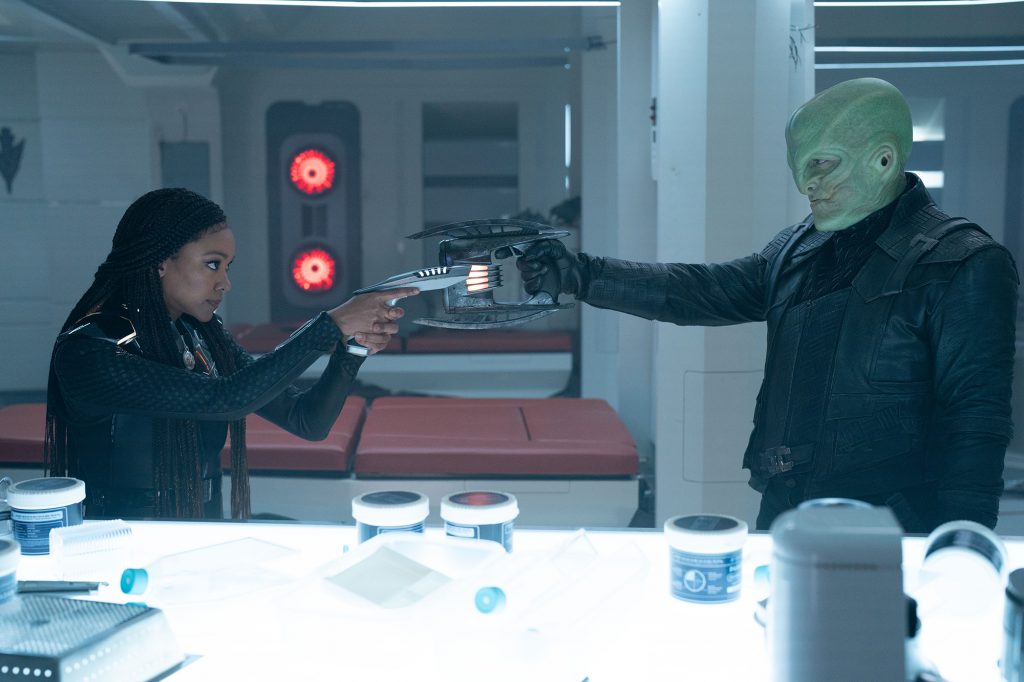
Burnham, Book, Moll, and L’ak face off in sickbay, where Burnham makes a startling connection between L’ak and a particular dilemma he is facing. The criminal pair hope to use the Progenitor treasure to clear L’ak’s Breen blood bounty. Yes, L’ak is Breen, that enigmatic and masked species from Deep Space Nine . Neato!
The rest of the episode bounces between what’s happening on the Enterprise , and flashing back to how Moll and L’ak first met and became romantically involved. Moll, the courier, would do business on the Breen space station on which L’ak, a member of a royal Breen family, was posted. The two connected over L’ak’s recent demotion and efforts to fight the embarrassment that came with it.
Over some time, the two became nearly inseparable, and L’ak even took the bold step with Moll by showing her his face – a big deal in Breen culture, as keeping their masks on allows them to retain their true, semi-transparent form, and not the solidified appearance we’ve seen on L’ak. Their relationship is tested when L’ak’s superior (and uncle), Primarch Ruhn ( Tony Nappo ) decides to interrupt their courtship. L’ak doesn’t take kindly to being asked to kill Moll, so the Breen turns on his own people, earns a Breen blood bounty, and flees with Moll. The pair now share a goal: earn enough latinum to retire on an (unnamed) fabled planet somewhere in the Gamma Quadrant, free from the trials and hardships of the courier life.
Suffice it to say, “Mirrors” is most memorable because it casts a welcome light on the shadowed backstory of this season’s main villains. Moll and L’ak are now a relatable pair, star-crossed lovers who are hell-bent on earning themselves a happy ending. As much as we don’t want to see the Progenitors’ tech get into the wrong hands, who now doesn’t want to see everything work out for Moll and L’ak?
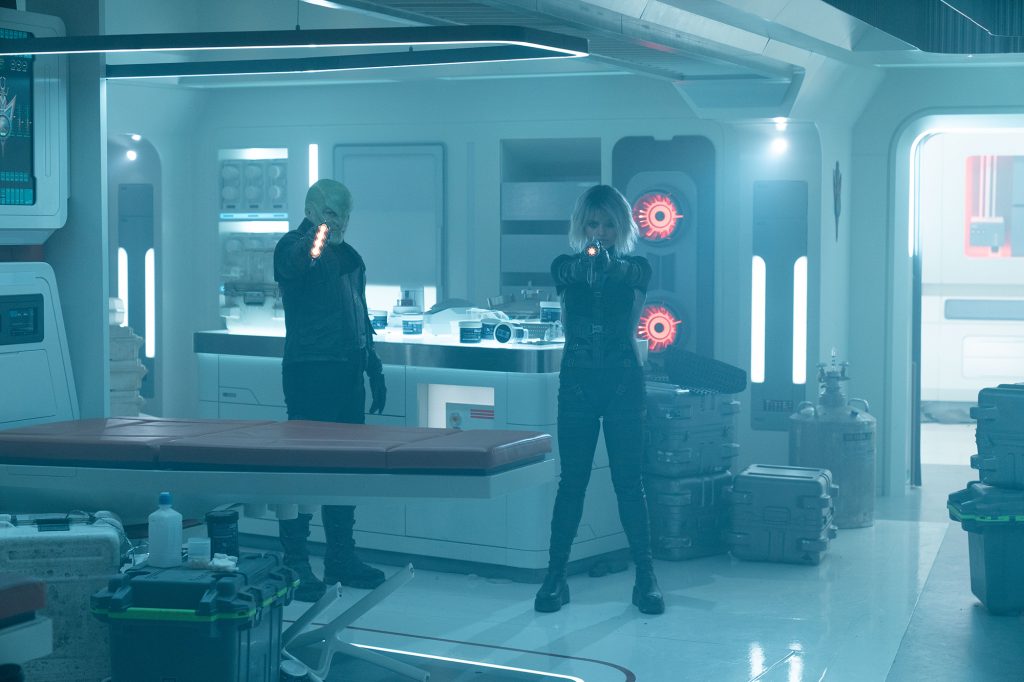
Anyway, the quartet still need to get off the Enterprise , but the shuttle on which Burnham and Book arrived is destroyed by the turbulent pocket of space. With mere minutes to spare before the Enterprise is destroyed by the wormhole’s tiny aperture, Book and Moll share some last-minute words about their shared relationship with the late Cleveland Booker, and how Book hopes Moll makes the right choices regarding her quest for the Progenitor tech. Burnham, meanwhile, engages in a melee with L’ak, and the Breen ends up injured and inadvertently relinquishes control to Burnham of the next map piece in the Progenitor puzzle. The courier and disgraced Breen end up escaping the ship in a convenient Terran warp pod, leaving the chase between our heroes and enemies for another day.
“If we hit it precisely with a sequential hexagonal pattern, it should stay open for approximately sixty seconds. But once it collapses, it’s gone for good.” “Why hexagonal?” “Doesn’t matter… it’ll work.” – Adira ( Blu del Barrio ), Rayner, and Stamets as the crew finds a way to get the wormhole aperture bigger. We think this line from Stamets is reflective of the evolving working relationship between the results-orientated Rayner and the crew, and how this relationship is getting better the longer Rayner is first officer.
Burnham devises a novel way to signal her first officer for help in getting the Enterprise through the aperture: a pulsing tractor beam emitting from the Enterprise , shot through the wormhole’s opening, in a numerical sequence featured in a famous play from Kellerun culture. Rayner is then able to lead his crew to devise a way to pull the Enterprise into normal space.
The sequence where Rayner is faced with command of a ship tasked with the near-impossible rescue of his captain is the best of the episode. It’s no secret Rayner was knocked down a few pegs after his demotion and reassignment to Discovery , but that lack of confidence and inner angst is demolished thanks to Rayner listening and working with his bridge crew to save the Enterprise . Plenty of lesser-known bridge officers get a say in how Discovery could help the Mirror ship, and lightning-fast decision-making shows Rayner back on his game.
The last element to note about this episode is some emotional trouble Doctor Hugh Culber ( Wilson Cruz ) is having. Tilly provides an outlet for this angst. Culber explains the experiences he’s had in the last few years – namely dying, coming back to life, and being a Trill host – really put into perspective the intellectual journey he is on in the face of the Progenitor’s quest. Tilly helps him realize he isn’t only experiencing an intellectual quest, but a spiritual one. This conversation is just another instance of Discovery setting up some wild expectations for what the crew might ultimately discover at the end of the season – something beyond the bounds of science, perhaps?
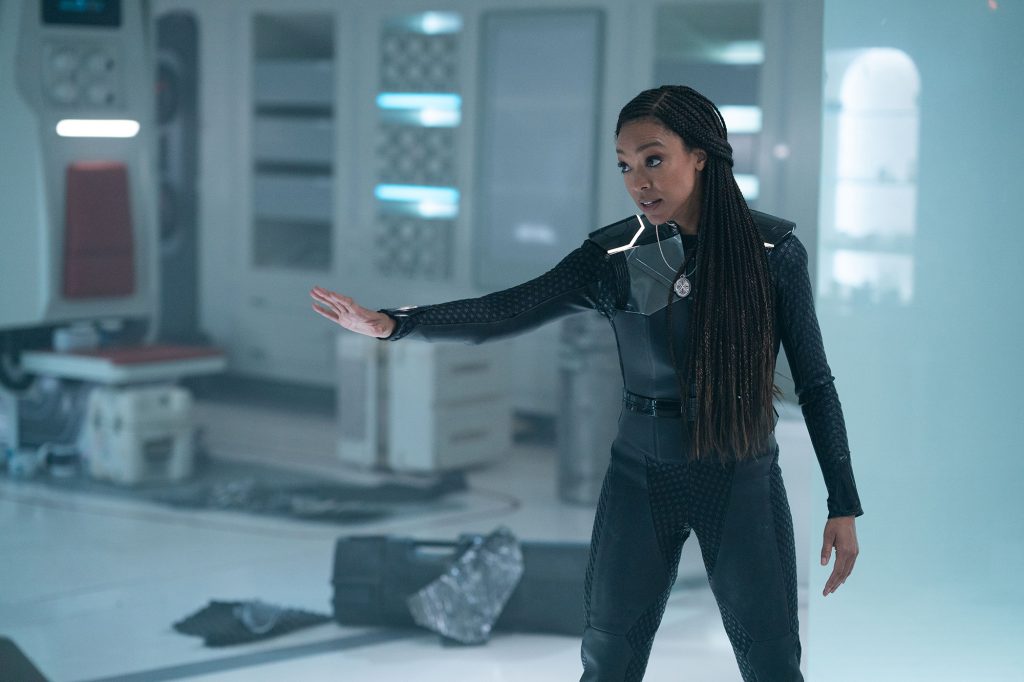
Even though their prey gets away again, Burnham and her crew have the next clue in the Progenitor puzzle, and it is hiding in the I.S.S. Enterprise ’s sickbay. Hidden in the map piece Burnham grabbed from L’ak is a vial, which Stamets will analyze soon. Burnham learns the crew who escaped from the I.S.S. Enterprise ended up in the Prime Universe and were able to start new lives. A Terran scientist aboard the Enterprise , Dr. Cho, ended up being a branch admiral, and we’re meant to assume she was one of the scientists on Dr. Vellek’s team hundreds of years ago as they studied the Progenitor tech. Dr. Cho then hid her piece of the Progenitor puzzle aboard her old ship as a symbolic gesture of her ability to find freedom in a new universe.
Discovery continues its final season with another thumbs-up episode that serves an important lore-building role in the franchise. Seeing the Breen again is a joy, especially since we were staring at one the whole time and never knew it. And how striking was that Breen space station where L’ak was based? Another important note for Star Trek historians is that now the Mirror Universe Enterprise is in the 32 nd century, and stationed near Earth thanks to Joann Owosekun and Keyla Detmer piloting the ship back to Federation space. Will we see that ship again this season?
As the Progenitor puzzle deepens, so do the emotional stakes for our crew, exemplified by Culber’s introspective journey, the subtle reignition of Book and Burnham’s relationship, and Rayner’s triumphant return to leadership. We’re now at the halfway point in this season, so there’s still plenty of time for surprises, emotional consequences, and expectation-setting for this eagerly awaited treasure.
Stray Thoughts:
- Hopefully, you’re watching this episode with subtitles on, because goodness is it hard to hear what masked Breen says.
- The Mirror Universe version of the U.S.S. Enterprise was last seen in the Original Series episode “Mirror, Mirror,” albeit this wasn’t the Strange New Worlds version of the ship. Likewise, the Terran version of Spock, whom Booker asks if Burnham ever met, was in that same episode.
- How did Adira conclude they were the one who brought the time bug aboard Discovery ?
- Why didn’t Burnham and Book try talking down Moll and L’ak before diving into the room with the holo-projected doubles?
New episodes of Star Trek: Discovery stream Thursdays on Paramount+ , this season stars Sonequa Martin-Green (Captain Michael Burnham), Doug Jones (Saru), Anthony Rapp (Paul Stamets), Mary Wiseman (Sylvia Tilly), Wilson Cruz (Dr. Hugh Culber), David Ajala (Cleveland “Book” Booker), Blu del Barrio (Adira) and Callum Keith Rennie (Rayner). Season five also features recurring guest stars Elias Toufexis (L’ak) and Eve Harlow (Moll).
Stay tuned to TrekNews.net for all the latest news on Star Trek: Discovery , Star Trek: Prodigy , Star Trek: Strange New Worlds , Star Trek: Lower Decks , and more.
You can follow us on X , Facebook , and Instagram .

Kyle Hadyniak has been a lifelong Star Trek fan, and isn't ashamed to admit that Star Trek V: The Final Frontier and Star Trek: Nemesis are his favorite Star Trek movies. You can follow Kyle on Twitter @khady93 .

Your email address will not be published. Required fields are marked *
Trending Articles

Review: Star Trek: Picard – Firewall Seven of Nine, a heroine who has resurged in popularity thanks to Jeri Ryan’s return to the franchise...
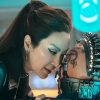
An article celebrating the longevity of the Star Trek franchise has given us our first look at Michelle Yeoh’s upcoming Star Trek: Section 31...
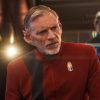
Preview: Star Trek: Discovery 505 “Mirrors” The fifth episode of Star Trek: Discovery’s fifth and final season “Mirrors” premieres this Thursday, April 25. The...

Star Trek: Discovery Season 5 stumbles with “Jinaal” Discovery’s voyage to the ultimate treasure brings Captain Michael Burnham and her crew to Trill, where...
- Election 2024
- Entertainment
- Newsletters
- Photography
- Personal Finance
- AP Investigations
- AP Buyline Personal Finance
- AP Buyline Shopping
- Press Releases
- Israel-Hamas War
- Russia-Ukraine War
- Global elections
- Asia Pacific
- Latin America
- Middle East
- Election Results
- Delegate Tracker
- AP & Elections
- Auto Racing
- 2024 Paris Olympic Games
- Movie reviews
- Book reviews
- Personal finance
- Financial Markets
- Business Highlights
- Financial wellness
- Artificial Intelligence
- Social Media
Long-lost first model of the USS Enterprise from ‘Star Trek’ boldly goes home after twisting voyage
The first model of the USS Enterprise is displayed at Heritage Auctions in Los Angeles, April 13, 2024. The model — used in the original “Star Trek” television series — has been returned to Eugene “Rod” Roddenberry, the son of “Star Trek” creator Gene Roddenberry, decades after it went missing in the 1970s. (Josh David Jordan/Heritage Auctions via AP)
Joe Maddalena, executive vice president of Heritage Auctions, left, and Eugene “Rod” Roddenberry, the son of “Star Trek” creator Gene Roddenberry, shake hands over the recently recovered first model of the USS Enterprise at the Heritage Auctions in Los Angeles, April 13, 2024. The model — used in the original “Star Trek” television series — has been returned to Eugene, decades after it went missing in the 1970s. (Josh David Jordan/Heritage Auctions via AP)
Joe Maddalena, executive vice president of Heritage Auctions, left, and Eugene “Rod” Roddenberry, the son of “Star Trek” creator Gene Roddenberry, view the recently recovered first model of the USS Enterprise at Heritage Auctions in Los Angeles, April 13, 2024. The model — used in the original “Star Trek” television series — has been returned to Eugene, decades after it went missing in the 1970s. (Josh David Jordan/Heritage Auctions via AP)
- Copy Link copied
DALLAS (AP) — The first model of the USS Enterprise — used in the opening credits of the original “Star Trek” television series — has boldly gone back home, returning to creator Gene Roddenberry’s son decades after it went missing.
The model’s disappearance sometime in the 1970s had become the subject of lore, so it caused a stir when it popped up on eBay last fall. The sellers quickly took it down, and then contacted Dallas-based Heritage Auctions to authenticate it. Last weekend, the auction house facilitated the model’s return.
Eugene “Rod” Roddenberry, CEO of Roddenberry Entertainment, said he’s thrilled to have the model that had graced the desk of his father, who died in 1991 at age 70.
“This is not going home to adorn my shelves,” Roddenberry said. “This is going to get restored and we’re working on ways to get it out so the public can see it and my hope is that it will land in a museum somewhere.”
AP AUDIO: Long-lost first model of the USS Enterprise from ‘Star Trek’ boldly goes home after twisting voyage.
AP correspondent Margie Szaroleta reports on the return of the original model of the USS Enterprise from the TV show “Star Trek.”
Heritage’s executive vice president, Joe Maddalena, said the auction house was contacted by people who said they’d discovered it a storage unit, and when it was brought into their Beverly Hills office, he and a colleague “instantly knew that it was the real thing.”
They reached out to Roddenberry, who said he appreciates that everyone involved agreed returning the model was the right thing to do. He wouldn’t go into details on the agreement reached but said “I felt it important to reward that and show appreciation for that.”
Maddalena said the model vanished in the 1970s after Gene Roddenberry loaned it to makers of “Star Trek: The Motion Picture,” which was released in 1979.
“No one knew what happened to it,” Rod Roddenberry said.
The 3-foot (0.91-meter) model of the USS Enterprise was used in the show’s original pilot episode as well as the opening credits of the resulting TV series, and was the prototype for the 11-foot (3-meter) version featured in the series’ episodes. The larger model is on display at the Smithsonian’s National Air and Space Museum.
The original “Star Trek” television series, which aired in the late 1960s, kicked off an ever-expanding multiverse of cultural phenomena, with TV and movie spinoffs and conventions where a fanbase of zealous and devoted Trekkies can’t get enough of memorabilia.
This USS Enterprise model would easily sell for more than $1 million at auction, but really “it’s priceless,” Maddalena said.
“It could sell for any amount and I wouldn’t be surprised because of what it is,” he said. “It is truly a cultural icon.”
Roddenberry, who was just a young boy when the model went missing, said he has spotty memories of it, “almost a deja vu.” He said it wasn’t something he’d thought much about until people began contacting him after it appeared on eBay.
“I don’t think I really, fully comprehended at first that this was the first Enterprise ever created,” he said.
He said he has no idea if there was something nefarious behind the disappearance all those decades ago or if it was just mistakenly lost, but it would be interesting to find out more about what happened.
“This piece is incredibly important and it has its own story and this would be a great piece of the story,” Roddenberry said.
Thankfully, he said, the discovery has cleared up one rumor: That it was destroyed because as a young boy, he’d thrown it into a pool.
“Finally I’m vindicated after all these years,” he said with a laugh.

IMAGES
VIDEO
COMMENTS
Design. On Star Trek: The Original Series, the transporter was portrayed as a platform on which characters stand before being engulfed by a beam of light and transported to their destination.The transporter's special effect was originally created by turning a slow-motion camera upside down and photographing some backlit shiny grains of aluminium powder that were dropped between the camera and ...
(Star Trek Phase II: The Lost Series, p. 96) For that series, a "transporter station" was to have been incorporated into the Enterprise bridge, complete with a working transporter. (Star Trek Phase II: The Lost Series, p. 20) This was to have served as an equipment transporter, for beaming such things as small tools to the bridge.
Star Trek sometimes takes liberties with real physics. MacDonald noted the depiction of gravity waves in Season 4 of Star Trek: Discovery was depicted inaccurately because it was more visually appealing. It is a television series, after all. Still, Star Trek tries to account for these things. In certain episodes when transporter "technobabble ...
The transporter has been a staple for Star Trek ever since The Original Series debuted in 1966. The device is capable of teleporting solid objects and living organisms from one point to another ...
In The Original Series episode "The Enemy Within," a transporter accident creates two Captain Kirks (one comically evil, of course ― though unlike Evil Spock he regrettably doesn't sport a ...
Transporter accidents have killed people in many gruesome ways. In " Star Trek: The Motion Picture " (1979), memorably, some new officers experience a transporter malfunction and re-materialize ...
Realm of Fear: Directed by Cliff Bole. With Patrick Stewart, Jonathan Frakes, LeVar Burton, Michael Dorn. Overcoming his fear of transporter, Lt. Barclay joins an away team, only to find something in the beam with him.
Star Trek: Created by Gene Roddenberry. With Leonard Nimoy, William Shatner, DeForest Kelley, Nichelle Nichols. In the 23rd Century, Captain James T. Kirk and the crew of the U.S.S. Enterprise explore the galaxy and defend the United Federation of Planets.
The transporter is one of Star Trek's signature technologies but it was invented out of Star Trek: The Original Series' budgetary necessities because it was too cost-prohibitive to show the Enterprise land on a planet every week in the 1960s. Transporters were a much more sci-fi method of letting Star Trek's characters 'beam' onto a planet and ...
Star Trek: The Original Series season 2. List of episodes. " Mirror, Mirror " is the fourth episode of the second season of the American science fiction television series Star Trek. Written by Jerome Bixby and directed by Marc Daniels, it was first broadcast on October 6, 1967. The episode involves a transporter malfunction that swaps Captain ...
The biggest problem with achieving teleportation is largely down to how advanced and complex most organisms and objects are. Star Trek transporter tech works by breaking down matter such as living ...
Creating the original STAR TREK energize effect. Watch on. Shanks told Vice: "From my research it started with them using aluminum silver shavings, and just dropping it in front of the camera ...
During the earlier time period of Star Trek: Enterprise, the transporter is a relatively new innovation. The first episode introduced a winged shuttlepod, two of which were carried aboard ship. ... Like the shuttlecraft of Star Trek: The Original Series, the Space Shuttle orbiters were used interchangeably to carry crew, cargo or exploration ...
Star Trek: Transporter Series (1998): 5″ Figures. Playmates released a brand new series in 1998 called the Transporter Series, which featured each figure in the middle of being transported or "beamed". The first wave was comprised of Original Series characters while the second wave belonged to the Next Generation characters.
Star Trek: The Original Series — Kirk is Split into Two. In this Season One episode, written by renowned sci-fi/ horror writer Richard Matheson, some yellow ore gets on the transporter and Kirk experiences the first transporter malfunction in Star Trek 's televised history. He's split into two Kirks; a "good" version and an "evil ...
This is my favorite transporter scene from ST:TOS. Do you agree, or is there another one you think is better?Video by Porfle Popnecker. I neither own nor cla...
The Enemy Within: Directed by Leo Penn. With William Shatner, Leonard Nimoy, DeForest Kelley, Grace Lee Whitney. A transporter malfunction splits Captain Kirk into two halves: one meek and indecisive, the other violent and ill tempered. The remaining crew members stranded on the planet cannot be beamed up to the ship until a problem is fixed.
Find many great new & used options and get the best deals for Star Trek Classic Playmates Toys 1998 TRANSPORTER Series Hikaru Sulu Figure #1 at the best online prices at eBay! Free shipping for many products!
The "Star Trek" transporter special effect may not seem significant today, especially with the advent of CGI characters and filming entire movies and TV shows with a green screen. However, there ...
Yeoman Janice Rand. Star Trek - Transporter Series - Starfleet Command. Released in 1998 by Playmates. Add to Collection - Add to Wishlist - Contribute Info. 14 Items Found. A complete checklist of the Star Trek - Transporter Series (Playmates) action figure toy series to help you complete your collection.
Series: Star Trek: The Original Series; Episode: Season 2, Episode 4, "Mirror, Mirror" In "Mirror, Mirror," Kirk, McCoy, Uhura, and Scotty are sent to a mirror universe after a transporter accident during an ion storm. In this alternate reality, the Enterprise is a warship for the malevolent Terran Empire.
Makes a great gift for fans of the popular Sci-Fi TV series. Star Trek resin and glass snow globe with light and sound features design of a transporter with Captain Kirk, Spock and Uhura. Press the button to start a light and sound show based on the classic original Star Trek series. Requires three (3) replaceable AAA batteries, included.
J.J. Abrams' 2009 "Star Trek" feature film wasn't so much an adaptation of the 1966 TV series as it was a film version of how non-Trekkies view the franchise. To explain: on the TV series, Captain ...
Star Trek TV series. Star Trek: The Next Generation ( TNG) is an American science fiction television series created by Gene Roddenberry. It originally aired from September 28, 1987, to May 23, 1994, in syndication, spanning 178 episodes over seven seasons. The third series in the Star Trek franchise, it was inspired by Star Trek: The Original ...
Three Star Trek ships have crossed between the Mirror Universe and the Prime Universe. Introduced in the classic episode of Star Trek: The Original Series, "Mirror, Mirror," the Mirror Universe is a dark parallel reality featuring evil versions of Star Trek's characters.Although the Mirror Universe has popped up on several Star Trek series since its introduction, starships rarely make the jump ...
Seasons 2 and 3 also are available on the Pluto TV "Star Trek" channel in Switzerland, Germany and Austria. The series streams on Super Drama in Japan, TVNZ in New Zealand, and SkyShowtime in Spain, Portugal, Poland, The Nordics, The Netherlands, and Central and Eastern Europe and also airs on Cosmote TV in Greece.
Star Trek: Picard series finale "The Last Generation" Review: A perfect sendoff to an unforgettable crew ... But first, the pair check out the transporter room, which holds some strange items ...
1 of 8 | . The first model of the USS Enterprise is displayed at Heritage Auctions in Los Angeles, April 13, 2024. The model — used in the original "Star Trek" television series — has been returned to Eugene "Rod" Roddenberry, the son of "Star Trek" creator Gene Roddenberry, decades after it went missing in the 1970s.